
|

Shane Commentary
|
Perilous State of Alt. Meat Producers
|
09/25/2025 |
|
If the Q2 results of Beyond Meat (BYND) released on August 8th are any indication, the alt meat market is floundering and survives only by regular infusions of funding by venture capital firms. For the second quarter ending June 28th, BYND posted net revenue of $75.0 million, down 19.6 percent from the corresponding quarter in fiscal 2024. Net loss increased by three percent to $34.9  million. Lower revenue was attributed to diminished volume in both domestic and international markets but specifically in the consumer segments. Gross margin declined from 14.7 percent in Q2 2024 to 11.5 percent for the most recent quarter. Trailing twelve-month operating margin was -44 percent and profit margin, -50 percent. It is noted that inventory valued at $110,000 represents 146 percent of Q2 sales. million. Lower revenue was attributed to diminished volume in both domestic and international markets but specifically in the consumer segments. Gross margin declined from 14.7 percent in Q2 2024 to 11.5 percent for the most recent quarter. Trailing twelve-month operating margin was -44 percent and profit margin, -50 percent. It is noted that inventory valued at $110,000 represents 146 percent of Q2 sales.
Among other expenses, Beyond Meat persists in spending an inordinate amount on research and development with the most recent quarter corresponding to 7.7 percent of revenue. This would not appear out of place with a high tech or pharmaceutical company. The balance sheet shows assets of $691.7 million offset by long term debt of $1,257 million. Free cash flow has consistently declined and the company burnt through $125 million over the past 12 months.
Following downgrades from major analysts, BYND has fallen from a 52-week high of $7.60 to a low of $2.22 with a 50-day moving average of $2.88. As of August 29th, 42 percent of the float was short. Failure to either achieve or improve profitability is reflected in a decline in market cap from $441 million in mid-September 2024 to $218 million during the week of September 23rd 2025.
CEO Ethan Brown announced layoffs that are expected to save up to $7 million annually in the following fiscal year (if there is one for BYND) but will incur a $1.3 million charge. It is not possible to restore profitability with an eroding market simply by reducing costs. The decision to eliminate “Meat” from the name of the company to simply Beyond, is akin to moving deck chairs around on the Titanic. Interestingly Josh Tetrick in his ongoing shell game of names for his companies also uses a universal appellation of Just.

Basically, attempting to sell ersatz meat products at prices higher than the items they wish to replace coupled with inferior organoleptic properties is not a good hand to play. John Boken newly appointed Chief Transformation Officer from turnaround company Alixpartners LLP will not be able to reverse the downward slide. The obvious question is how Beyond Meat and presumably its major competitors will survive as independent entities. Many companies have withdrawn from the market or have hidden their losses by consolidating divisions as with Maple Leaf Foods.
At the end of the day if prospects for plant-based alt meat are dismal, investors will undergo an even shorter haircut by funding cell-cultured substitutes.
In reviewing the available animal-sourced protein, beef is currently expensive and will remain so given the need to reestablish the national herd and to combat New-world screwworm (Cochliomyia hominivorax) that has interrupted importation of live cattle from Mexico. Consumers have continued to purchase pork but chicken remains the protein of choice. Broiler meat will comprise 45 percent of domestic red meat and poultry RTC production in 2026 followed by pork at 26 percent and beef attaining 24 percent of U.S. output.

|
Why is the Department of Defense Supporting Cell-Cultured Protein
|
12/11/2024 |
|
 The Department of Defense has awarded nine grants under the Bio-Industrial Manufacturing Program intended to increase the production of protein ingredients using fungi and other technologies centered on bio-fermentation. According to Heidi Shyu, Undersecretary of Defense for Research and Engineering, the “Distributed Bio-Industrial Manufacturing Program of the Department of Defense involves investment in a diverse set of companies to help transition U.S. bio-industrial manufacturing from the laboratory to a network of large-scale production facilities able to fortify defense-supply chains”. The Department of Defense has awarded nine grants under the Bio-Industrial Manufacturing Program intended to increase the production of protein ingredients using fungi and other technologies centered on bio-fermentation. According to Heidi Shyu, Undersecretary of Defense for Research and Engineering, the “Distributed Bio-Industrial Manufacturing Program of the Department of Defense involves investment in a diverse set of companies to help transition U.S. bio-industrial manufacturing from the laboratory to a network of large-scale production facilities able to fortify defense-supply chains”.
Awards include: -
- $1.4 million to Nature’s Fynd for development of fungal-based proteins.
- Liberation Labs received $1.4 million for precision-fermented bioproducts with potential defense application.
- The Every Company received $2 million to ascertain whether the manufacture of products currently undertaken in Europe and Asia (really?) could be relocated to the U.S.
 Demonstration of success from the initial grants would make companies eligible to receive more substantial awards of up to $100 million for the implementation of production facilities. Demonstration of success from the initial grants would make companies eligible to receive more substantial awards of up to $100 million for the implementation of production facilities.
The DBMI program has awarded $60 million to 34 companies since inception. It is questioned whether the Department of Defense should be involved in funding speculative projects that may enhance food production. Surely, this is an area to be evaluated by the Department of Agriculture with a complement of experienced scientists in the areas of food technology and microbiology.
Ms. Shyu, expenditure on defensive and offensive systems we can accept ---but lab-grown meat?

|
FSIS Stakeholder Meetings over Proposed Salmonella Rule
|
11/11/2024 |
|
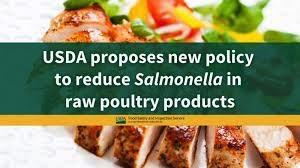 USDA Food Safety and Inspection Service will hold two virtual public meetings for stakeholders on December 3rd and 5th respectively to be announced formally in the Federal Register. USDA Food Safety and Inspection Service will hold two virtual public meetings for stakeholders on December 3rd and 5th respectively to be announced formally in the Federal Register.
The FSIS has extended the comment period relating to the proposed Salmonella standard to January 17, 2025. The far-reaching proposal would restrict levels to ten colony forming units per gram of product with specific reference to one or more designated serotypes of Salmonella.
The highly contentious rule is was developed by FSIS in response to the claimed 125,000 chicken-associated and 40,000 turkey-associated cases of salmonellosis each year as apparently determined by the Centers for Disease Control and Prevention.
According to Dr. Emilio Esteban, USDA Undersecretary for Food and Safety, the Agency believes that the designated Salmonella serotypes can be suppressed by preharvest measures stating, “We know there are things you can do with the water, with the feed, with the way you raise the animals, the environment and vaccination.” USDA has been reluctant to specify measures that will absolutely reduce Salmonella contamination on carcasses to comply with the proposed standard.
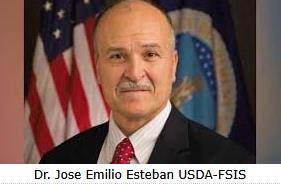 It is obvious that attempting to conform to the standard will disrupt ongoing production, require investment in equipment and consumables that may or may not have beneficial effect. If processors are to comply with the proposed standard, batching and assay will be required before release of product. All these measures of doubtful benefit will add considerably to the cost of production and will ultimately be borne by consumers and producers with questionable quantifiable benefit. The USDA-FSIS has not provided the results of pilot studies that confirm that aspects of the proposed rule or its entirety are achievable or that the actions to be taken by the Industry will produce any direct reduction in poultry-associated salmonellosis. It is obvious that attempting to conform to the standard will disrupt ongoing production, require investment in equipment and consumables that may or may not have beneficial effect. If processors are to comply with the proposed standard, batching and assay will be required before release of product. All these measures of doubtful benefit will add considerably to the cost of production and will ultimately be borne by consumers and producers with questionable quantifiable benefit. The USDA-FSIS has not provided the results of pilot studies that confirm that aspects of the proposed rule or its entirety are achievable or that the actions to be taken by the Industry will produce any direct reduction in poultry-associated salmonellosis.
It is possible that the proposed rule will be shelved by the incoming Administration based on impracticality and evident cost.

|
Will Governments Bail Out Cell-Cultured Meat?
|
10/16/2024 |
|
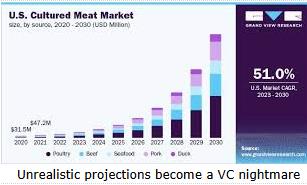 The financial plight of cell-cultured aspirant meat producers was highlighted at the recent Future Food-Tech Innovation Summit held in London. Data assembled by Preliminary Ag Fund indicated that venture capital inflows peaked at $1 billion in 2021 dropping to $800 million in 2022 and then falling to $180 in 2023. Only $50 million has been raised year-to-date. The financial plight of cell-cultured aspirant meat producers was highlighted at the recent Future Food-Tech Innovation Summit held in London. Data assembled by Preliminary Ag Fund indicated that venture capital inflows peaked at $1 billion in 2021 dropping to $800 million in 2022 and then falling to $180 in 2023. Only $50 million has been raised year-to-date.
The tightening of purse strings by venture capital investors is attributed to the failure of startups to achieve commercial scale production using bioreactors.
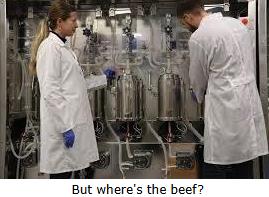 An early entrant, Mosa Meats of Holland is still receiving an inflow of financial support but Robert Jones, VP global public affairs observed, “There’s a valley of death we are not going to cross as an industry without a massive infusion of public investment.” There is some interest in using public funds to support producers. Jones noted $65 million designated by the Government of Holland in 2022 that has yet to be disbursed. Great Britain appears disposed to support research on alternatives to meat although direct funding of individual companies appears unlikely. An early entrant, Mosa Meats of Holland is still receiving an inflow of financial support but Robert Jones, VP global public affairs observed, “There’s a valley of death we are not going to cross as an industry without a massive infusion of public investment.” There is some interest in using public funds to support producers. Jones noted $65 million designated by the Government of Holland in 2022 that has yet to be disbursed. Great Britain appears disposed to support research on alternatives to meat although direct funding of individual companies appears unlikely.
Peter McGuinness, CEO of Impossible Foods a producer of plant-based meat alternatives opined that the emerging cell cultured meat industry was responsible for self-inflicted harm with unsubstantiated claims and hyping projections of future demand. From inception, cell-cultured meat has been a case of over-promise and under delivery.
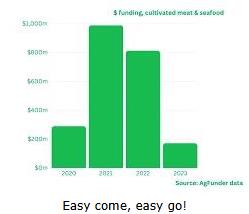
Apart from the technical restraints to achieving commercial-scale production, a number of nations in the E.U. including France and Italy have passed laws banning sale of cell-cultured meat. The perceived threat to conventional beef, pork and chicken production has motivated state laws in the U.S. banning sale of cell-cultured meat or imposing onerous labeling requirements.
McGuinness is correct in his assessment that “the early rhetoric was good for raising money in a VC context but at the same time the language being used was inflammatory and was really not received well by a lot of actors in the conventional industry.” Negative publicity followed revelations of deception by Upside Foods, successor to Memphis Meats. The egregious self-promotion of companies including Eat Just operated by Josh Tetrick did not help image of cell-cultured meat. After termination of activities in Singapore his enterprises are mired in lawsuits over breach of contract and failure to pay for equipment designed and fabricated by suppliers. Creditors of companies supplying aspirant manufacturers should have performed due diligence and exercised the principle of caveat vendor.
Going forward there will be a lot of stainless steel tanks, tubes and paraphernalia selling for cents on the dollar.

|
NCC Weighs in on Child Labor
|
07/19/2024 |
|
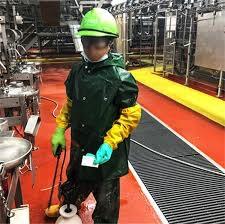 The poultry industry has developed a Task Force to Prevent Child Labor following revelations that contractors were employing minors to clean plants and to work on portioning and deboning lines. The poultry industry has developed a Task Force to Prevent Child Labor following revelations that contractors were employing minors to clean plants and to work on portioning and deboning lines.
Recently a roundtable with a decidedly partisan orientation considered child labor. The event was entitled “The Exploitation Crisis: How the U.S. Government is Failing to Protect Migrant Children from Trafficking and Abuse”, justifiably criticized the Office of Refugee Resettlement, Unaccompanied Children’s Program.
The NCC maintains that the problem of child labor and employment of aliens is independent of whatever administration is in office and will persist, absent a radical reform of immigration legislation.
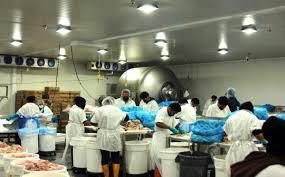 The Task Force to Prevent Child Labor developed by the poultry industry clearly states that there is a zero tolerance for unlawful hiring of minors. The issue is noncompetitive and requires collaboration among all sectors of poultry production. The Task Force has pointed out inadequacies in the E-Verify system where Social Security Numbers can be duplicated or be assumed from a deceased individual. Despite following procedures, producers can be placed in the invidious position of employing an illegal worker presenting fraudulent documentation. The Task Force to Prevent Child Labor developed by the poultry industry clearly states that there is a zero tolerance for unlawful hiring of minors. The issue is noncompetitive and requires collaboration among all sectors of poultry production. The Task Force has pointed out inadequacies in the E-Verify system where Social Security Numbers can be duplicated or be assumed from a deceased individual. Despite following procedures, producers can be placed in the invidious position of employing an illegal worker presenting fraudulent documentation.
The Task Force has called for a stable, legal and permanent workforce to maintain productivity. The industry considers that the immigration system “is broken” and it is time for Congress to resolve the issue.
A number of integrators have adopted the expedient of using employment contractors to provide workers as a “cut-out” strategy. This approach is obviously inadequate but is a reflection of the need to recruit labor and invest in training to maintain a stable and productive workforce. Current legislation fails to satisfy the needs of both industry and agriculture. Unfortunately addressing deficiencies and upgrading immigration has become highly politicized. The reality is that agriculture and industrial operations are dependent on immigrants. With an aging population and a declining birth rate, the U.S. will need immigrants to become permanent residents contributing to social security and taxes. The alternative to a regulated and progressive immigration policy is for the U.S. to become like Japan and other nations with declining populations and a disproportionate number pensioners with inadequate financial contributions from younger workers.
Regrettably available workers come from Latin America and Asia and not Scandinavia. The U.S. population will change in ethnic composition with inevitable changes in culture, an unfortunate reality that is opposed by those committed to the status quo.
If we are to prosper as a nation we must develop a rational immigration policy free of racist overtones and contributing to acculturation to the U.S. for immigrants and their succeeding generations.

|
USDA Funding Meat Processing Projects of Questionable Viability
|
07/13/2024 |
|
 In 2021 the current Administration and specifically the Secretary of Agriculture confirmed their intent to disrupt the structure of U.S. meat and poultry production. They oppose large corporate enterprises that have grown through efficiency and productivity. This includes integration in the case of broiler and turkey production and the concentration of red meat production from packing through distribution and marketing. In 2021 the current Administration and specifically the Secretary of Agriculture confirmed their intent to disrupt the structure of U.S. meat and poultry production. They oppose large corporate enterprises that have grown through efficiency and productivity. This includes integration in the case of broiler and turkey production and the concentration of red meat production from packing through distribution and marketing.
As a counter to the existing structure that has developed over a century, the Administration has attempted to develop a counter-industry through funding small regional plants using public funds to provide capital for expansion of facilities and installation of equipment.
 The USDA Rural Development Program has made 59 awards amounting to $291 million under the Meat and Poultry Processing Expansion Program and the Local Meat Capacity Grant Program. Grants have ranged from $390,000 to $10 million with the intention of creating local opportunities for workers and livestock producers. The USDA Rural Development Program has made 59 awards amounting to $291 million under the Meat and Poultry Processing Expansion Program and the Local Meat Capacity Grant Program. Grants have ranged from $390,000 to $10 million with the intention of creating local opportunities for workers and livestock producers.
North State Processing LLC recently received $10 million to build a new plant in Hamlet, NC. to process cattle, ostrich, emu, water buffalo and alpaca. Cattle may be available, but justifying any plant on the other species appears highly speculative. Many of the projects are for startups with a heavy emphasis on tribal and underserved communities.
It is hoped that USDA is as adept at monitoring progress and accounting for funds provided as they are at distributing taxpayer dollars.
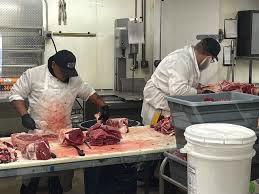
Given that the Administration intends to inject an additional $110 million “to strengthen the supply chain and increase independent meat and poultry processing capacity” the Department should be enjoined from additional grants until it can account for the $290 million assigned to date. As a corollary the USDA should explain how expenditures have altered the suppy of meat and poultry and reduced prices to consumers nationwide.

|
Proposed Poultry Grower Payment Systems and Capital Improvement Systems Rule
|
06/15/2024 |
|
 In an example of déjà vu Secretary of Agriculture Tom Vilsack has introduced the third in a series of rules under the Packers and Stockyards Act. The intention is to create “fairer markets which ultimately can lead to lower grocery prices.” In the first instance there is little evidence that poultry integrators are applying the tournament system to the detriment of integrators. It is also unfathomable how a rule that has as its ultimate effect of increasing the cost of production will lower prices to consumers. In an example of déjà vu Secretary of Agriculture Tom Vilsack has introduced the third in a series of rules under the Packers and Stockyards Act. The intention is to create “fairer markets which ultimately can lead to lower grocery prices.” In the first instance there is little evidence that poultry integrators are applying the tournament system to the detriment of integrators. It is also unfathomable how a rule that has as its ultimate effect of increasing the cost of production will lower prices to consumers.
Under the Obama Administration, Secretary Vilsack was instrumental in introducing restrictions on integrators that he approved within hours of the expiry of his term in office. This may well happen again.
 According to Andy Greene, USDA senior advisor for Fair and Competitive Markets, “this proposed rule is intended to provide growers with a clear base-price contract, a contracting partner that designs and operates any comparisons fairly and with access to the information that growers and the USDA need to identify and to halt coercive investment demands before growers take on large debits. The proposed rule will allow bonuses for performance but will not allow any reduction for suboptimal production parameters. Greater transparency will be required if contractors are obliged to make improvements that increase efficiency. According to Andy Greene, USDA senior advisor for Fair and Competitive Markets, “this proposed rule is intended to provide growers with a clear base-price contract, a contracting partner that designs and operates any comparisons fairly and with access to the information that growers and the USDA need to identify and to halt coercive investment demands before growers take on large debits. The proposed rule will allow bonuses for performance but will not allow any reduction for suboptimal production parameters. Greater transparency will be required if contractors are obliged to make improvements that increase efficiency.
The National Chicken Council representing integrators noted that the proposed rules that modify the existing relationship between contractors and integrators are designed to “address a problem that does not exist.”
Recent events including closing processing plants in areas where contractors have no alternative integrator has created hardship. Contractors operate with long term loans but are susceptible to the actions by integrators with respect to reducing volumes of production or even closing entire complexes. Under these circumstances, contractors unable to grow for other integrators, are obliged to find alternative uses for housing such as occurred with the failure of Townsend’s and the recent Dexter, MO. closure by Tyson Foods. In both cases, growers were able to convert housing to produce table eggs for Cal-Maine Foods.
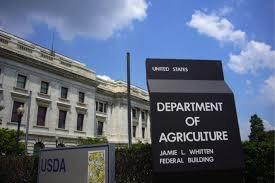
The question of enhancements requiring capital expenditure should be subject to negotiation between the contractor and integrator with either guarantees of continuation or some form of financial support. During the 1970’s when separate male and female feeding was introduced offering advantages to both contractor and integrator, farmers were required to make the appropriate capital investment with payback over an extended period.
The contractor-integrator system has served both parties and consumers over many decades. This is evidenced by the waiting list to acquire contracts and evidence that broiler contractors have a higher income than livestock and crop farmers operating similar acreage. Tom Vilsack, the longest serving USDA Secretary, has continually exhibited a socialistic trend and has demonstrated opposition to large-scale and efficient poultry, hog, and beef production. This is exemplified by attempting to support alternatives to existing production using the resources of the Commodity Credit Corporation and federal funding that has contributed to both inflation and the national debit. Problems that have arisen in the past year could be resolved using existing rules under the Packers and Stockyard Act. Introducing a far-reaching new rule will only add to production costs ultimately borne by contractor, shareholders and consumers.

|
Designation of Salmonella as an Adulterant in Stuffed, Raw Chicken Products
|
05/21/2024 |
|
The USDA-FSIS has proposed an effective zero tolerance for any Salmonella contamination in raw, stuffed chicken products. Opposition to the proposal is probably unjustified although is based less on risks associated with the specific product than the fear of extension to a wider range of chicken preparations. It is a matter of record that Attorney Robert Marler has submitted a petition to FSIS to designate numerous known pathogenic Salmonella as adulterants in all chicken whether whole birds, portions or further processed items.
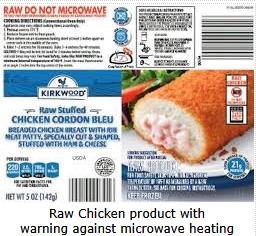
The situation with regard to raw, stuffed chicken products does not represent a major food safety concern. Over the past 25 years there have been 14 outbreaks and 200 illnesses
attributed to raw breaded products. These represent less than 0.1 percent of total consumption of chicken by volume but five percent of all chicken associated outbreaks.
The industry has justifiably contended that labeling should be adequate to inform consumers of the need to thoroughly cook raw breaded or stuffed chicken products. Unfortunately microwave reheating allows Salmonella and other potential pathogens to survive. The National Chicken Council noted, “There is no silver bullet nor a one-size-fits-all approach to food safety which is why we employ a multi-level strategy.” The NCC invokes science-based procedures and recommends handling and cooking properly in home and institutional kitchens.
From the perspective of an academic and a past researcher on Campylobacter infection, it is questioned why breaded and stuffed products are sold as raw rather than cooked presentations. If Salmonella is regarded as a risk, cooking during production would eliminate the problem. Since stuffed 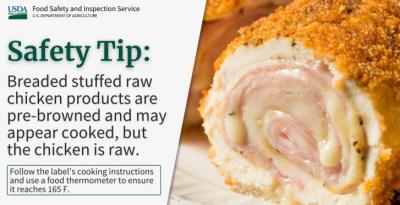 chicken products are marketed as lightly browned they create the deceptive perception of having been cooked. Labeling cannot overcome stupidity or negligence. If there are organoleptic reasons to continue marketing a raw, stuffed chicken product, irradiation using electron beam treatment could be applied as an effective kill step. By the same token, IQF products could also be free of non-spore forming bacterial pathogens including Salmonella, Campylobacter and Listeria. chicken products are marketed as lightly browned they create the deceptive perception of having been cooked. Labeling cannot overcome stupidity or negligence. If there are organoleptic reasons to continue marketing a raw, stuffed chicken product, irradiation using electron beam treatment could be applied as an effective kill step. By the same token, IQF products could also be free of non-spore forming bacterial pathogens including Salmonella, Campylobacter and Listeria.
It is highly likely that the FSIS will enforce the status of Salmonella as an adulterant for raw products irrespective of the opposition by the NCC. The possibility of FSIS extending restrictions beyond stuffed products to a wider range of chicken presentations is a distinct possibility with profound practical and legal implications..

|
Congressional Chicken Caucus Requesting Changes in WOAH Definitions
|
05/09/2024 |
|
To facilitate exports, members of Congress representing constituencies with significant chicken production have requested the Director of the USDA-APHIS, Dr. Michael Watson to petition the World Organization for Animal Health (WOAH) to revise the definition of “poultry”. Currently WOAH fails to distinguish between commercial production of chickens and turkeys from non-commercial operations that have negligible influence on exports. Embargos placed on entire states or counties have impeded exports from major broiler production and exporting areas including Georgia, Arkansas and North Carolina. Restrictions have been imposed by importing nations on U.S. states and regions as a result of outbreaks on farms that are not commercial operations unrelated to export.

It is the contention of the chicken caucus that the U.S. suffers from discrimination with respect to competitors including Brazil and Canada that are beneficiaries of exemptions or perhaps have failed to completely disclose the extent of outbreaks of HPAI.
The letter to Dr. Watson included, “Because WOAH is not taking prompt action on this important matter, APHIS as our Country’s representative to the international body must elevate this issue as an urgent priority for the sake of our farmers’ livelihoods and in order to maintain the value of American agriculture.” The letter noted that the U.S. Animal Health Association distinguishes among backyard, wild and commercial flocks in the context of international trade. The letter concluded, “America’s agriculture competitiveness depends on having fair, up-to-date global animal health rules which would provide producers with a level playing field.”
While the requested changes in definition are justified, it is questioned whether this will make any difference with respect to nations that discriminate against U.S. exports including China. This nation only conforms to international standards and agreements when it suits their interests as exemplified by their action since the emergence of the H5N1 panornitic.
It is however ironic that as a segment of the U.S. poultry industry, broiler producers are at this time opposed to vaccination against avian influenza, notwithstanding WOAH policy accepting immunization as an adjunct to biosecurity and quarantines. The concern by broiler producers is that introduction of vaccination even with appropriate monitoring and surveillance will imply that HPAI infection is  endemic. In reality, HPAI is both regionally and seasonally endemic and despite the depopulation of 80 million birds, over three years, the infection has not been eradicated. Given the epidemiology of the disease involving seasonal introduction by migratory waterfowl and marine birds, infection will persist. With gathering scientific and anecdotal evidence of aerogenous infection, albeit over short distances biosecurity, however intensive and efficient cannot provide absolute protection. endemic. In reality, HPAI is both regionally and seasonally endemic and despite the depopulation of 80 million birds, over three years, the infection has not been eradicated. Given the epidemiology of the disease involving seasonal introduction by migratory waterfowl and marine birds, infection will persist. With gathering scientific and anecdotal evidence of aerogenous infection, albeit over short distances biosecurity, however intensive and efficient cannot provide absolute protection.
Mitigation of the financial impact of avian influenza will not be achieved by changes in definitions and trade rules or continued futile attempts at ‘stamping out’. A structured and regulated program of vaccination of turkeys, egg-production flocks and breeders in areas at high risk of infection will lower the incidence rate of seasonal outbreaks. This will reduce the unlikely probability of H5N1 or other pathogenic influenza viruses infecting avian and mammalian livestock from becoming zoonotic. Acceptance of regional and sector-specific preventive vaccination should be the focus of APHIS representations to the WOAH and our trading partners.

|
No Cardio-Metabolic Benefits From Plant-Based Meat Analogs
|
04/16/2024 |
|
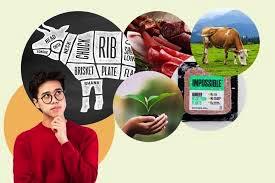 In an eight-week longitudinal study conducted in Singapore, no beneficial effect could be attributed to substitution of an omnivorous animal-based meat diet with plant-based meat analogues. The study was conducted over eight weeks, and involved 82 participants with an elevated risk of diabetes. In an eight-week longitudinal study conducted in Singapore, no beneficial effect could be attributed to substitution of an omnivorous animal-based meat diet with plant-based meat analogues. The study was conducted over eight weeks, and involved 82 participants with an elevated risk of diabetes.
The trial demonstrated a significant interaction (time x treatment) for dietary trans-fat that was increased with the animal-based diet. In contrast, fiber, sodium and potassium all increased with the plant-based meat analog diet. Glycemic homeostasis was better regulated in the subjects consuming the animal-based meat diet. Substitution of plant-based meat analogues in the diet had no effect on lipoprotein profile including low-density lipoproteins and cholesterol.
Health claims made by proponents of plant-based meat analogs will require careful review by health professionals, the FDA and health conscious consumers. This is especially important with respect to labels and advertising claims.
|
Animal Activists Persist in Litigating Poultry Line Speeds
|
03/12/2024 |
|
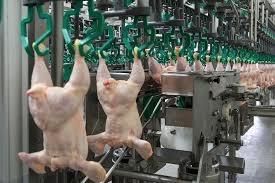 The USDA Food Safety and Inspection Service will continue to allow operation of line speeds of up to 175 birds per minute under a waiver due to expire at the end of March 2024. Increased line speeds are possible due to advances in the design and operation of killing, defeathering and evisceration equipment that incorporates a high degree of automation. Close to 50 plants now operate at up to 175 birds per minute without welfare issues relating to either flocks or workers. The USDA Food Safety and Inspection Service will continue to allow operation of line speeds of up to 175 birds per minute under a waiver due to expire at the end of March 2024. Increased line speeds are possible due to advances in the design and operation of killing, defeathering and evisceration equipment that incorporates a high degree of automation. Close to 50 plants now operate at up to 175 birds per minute without welfare issues relating to either flocks or workers.
Notwithstanding the reality, animal rights organizations including the HSUS, Animal Outlook, Mercy for Animals and kindred organizations are pursuing litigation to deprive the USDA of the right to grant waivers and to restrict line speeds in future rule-making. Secretary of Agriculture, Tom Vilsack, has assured the Senate Agriculture Committee that decisions on increased line speeds would be based on scientific evaluation.
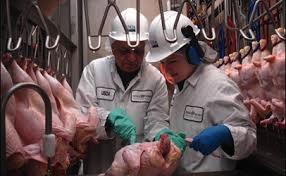
Petitioners opposing increased line speeds are less interested in the welfare of flocks than they are in their efforts to impose restraints and increase production costs for all animal protein. Legal action opposing the decisions of the USDA that contribute to efficiency and hence, profitability is an anathema to those opposed to intensive livestock production and ultimately, consumption of meat. Any restriction whether based on welfare or environmental issues that places a burden on livestock production is regarded by these groups as a victory.

|
South Africa Reconsidering Protection of the Domestic Broiler Industry
|
02/27/2024 |
|
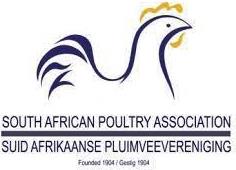 According to a February 20th USDA-FAS-GAIN Report (SF2024-0004) the Competition Commission of South Africa functioning under the Department of Trade, Industry and Competition will investigate the broiler industry in South Africa. The terms of reference are to determine whether the industry is “impeding, distorting or restricting competition in a way that violates the South African Competition Act.” In a statement on February 6th the Competition Commission believes that “There are market features within several markets in the poultry sector that may undermine competition with material implications for the industry and consumers.” According to a February 20th USDA-FAS-GAIN Report (SF2024-0004) the Competition Commission of South Africa functioning under the Department of Trade, Industry and Competition will investigate the broiler industry in South Africa. The terms of reference are to determine whether the industry is “impeding, distorting or restricting competition in a way that violates the South African Competition Act.” In a statement on February 6th the Competition Commission believes that “There are market features within several markets in the poultry sector that may undermine competition with material implications for the industry and consumers.”
The Competition Commission recognizes the ongoing demands for bail outs and requests for tariffs and anti-dumping duties. The Commission noted, “while acceding to these demands may protect the domestic industry, it may create negative consequences for consumers generally and low-income consumers in particular that are dependent on chicken for protein.”
The Commission’s Terms of Reference will be to determine whether current policy on protection restricts competition from breeding through to distribution. The Commission review will consider the impact of integration and control over feed and day-old chicks and the situation of small and medium-sized enterprises many of which are owned by “historically disadvantaged persons.” As in the U.S., the Commission will review the relationship between contract growers and integrators and will address “imbalances in bargaining power and information asymmetry”.
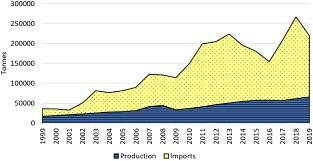
The public has been invited to submit comments to guide the investigations and deliberations of the Commission. It is anticipated that a final report will be completed within 18 months in accordance with statutory requirements.
In 2023, South Africa was ranked 18th among importers of U.S. broiler products with shipment of 44,324 metric tons valued at $42.4 million with a unit price of $957 per metric ton. Imports were 20 percent down on volume and 22 percent lower in value compared to 2022. Removal of tariffs and dumping duties would make the U.S. and other exporters more competitive to the disadvantage of the domestic industry. High costs of labor, ingredients and power have resulted in domestic production costs exceeding the landed cost of leg quarters from the U.S. and MDM and whole chicken from Brazil and the E.U. despite the transport differential.
The announcement of the Competition Commission inquiry coincides with a decision by the Trade Administration Commission to introduce rebates on boneless and bone-in chicken to increase supply and reduce cost to consumers.
The decision by the Government to establish an inquiry by the competition commission confirms that the political and lobbying power of the South African Poultry Association is waning.
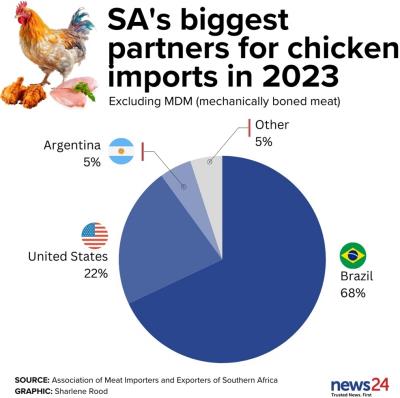 Effectively the Government of South Africa has essentially thrown the broiler industry under the bus. This reality is based on the Senator Huey Long political principle of a “chicken in every pot”. The African National Congress government is facing extreme opposition from the left based on its inability to govern, the deteriorating economic situation, interruption in power and water supplies and rampant crime. The Government is expected to lose its majority in Parliament following the national election to be held at a yet to be announced date in coming months with the prospect of a coalition among parties. Effectively the Government of South Africa has essentially thrown the broiler industry under the bus. This reality is based on the Senator Huey Long political principle of a “chicken in every pot”. The African National Congress government is facing extreme opposition from the left based on its inability to govern, the deteriorating economic situation, interruption in power and water supplies and rampant crime. The Government is expected to lose its majority in Parliament following the national election to be held at a yet to be announced date in coming months with the prospect of a coalition among parties.
Recent economic statistics for South Africa suggest a deteriorating situation with gross domestic product down 0.7 percent in 2023, consumer prices up 5.2 percent, an acknowledged unemployment rate of 32 percent, 10.1 percent interest rate on 10-year government bonds and a six percent deterioration in the exchange rate of the SA Rand against the U.S. Dollar

|
Red Sea Disruption Highlights Ocean Transport of Live-Animals
|
02/06/2024 |
|
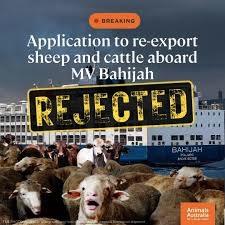
For many decades, Australia ranked 7th among exporters of live cattle and sheep has supplied Indonesia and Middle East nations with up to half a million sheep and cattle annually valued at $100 million. This has exposed animals to extreme stress and losses during ocean transport. The only justification for this trade is the demand for local slaughter in importing mations. Halal requirements could be met in producing nations with supervised processing as with poultry.

Attacks on merchant shipping in the Red Sea have highlighted the welfare problems associated with prolonged transport of live animals. Disruption in passage through the Bab al-Mandab Strait has stranded cargos. It is estimated that there are more than 100,000 ruminants currently on the water en route to Jordan, and other Middle-east nations.
On Monday February 5th The Government of Australia refused permission for the MV Bahija carrying 1,500 cattle and 15,000 sheep to re-commence a voyage after a previous departure on January 5th. The vessel returned to Australia and will now have to unload the animal cargo into quarantine after 30 days at sea.
Although Australia has imposed a code of practice regarding export a number of incidents involving suspension due to unacceptable handling and slaughter have occurred. These include Saudi Arabia in 2003 and 2005, Indonesia in 2012 and Egypt in 2013.
Intercontinental shipment of ruminants is an anachronism and is unnecessary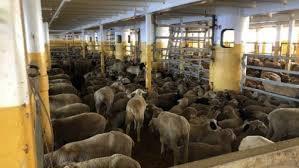 given that refrigerated transport of mutton and beef is an acceptable alternative. The Government of Australia could be forced to end large-scale ocean shipments of live animals given the growing antagonism towards this aspect of agricultural trade, especially over extended distances. Voyages in excess of 30 days necessitated by circumnavigating Africa from Australia to the Middle East are unacceptable given the difficulty of feeding and watering large ruminants and to allow exercise and an environment conducive to survival. given that refrigerated transport of mutton and beef is an acceptable alternative. The Government of Australia could be forced to end large-scale ocean shipments of live animals given the growing antagonism towards this aspect of agricultural trade, especially over extended distances. Voyages in excess of 30 days necessitated by circumnavigating Africa from Australia to the Middle East are unacceptable given the difficulty of feeding and watering large ruminants and to allow exercise and an environment conducive to survival.

|
U.S. Department of Justice Displaying Inquisitorial Zealotry Over Alleged Collusion
|
12/28/2023 |
|
 Under the current U.S. Department of Justice (DOJ), a number of senior administrators see collusion and antitrust activity in many aspects of agribusiness. According to news reports, Michael Kades, Deputy Assistant Attorney General for the Antitrust Division commented on the need for “more effective enforcement”. He expressed frustration at an international meeting in Brussels, Belgium “with the necessity of litigating cases that should be self-evident”. Under the current U.S. Department of Justice (DOJ), a number of senior administrators see collusion and antitrust activity in many aspects of agribusiness. According to news reports, Michael Kades, Deputy Assistant Attorney General for the Antitrust Division commented on the need for “more effective enforcement”. He expressed frustration at an international meeting in Brussels, Belgium “with the necessity of litigating cases that should be self-evident”.
The DOJ has been successful in negotiating high settlement figures from many integrators but has been thwarted at trial in cases alleging collusion on pricing. This is evidenced by the October verdict exonerating Sanderson Farms under its previous ownership, although subject to appeal. Companies that did settle with the Department of Justice collectively paid close to $300 million with Pilgrim’s Pride and Tyson Foods paying approximately $77 million each. The DOJ failed to obtain convictions in cases brought against executives of broiler integrators accused of colluding too rig contracts and prices.
Kades is probably on firmer ground in his case against a group of broiler producers who exchanged information on labor rates at a  succession of private discussions conducted during poultry association meetings. Kades also alluded to indirect collusion from a major industry benchmarking system to which pork, chicken and turkey processors subscribe. succession of private discussions conducted during poultry association meetings. Kades also alluded to indirect collusion from a major industry benchmarking system to which pork, chicken and turkey processors subscribe.
It is currently of benefit to state Attorneys General and the Department of Justice to pursue alleged antitrust activities since this results in large settlements although without acknowledgment of guilt.

|
US-developed ASF Vaccine to be Exported by Viet Nam
|
12/11/2023 |
|
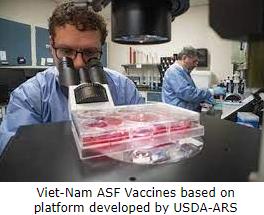 A novel vaccine to prevent African swine fever (ASF) developed by USDA-APHIS scientists at the Plum Island Research Laboratory and manufactured and tested in Vietnam will be shipped to the Philippines. AVAC, the manufacture in Vietnam has announced sales to the Philippines, Indonesia, Malaysia, India and Myanmar. The vaccine was tested for safety and efficacy in 17 provinces in Vietnam. The roll-out was initially impacted by apparent improper administration but according to the Department of Agriculture in Vietnam the vaccine is ready to market. Value will be demonstrated only following extensive field application. AVAC is producing between two and three million doses each month with plans to expand to five million depending on export orders. A novel vaccine to prevent African swine fever (ASF) developed by USDA-APHIS scientists at the Plum Island Research Laboratory and manufactured and tested in Vietnam will be shipped to the Philippines. AVAC, the manufacture in Vietnam has announced sales to the Philippines, Indonesia, Malaysia, India and Myanmar. The vaccine was tested for safety and efficacy in 17 provinces in Vietnam. The roll-out was initially impacted by apparent improper administration but according to the Department of Agriculture in Vietnam the vaccine is ready to market. Value will be demonstrated only following extensive field application. AVAC is producing between two and three million doses each month with plans to expand to five million depending on export orders.
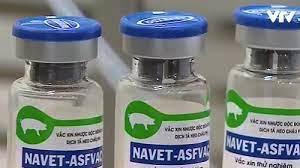
Navetco the Central Veterinary Medicine Company of Vietnam has also produced an ASF vaccine based on the USDA platform. This product is currently under test in the Dominican Republic where ASF has become endemic. A previous attempt by the USDA to eradicate ASF in neighboring Haiti applying stamping out was unsuccessful and this nation will also have to adopt a vaccination strategy, given the futility of basing control on unenforceable quarantine and defective biosecurity. The quicker ASF can be controlled in the Caribbean the more secure will be the U.S. pork industry. This contention is based on proximity to areas of endemic infection with opportunities to introduce the virus into Puerto Rico and the continental U.S. Administrators at USDA-APHIS should be at least reassured that pigs cannot fly.
Notwithstanding the assurances issued by AVAC, the World Organization of Animal Health has warned against using vaccines of ‘unproven safety’. The Agency in addressing risks of ‘sub-standard vaccines’ emphasized that it was not specifically addressing any available product.
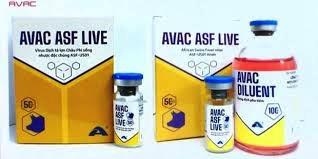
The WOAH has not established standards for ASF vaccines despite the fact that the disease has caused serious losses for over five years. The Agency expects to issue standards following the General Assembly in May 2024.
Until a safe and effective vaccine is available and deployed in Asia, eastern Europe and the Caribbean, ASF will continue to reduce output sustaining a demand for chicken meat.

|
Better Chicken Commitment Fails to Gain Traction among Restaurants
|
11/20/2023 |
|
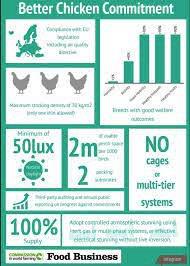 In 2016, approximately 125 national restaurant chains signed on to the Better Chicken Commitment (BCC). The initiative was established by animal welfare advocacy groups including the Humane Society of the United States supported by kindred organizations The promoters of the BCC are totally opposed to all forms of livestock production and advocate a vegan agenda. In 2016, approximately 125 national restaurant chains signed on to the Better Chicken Commitment (BCC). The initiative was established by animal welfare advocacy groups including the Humane Society of the United States supported by kindred organizations The promoters of the BCC are totally opposed to all forms of livestock production and advocate a vegan agenda.
Adoption of the BCC requires an extended growing period, inferior feed conversion, effectively higher mortality and diminished efficiency and use of resources. The BCC imposes higher costs on restaurants, food service companies and ultimately on consumers.
Driven by economic factors and facilitated by advances in genetic selection matched by improved nutrition and flock health, the U.S. broiler industry is among the most advanced in the world. Adoption of the Better Chicken Commitment would be a retrograde step and the failure of signatories to the 2016 pledges to follow through confirms that the system has little support from price-conscious consumers and those prioritizing sustainability.
The National Chicken Council correctly maintains that, “If consumers are truly interested and willing to pay for chicken that was raised according to the Better Chicken Commitment standards, they should be afforded the option.”
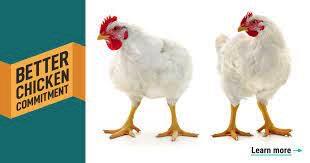
The same could be said for cage-free eggs. The same organizations promoting the BCC coerced retailers into agreeing to transition to cage-free product by 2025. At the present time, only one-third of U.S. eggs are derived from other than conventional cages with no likelihood of attaining a total cage-free goal. Consumers in states that have mandated sale of only cage-free eggs following HSUS motivated ballot initiatives are now paying what is referred to as the “Pacelle Tax” with higher prices than states that allow free choice among housing systems.
The National Chicken Council and the United Egg Producers have clearly documented standards for all aspects of housing and production developed by panels of scientists with expertise in the fields of welfare, health and management and enforced by rigorous auditing. The Better Chicken Commitment has had its opportunity to reform broiler production, but consumer sentiment, economics, practicality and reality have limited adoption. The same can be said for the recent slowing in transition to alternatives to conventional cages that offer advantages in price and sustainability

|
Illogical Decision to Ban Breaking of Broiler Hatching Eggs
|
11/16/2023 |
|
In 2018, the National Chicken Council petitioned for an exemption from the proposed FDA Final Rule on Salmonella to allow surplus broiler hatching eggs unsuitable for incubation to be broken and pasteurized in breaking plants under the jurisdiction of FSIS.
The problem arises from the FDA requirement concerning refrigeration within a short period after collection. This is impractical with hatching eggs that cannot be refrigerated until graded at either the farm or hatchery.
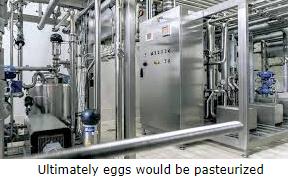
The FDA denied the petition during 2/2023 five years after submission of the request on the basis that the waiver of storage under refrigeration would “not maintain the same level of public health protection as its own egg safety rule”. Five months later, the Food Safety and Inspection Service also denied the petition submitted by the National Chicken Council. This action was based on jurisdictional complications by which the Egg Products Inspection Act requires the USDA to maintain a program that “assures consumers that egg products are safe, wholesome, not adulterated and properly labeled”.
There is no safety issue involved! Eggs will be subject to pasteurization that would destroy any bacteria that either penetrated the shell or were present in the egg irrespective of the duration of storage before or during refrigeration. The broiler industry is effectively disposing of approximately 25,000 tons of edible liquid annually. This is based on a four percent recoverable reject rate, the production of 165 million broiler chicks per week with 80 percent hatchability and assuming 50g egg contents. The National Chicken Council estimates the value of the loss at $25 million annually but based on a value of $0 75 per lb. The loss is nearer to $38 million annually.
Given the move to sustainability and concern by the USDA over resources, the wooden -headed and scientifically unjustified action by both the FDA and the USDA is typical of the bureaucratic orientation of both Agencies and their 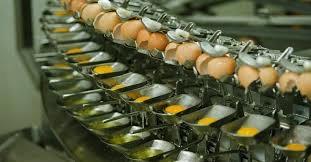 inability to make rational decisions. inability to make rational decisions.
In the face of institutional intransigence, the broiler industry will be denied fair value for a product and a source of food is wasted. This situation with divided jurisdiction calls for a single food safety agency staffed by competent scientists and rational =administrators working for a common purpose.

|
Packer Sanitation Services Appoints Chief Compliance Officer
|
09/29/2023 |
|
Following the revelations that Packer Sanitation Services employed underage workers to clean equipment and plants in violation of labor laws, the Department of Labor and the Department of Justice civil imposed penalties of $1.5 million on Packer Sanitation Services. As part of the agreement the Company has appointed a Chief Compliance Officer in a newly created position. Diego Alvarez was selected based on experience in overseeing and managing compliance issues in large corporations. Alvarez was most recently Senior Director for International Ethics and Compliance at Walmart Stores Inc.
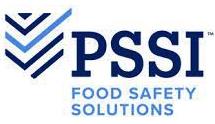 Tim Mulhere, appointed as CEO after the scandal, commented, “I am confident that his leadership experience and expertise will guide us in our compliance efforts as we move forward into 2024 and beyond.” Alvarez stated “I look forward to working with Tim and the Board to put compliance first and to continue helping PSSI customers as they protect the health and safety of the nation’s food supply.” Tim Mulhere, appointed as CEO after the scandal, commented, “I am confident that his leadership experience and expertise will guide us in our compliance efforts as we move forward into 2024 and beyond.” Alvarez stated “I look forward to working with Tim and the Board to put compliance first and to continue helping PSSI customers as they protect the health and safety of the nation’s food supply.”
Closely monitored by the Department of Labor, the Company now has an absolute prohibition against employment of anyone under the age of 18 and zero tolerance for any violation of company policy.
The question arises why packers and processors have undertaken to use a single contractor to provide a critical component of plant operations and indirectly, product quality. Cleaning equipment and plants should be integral to packing and processing. Subsequent to the violations disclosed mid-year, one of the Big Four packers has elected to undertake plant cleaning and decontamination using company crews in its hog, beef and poultry facilities.
 Following revelations in media that migrant minors were employed illegally in plants owned by Perdue Farms and Tyson Foods in the state of Virginia, the Department of Labor, Wage and Hour Division initiated an investigation into major integrators in the region. Packers and processors that employed Packer Sanitation Services have apparently escaped Department of Labor sanctions for the previous Midwest violations of labor laws by their contractor. Unfortunately, all implicated companies have experienced a measure of degradation of image and reputation. This is evidenced by the subsequent involvement of Senator Josh Hawley (R-MO) in his letter to Tyson Foods demanding information on employment of underage workers. Following revelations in media that migrant minors were employed illegally in plants owned by Perdue Farms and Tyson Foods in the state of Virginia, the Department of Labor, Wage and Hour Division initiated an investigation into major integrators in the region. Packers and processors that employed Packer Sanitation Services have apparently escaped Department of Labor sanctions for the previous Midwest violations of labor laws by their contractor. Unfortunately, all implicated companies have experienced a measure of degradation of image and reputation. This is evidenced by the subsequent involvement of Senator Josh Hawley (R-MO) in his letter to Tyson Foods demanding information on employment of underage workers.
A spokesperson for Perdue Farms commented, “We take the legal employment and safety of each individual working in our facilities very seriously and have strict, long-standing policies in place for Perdue Associates to prevent minors from working hazardous jobs in violation of the law.” The spokesperson added, “We hold our suppliers to the same high standards, and we were appalled by recent allegations.” Perdue has appointed third-party auditors to review the employment of minors and will take action based on the findings.
Secretary of Agriculture, Tom Vilsack, addressed a circular letter to the meat and poultry industry after the initial complaints in Minnesota warning of the need to eliminate illegal child labor in the food supply chain.

|
Futility of USDA ‘Restructuring’ of Red Meat Packing
|
08/27/2023 |
|
Two events in August point to the futility of attempting to restructure the U.S. meat-packing industry in pursuing an anti-corporate socialist agenda, promoting small-scale enterprises at taxpayer expense.
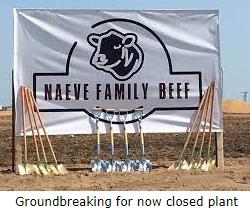
The Commissioners for the Alachua County in Florida have decided to cease negotiations regarding a proposed taxpayer-funded meat processing plant. The project would have created 12 jobs and processed from 4 to 15 head of cattle per working day. The project was supported by the Institute of Food and Agricultural Sciences of the University of Florida, and the Santa Fe College. The proposed plant was supported by local ranchers but was opposed by residents of the county. In June, Florida Governor, Ron DeSantis, vetoed state funding for the project. One of the obstacles to approval of the project was the reluctance of the County to improve road access.
In a separate news report, Naeve Family Beef in Camanche, IA. announced that their packing operations would cease operation after 130 years of service. Their new plant that functioned under USDA-FSIS inspection was erected in 2022 at a cost of $12 million with a capacity to process up to 60 animals per day with 50 employees.
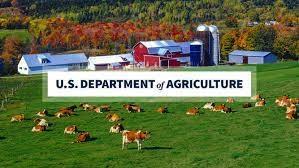 The current Administration has expended public funds on promoting and establishing small-scale meat processing as an alternative to the large facilities operated by the major four packers of beef and pork. The plants operated by the major packers benefit from economies of scale and integration of packing, marketing and distribution. Attempts to restructure the existing beef and pork-packing industries by the USDA under Secretary, Tom Vilsack, was at the outset a quixotic endeavor fueled by anti-corporation sentiment and lacking any economic justification. The current Administration has expended public funds on promoting and establishing small-scale meat processing as an alternative to the large facilities operated by the major four packers of beef and pork. The plants operated by the major packers benefit from economies of scale and integration of packing, marketing and distribution. Attempts to restructure the existing beef and pork-packing industries by the USDA under Secretary, Tom Vilsack, was at the outset a quixotic endeavor fueled by anti-corporation sentiment and lacking any economic justification.
It is hoped that the USDA will be able to justify funds expended on small plants and that loans will be repaid with interest. Experience gained from this exercise in government intervention into a free-market economy will serve as a guide for future administrations tempted to place their figurative, economic thumb on processing of red meat and poultry.

|
Proposal to Invalidate FDA Authority Over Veterinary Antibiotics
|
06/29/2023 |
|
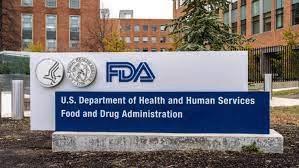 In a misguided, retrograde and potentially harmful Bill, John Brecheen (R-OK) and Eric Burlison (R-MO) have sponsored the “Stop Government Overreach in Ranching Act”. This Bill would repeal FDA oversight on antibiotics and set back public health at least a decade. In accordance with FDA Guidance, only licensed veterinarians can prescribe antibiotics under strict rules and following prudent use principles. These are intended to avoid overuse, residues in food products and inappropriate medication that has led to the emergence of drug resistant pathogens endangering both human and animal health. In a misguided, retrograde and potentially harmful Bill, John Brecheen (R-OK) and Eric Burlison (R-MO) have sponsored the “Stop Government Overreach in Ranching Act”. This Bill would repeal FDA oversight on antibiotics and set back public health at least a decade. In accordance with FDA Guidance, only licensed veterinarians can prescribe antibiotics under strict rules and following prudent use principles. These are intended to avoid overuse, residues in food products and inappropriate medication that has led to the emergence of drug resistant pathogens endangering both human and animal health.
The Bill would allow ranchers and farmers to resume purchase of antibiotics over the counter as occurred previous to the introduction of restrictions. Reversion to the status quo would place discretion for use of antibiotics in the hands of those contributing to widespread antibiotic resistance in the first instance.
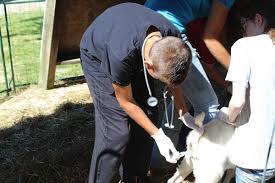
The president of the American Farmers and Ranchers/Oklahoma Farmers’ Union stated, “Our livestock producers have years of experience managing these antibiotics; they know what their animals need to thrive.” This is a gross misrepresentation. Veterinarians operate according to a strict set of ethics, have taken courses in microbiology, pharmacology and epidemiology and are aware of restraints in writing prescriptions and issuing VFDs. Evidence shows that following the introduction of restrictions on the use of antibiotics in livestock production in the E.U., the prevalence of drug resistant pathogens has declined albeit at a slow rate.
Veterinarians address problems of multifactorial diseases by addressing basic causes. Antibiotics were widely misused by ranchers and farmers and previously by poultry producers to suppress infections that should have been addressed by enhancing biosecurity, hygiene and application of vaccines. More than half of broilers produced in the U. S. are raised antibiotic-free. If ionophore anticoccidials are disregarded as in the E.U., the proportion is probably closer to 90 percent. The egg industry has negligible use of antibiotics other than to 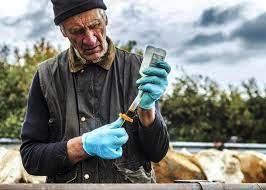 treat specific diseases during pullet rearing since, with one questionable exception, there are no label provisions allowing administration of antibiotics to laying hens. treat specific diseases during pullet rearing since, with one questionable exception, there are no label provisions allowing administration of antibiotics to laying hens.
The legislators sponsoring this bill should be more concerned about public health and ultimately the profitability of their constituents than promoting “quick fix” solutions. If appropriately briefed they would accept scientifically justified restrictions on the use of antibiotics by the unqualified.

|
Australian Supermarket Chain Withdraws from Animal Welfare Ranking System
|
06/03/2023 |
|
 Woolworths a major supermarket chain in Australia has withdrawn from the Business Benchmark on Farm Animal Welfare. This organization based in the U.K. ranks companies according to compliance with animal welfare criteria. Initially the two major Australian supermarkets, Woolworths and Coles subscribed to the program and were working toward increasing their respective rankings. Woolworths a major supermarket chain in Australia has withdrawn from the Business Benchmark on Farm Animal Welfare. This organization based in the U.K. ranks companies according to compliance with animal welfare criteria. Initially the two major Australian supermarkets, Woolworths and Coles subscribed to the program and were working toward increasing their respective rankings.
Follwing the involvement of extremist groups, Compassion in World Farming and Four Paws International in the Benchmark, Woolworths decided to withdraw and end its progress in ascending tiers to obtain advanced Benchmark ratings. Extremism in standards imposed by Benchmark would have constrained the supply of meat to Australian supermarkets. In announcing their decision Woolworths stated, “Unfortunately the International Benchmark fails to recognize the unique context of Australian farming and the way farmers care for animals in a different climate and geography.”
Coles supermarket chain appears to be following Woolworths stating, “We have never set a tier target for the Benchmark and we have not endorsed any new methodology as we do not believe it recognizes commitment our suppliers have made to improve animal welfare.”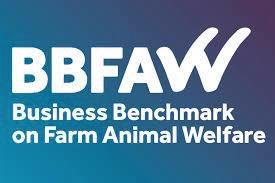
The Federal Government of Australia is working on a national animal welfare strategy that will be formulated with consultation among a wide range of industry and community groups. The Department of Agriculture website includes the statement, “A renewed Australian Animal Welfare Strategy reestablishes a framework for priority setting and associated national standards and measures of improvement for animal welfare outcomes. Demonstrating Australia’s strong welfare standards while supporting increased access to overseas markets will strengthen the reputation of our animal and agriculture industries among trading partners.”
In announcing the withdrawal from the Benchmark, Woolworths stated, “Our own animal welfare standards for suppliers have been developed with experts, independently of the Benchmark and will not be affected by this change. We know Australian farmers and producers care deeply for the animal they raise and we remain committed to working in partnership with them to improve real animal welfare outcomes.”
The development of a national standard for welfare in Australia should be considered in the U.S. The recent SCOTUS decision on Proposition #12 increases the need for uniformity to prevent a patchwork of regulations that ultimately impose additional costs for production andcomplications for marketing and distribution. Unrealistic standards imposed by organizations dominated by vegans and welfare extremists are reflected in increased costs to consumers without any direct benefit to livestock and to the detriment of ranchers and packers.

|
Tournament System for Broiler Contractors in Jeopardy
|
05/10/2023 |
|
Apparently, as a prerequisite for approval of the acquisition of Sanderson Farms by the Cargill and Continental Grain consortium, the re-structured combined company, Wayne-Sanderson Farms, agreed to cease penalizing sub-standard contractors applying the tournament system. This well-proven and effective approach to contractor payment rewards diligence manifest as superior performance and detracts from grower payment for results falling below peer standards.
Secretary of Agriculture, Tom Vilsack, has consistently promoted abolition of the tournament system, stating, “We are on the side of the hardworking producers. We are on the side of the farmer out there who is taking financial risks and who needs to be treated fairly.”
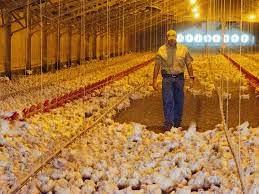 CHICK-NEWS has frequently questioned the business acumen of the Secretary and his understanding of the broiler industry. Effectively, integrators bear the financial risk of fluctuation in feed and other inputs and the vagaries of the marketplace, Contractors are protected from these realities. Tyson Foods posted an operating loss of $258 million for the second quarter of Fiscal 2023. Irrespective of the financial result posted by the largest broiler integrator in the U. S., contractor payment during the quarter was not affected. CHICK-NEWS has frequently questioned the business acumen of the Secretary and his understanding of the broiler industry. Effectively, integrators bear the financial risk of fluctuation in feed and other inputs and the vagaries of the marketplace, Contractors are protected from these realities. Tyson Foods posted an operating loss of $258 million for the second quarter of Fiscal 2023. Irrespective of the financial result posted by the largest broiler integrator in the U. S., contractor payment during the quarter was not affected.
Integrators own the flock, providing chicks, feed, transport and technical support. Farmers supply housing with federal guaranteed loans, utilities and their labor. For more than seven decades, the system has worked to the mutual advantage of integrators and contractors and indirectly, also consumers who have enjoyed an available a supply of inexpensive protein.
Does Secretary Vilsack wish the broiler industry to transition to the U. K. model? Broiler farmers in this Nation are going out of business because they are unable to generate positive margins on their flocks. This is attributed to an escalation in feed cost coupled with low prices paid by packers. This intermediate in a fragmented industry is faced with intransigence by the supermarket chains with respect to fair payment.
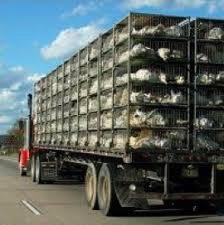 The U.S. broiler production model has evolved to the benefit of all stakeholders. Secretary Vilsack and his acolytes should first understand the structure and economics of the industry and then calculate the damage they could cause by disturbing proven methods of conducting business. Farmers have protection through GIPSA regulations that allow for processing and remediation for proven cases of exploitation or improper or unethical practices. The fact that most integrators have a waiting list for aspirant contractors suggests that the system works to the advantage of both parties. The U.S. broiler production model has evolved to the benefit of all stakeholders. Secretary Vilsack and his acolytes should first understand the structure and economics of the industry and then calculate the damage they could cause by disturbing proven methods of conducting business. Farmers have protection through GIPSA regulations that allow for processing and remediation for proven cases of exploitation or improper or unethical practices. The fact that most integrators have a waiting list for aspirant contractors suggests that the system works to the advantage of both parties.
Given the uncertainties relating to the economy, despite easing inflation, demand is not rising in proportion to expansion in production. Domestic sales and international shipments are relatively stagnant, and integrators will experience potentially higher costs for interest, feed, overhead, fuel and wages. The April 2023 Poultry Production and Value Summary for 2022 indicates $50.4 billion value for broilers produced, up 60 percent from 2021 with 9.2 billion birds processed. This is far too large an industry to disrupt with well-meaning, socialist-inspired meddling.

|
Communities Challenged by New Packing Plants
|
04/05/2023 |
|
 Opposition to establishing new packing and processing plants is based on a number of factors. Environmental pollution, traffic and odor are cited. Invariably the unspoken concern is the change in character of a small community as a result of an influx of workers. Small towns and counties be may receive upwards of a thousand relatively low-paid line workers and their families most with an international heritage. Opposition to establishing new packing and processing plants is based on a number of factors. Environmental pollution, traffic and odor are cited. Invariably the unspoken concern is the change in character of a small community as a result of an influx of workers. Small towns and counties be may receive upwards of a thousand relatively low-paid line workers and their families most with an international heritage.
Workers required to operate plants have children that require education. This imposes pressure to provide schooling extending from preschool through K-12. In many communities, a large proportion of children are taught through English as a second language programs. This requires a higher proportion of specialized bilingual teachers and counselors.

Companies intending to locate in a community should shoulder the responsibility of contributing to headstart, elementary and secondary education. Most companies receive liberal tax benefits to establish a plant. This reduces public sector income required to provide additional services.
Investment in the children of immigrant workers is beneficial to the Nation. This generation will become qualified workers and professionals, given opportunities that were enjoyed by previous generations of Americans who emigrated from Europe in past decades. The average age of our citizens is increasing, enrolment in universities and community colleges is declining and we must have a solid base of contributors to social security. We must reject xenophobia and recognize that whatever our resistance to accepting the first generation we have an obligation to provide their children with opportunities to allow them to integrate into the American mainstream, to enrich our culture and contribute to our economy.

|
ASF Impacts Germany – Lessons for the U. S.
|
03/17/2023 |
|
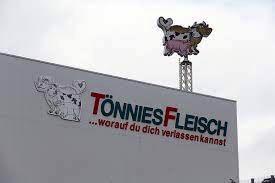 Tönnies, he largest pork producer in Germany with approximately one third of the domestic market is closing an export packaging section in a plant in Weisenfels in the state of Saxony-Anhalt. Approximately 140 workers out of a total of 2,200 will be made redundant. The action was taken as a result of import bans imposed on Germany by China and South Korea. The action by China is unjustified, given the fact that African swine fever is endemic in that Nation and recently has increased in incidence. Prior to the September 2020 ban, Germany exported pork and low-value products to Asian nations. Tönnies, he largest pork producer in Germany with approximately one third of the domestic market is closing an export packaging section in a plant in Weisenfels in the state of Saxony-Anhalt. Approximately 140 workers out of a total of 2,200 will be made redundant. The action was taken as a result of import bans imposed on Germany by China and South Korea. The action by China is unjustified, given the fact that African swine fever is endemic in that Nation and recently has increased in incidence. Prior to the September 2020 ban, Germany exported pork and low-value products to Asian nations.
African swine fever was introduced into Germany by wild boars migrating westward from Poland. Eastern states, centering on Brandenburg with Saxony to the south and Mecklenburg-Vorpommern to the north being most affected. Attempts to exclude boars from Poland by reinforcing border fencing have been largely unsuccessful. Reducing the domestic population in these states by hunting has not been effective, given the adaptability of these animals and their rate of reproduction.
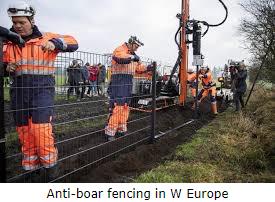
By the same token, the vast wild boar population in the U. S. represents a potential for mass dissemination of African swine fever virus if it enters the U. S. Although a federal program and state initiatives are directed at reducing the wild boar population, the range of these pests and their numbers are increasing. More aggressive measures must be taken to deplete wild boars that represent an ongoing danger to the pork industry.
Measures to prevent introduction of African swine fever continue with surveillance of ports of entry, including airports. The presence of endemic ASF in Haiti and the Dominican Republic represent a risk of introduction by travelers entering through east coast airports carrying uncooked pork products. A greater danger exists on the West Coast with illegal, large-scale smuggling of specialty oriental pork products as undeclared cargo in shipping containers.
Identifying contraband pork in passengers’ luggage at airports will requ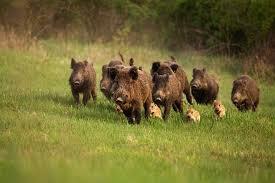 ire more extensive deployment of the “beagle brigade” with Congress appropriating additional funds to expand the program as intended by the bipartisan Beagle Brigade Act of 2023 recently introduced into the House and Senate. More deterrence is necessary to prevent illegal importation of pork products from China with surveillance at the retail level and trace back to importers and wholesalers. Penalties for deliberate and commercial-level smuggling should be increased with mandatory prison terms to act as a deterrent. Introduction and spread of ASF would incur costs for control and the escalation in price of pork affecting consumers is highlighted by the ongoing epornitic of Highly Pathogenic Avian Influenza. ire more extensive deployment of the “beagle brigade” with Congress appropriating additional funds to expand the program as intended by the bipartisan Beagle Brigade Act of 2023 recently introduced into the House and Senate. More deterrence is necessary to prevent illegal importation of pork products from China with surveillance at the retail level and trace back to importers and wholesalers. Penalties for deliberate and commercial-level smuggling should be increased with mandatory prison terms to act as a deterrent. Introduction and spread of ASF would incur costs for control and the escalation in price of pork affecting consumers is highlighted by the ongoing epornitic of Highly Pathogenic Avian Influenza.

|
USDA to Make $90 Million Available to Finance Independent Meat and Poultry Processing
|
03/09/2023 |
|
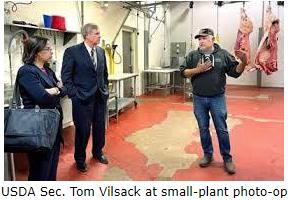 Speaking at the Annual Convention of the National Farmers Union in San Francisco, Secretary of Agriculture, Tom Vilsack, announced $90 million in financing for startups and extension of enterprises involved in processing red meat and poultry. This initiative follows the Administration policy of establishing a “more competitive market place in accordance with the Action Plan for a Fairer, Competitive and Resilient Meat and Poultry Supply Chain. Speaking at the Annual Convention of the National Farmers Union in San Francisco, Secretary of Agriculture, Tom Vilsack, announced $90 million in financing for startups and extension of enterprises involved in processing red meat and poultry. This initiative follows the Administration policy of establishing a “more competitive market place in accordance with the Action Plan for a Fairer, Competitive and Resilient Meat and Poultry Supply Chain.
Vilsack stated, “Today’s investments and actions to back the startup and expansion of independent processing capacity and boost market fairness in meat and other key agricultural inputs will promote competition, support producer income, strengthen the supply chain and increase economic opportunity in rural communities.”
The current allocation was additional to the 2022 series of awards amounting to $75 million extended to eight nonprofit lenders in seven states.
Grants in 2023 will include $15 million to the Alabama Agricultural Development Authority for 12 new processing facilities. Coastal Enterprises in Maine will receive $8 million to establish livestock and poultry processing in New England states. The Lewis and Clark Development Group will receive $5 million to support expansion of meat and poultry processing in North Dakota.
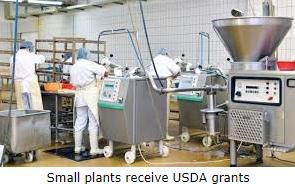 Given that the grants are anticipated to generate 400 projected new jobs, it is estimated that each new position will require the capital investment of federal funds approaching an average of $250,000 per position. Given that the grants are anticipated to generate 400 projected new jobs, it is estimated that each new position will require the capital investment of federal funds approaching an average of $250,000 per position.
The USDA and the Administration refer to distribution of taxpayer money as an “investment”. Giveaways can only be characterized as investments if they show a return on the capital expended in establishment and long-term functional and viable businesses. At some time in the not too distant future, the USDA should provide an accounting indicating how federal funds were expended and whether the principal was returned to the Treasury. Unfortunately, when the time to quantify results occurs, neither Tom Vilsack nor his acolytes in the USDA will be around to provide explanations of how funds disappeared and to explain why the “investments” “were essentially giveaways. As both a taxpayer and a shareholder in public-quoted agribusiness companies, this commentator objects to quarterly IRS payments to be used to support non-viable enterprises to facilitate social engineering, and indirectly compete with established and efficient producers.

|
Restrictions on U. S. Broiler Exports Continue
|
03/06/2023 |
|
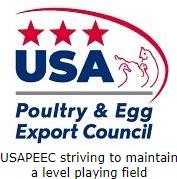 According to the March 6th edition of the USAPEEC Monday Line, importing nations continue to impose statewide restrictions as a result of localized outbreaks of Highly Pathogenic Avian Influenza (HPAI). According to the March 6th edition of the USAPEEC Monday Line, importing nations continue to impose statewide restrictions as a result of localized outbreaks of Highly Pathogenic Avian Influenza (HPAI).
The Republic of Kazakhstan announced restrictions on imports from California, Texas and Virginia for product shipped after February 23rd, 2023. South Africa has disallowed imports from the state of Virginia for product processed after January 2nd and for the state of Virginia after January 27th. South Africa imposes restrictions without communication with the USDA, resulting in omissions from the Export Library.
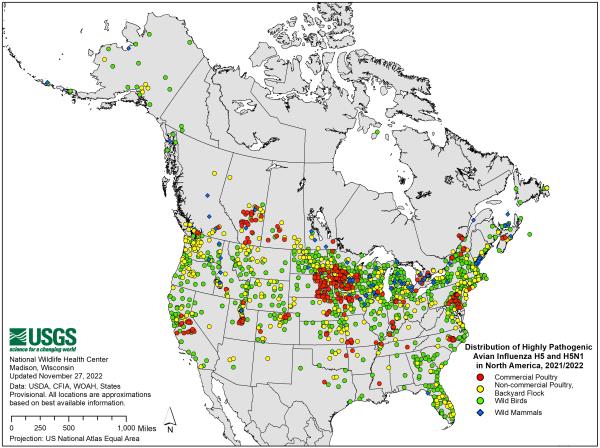 |
It is recognized that there is considerable inconsistency in establishing the geographic extent of bans as a result of HPAI outbreaks. Many nations are following regionalization as incorporated in World Organization of Animal Health (WOAH) guidance. In contrast, some nations impose statewide or national bans as a result of outbreaks of designated catastrophic diseases in livestock and poultry. The USAPEEC, in cooperation with the USDA and the International Poultry Association, have made considerable progress in harmonizing trade regulations and the acceptance of scientifically justified restrictions to protect domestic flocks from imported pathogens. Unrealistic restrictions are due either to lack of knowledge concerning the epidemiology of HPAI on the part of regulators, conservatism and resistance to change inherent in regulatory veterinary medicine, xenophobia or the imperative to protect domestic industries from import competition.

|
Meat Packing Special Investigator Act Reintroduced
|
02/15/2023 |
|
 In a bipartisan initiative Senator Mike Rounds (R-SD), Senator John Tester (D-MT) and Senator Chuck Grassley (R-IA) have reintroduced the Meat Packing Special Investigator Act to create an Office of the Special Investigator for Competition Matters within the USDA. In a bipartisan initiative Senator Mike Rounds (R-SD), Senator John Tester (D-MT) and Senator Chuck Grassley (R-IA) have reintroduced the Meat Packing Special Investigator Act to create an Office of the Special Investigator for Competition Matters within the USDA.
The intent of the Office will be to prevent anticompetitive behavior in the meat packing industry that is characterized by consolidation with four major companies representing 85 percent of beef processing capacity.
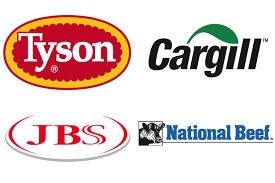 Using an over-simplification, the promoters of the Bill point to the difference in price paid to ranchers and the eventual cost of beef to consumers. A second justification of questionable relevance is the fact that allegedly 17,000 ranchers have ceased production since 1980. Using an over-simplification, the promoters of the Bill point to the difference in price paid to ranchers and the eventual cost of beef to consumers. A second justification of questionable relevance is the fact that allegedly 17,000 ranchers have ceased production since 1980.
Senator Grassley expressed the opinion that, “Increased consolidation and anticompetitive tactics by is intended to strengthen the enforcement of the Packers and Stockyards Act and will increase or extend involvement with the Department of Justice and the Federal Trade Commission.
Predictably, the North American Meat Institute is opposed to the legislation. In Congressional testimony, Julie Anna Potts, CEO of NAMI, stated, “The Special Investigator would feel emboldened and obligated to bring in as many cases as possible, warranted or not to test the legal limits of the new rules. The resulting legal uncertainty and chaos will accelerate changes in livestock and poultry marketing that will add cost to producers and packers.”
The preoccupation of legislators, USDA and the current Administration that large-scale livestock production is in some way prejudicial to farmers and consumers has no support from mainstream agricultural economists. If introduced, “mission creep“ would extend the scope of the Investigator from beef and pork to include poultry with consequential disruption of the supply chain.

|
Obstacles to Adoption of Cell-Cultured Meat
|
12/28/2022 |
|
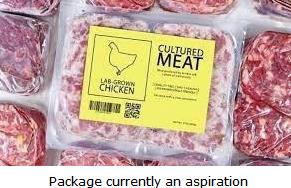
As more start-up and established companies have announced impending commercial production of cell-cultured meat, questions arise as to the commercial viability of the range of products that will be offered. At present, there is no comprehensive approval of cell-cultured meat despite the Food and Drug Administration indicating that it had no objection in principle to products following a review of documentation submitted by one aspirant producer of cell-cultured meat. The U.S. FDA and USDA-FSIS have joint jurisdiction over cell-cultured meat and have yet to issue their regulations.
The market potential for cell-cultured meat may be discerned from the sales trajectory of plant-based meat substitutes introduced during the late 1990s. Following a sharp increase in demand through 2020, consumer interest waned, and market growth has plateaued with every prospect of a decline. JBS closed their Planterra operation and Maple Leaf Foods has reevaluated their considerable investment with an appropriate reduction in projected sales. Beyond Meat (BYND) represents the only pure-play public traded plant-based manufacturer of meat substitutes. This Company has generated a dismal record since their IPO. Beyond Meat has posted increased losses, declining margins and progressively lower sales in both domestic and international markets over the past two years.
 There is general acceptance that the initial growth rate of plant-based products was fueled by a curiosity factor. Given the unjustified premium in price between real meat and substitutes in the form of ground product and sausages, frugal consumers in an inflationary economy have failed to transition to plant-based products or have ceased purchasing based on perceived quality and cost. The demographic willing to pay a premium for subjective attributes such as sustainability welfare and the environment is limited. There is general acceptance that the initial growth rate of plant-based products was fueled by a curiosity factor. Given the unjustified premium in price between real meat and substitutes in the form of ground product and sausages, frugal consumers in an inflationary economy have failed to transition to plant-based products or have ceased purchasing based on perceived quality and cost. The demographic willing to pay a premium for subjective attributes such as sustainability welfare and the environment is limited.
The plant-based substitute for meat industry has failed to convince consumers that their products are in some way “healthier” than conventional meat. Labels indicate numerous additives and high salt content are of concern to those who obsess over “clean labels”. Although many producers claim equivalent levels of protein, the amino acid profile of plant-based substitutes is inferior to real meat.
It is questioned whether cell-cultured meat will be directed to either the consumer market or to food service. It is one thing to serve a $30 per plate entrée in a gourmet restaurant but an entirely different situation to achieve substitution for real meat on a vast scale by a major multinational QSR chain. It is noted that the major QSRs have all trialed plant-based meat substitutes for limited periods without consumer appreciable acceptance.
Apart from cost, which will have to be equivalent to conventional meat, cell-cultured products will have to incorporate organoleptic qualities including texture, taste and appearance comparable to conventional meat, especially for the more expensive cuts.
To date, the developers of cell-cultured meat have demonstrated technical feasibility in pilot plants and have been lavishly supported by venture capital. The real test will come following erection of capital-intensive production facilities with the inevitable problems of scaling up pilot production to commercial quantities. Even if volumes can be achieved at equivalent cost to conventional meat, which is considered unlikely over the intermediate term, acceptance by both consumers and the food service sector is questionable unless benefits over and above environmental and welfare considerations are evident.

|
Our 2023 Wish List
|
12/27/2022 |
|
As we approach 2023 we should be thankful for the positive events over the past year and recognize the challenges ahead. We have overcome obstacles, striven to defend what is right and ethical and have overcome many obstacles imposed on us by extremes in weather, international turbulence and economic pressures.

During the coming year the poultry industry and interconnected agricultural sectors should benefit from: -
- A decline in the incidence rate of HPAI in the U.S. and neighboring nations. A realization that the infection is de facto endemic should result in a reappraisal of limited evaluation and application of immunization of long-lived flocks applying advanced vaccines.
- Immigration reform is needed. We require foreign workers and more important their children who will be raised as U.S. citizens, enriching our diverse culture and offsetting the inevitable ageing of our population.
- Rapid passage of the 2023 Farm Bill with strong constructive bipartisan support within the House and Senate
- Resolution of conflict in the Ukraine to end human suffering and to restore supply of commodities, stabilizing ingredient prices and allowing diversion of resources to peaceful and constructive endeavors.
- Curtailing inflation to allow the Federal Reserve and other central banks to lower interest rates and stimulate consumption and the expansion of our industry.
- A greater sense of community is needed in our Nation with mutual understanding and rejection of extremes. We need to reduce inflammatory rhetoric and parochial divisions in our society with a return to political civility and a commitment to progress and prosperity.
Barbara and I wish all our sponsors, Subscribers and friends in the industry a peaceful and productive 2023. We all look forward to meeting at the IPPE.

|
FDA Concludes Voluntary Pre-Market Consultation on Cell-Cultured Chicken
|
11/20/2022 |
|
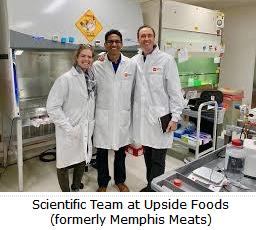 Following discussions, Upside Foods was informed by the FDA that the Agency accepts data supplied by the company and that there are no further questions at the current time concerning safety considerations. It is emphasized that the conclusion of the review is not an FDA “approval” for either the product or cell-cultured meat in general. Following discussions, Upside Foods was informed by the FDA that the Agency accepts data supplied by the company and that there are no further questions at the current time concerning safety considerations. It is emphasized that the conclusion of the review is not an FDA “approval” for either the product or cell-cultured meat in general.
Despite optimistic predictions by the Alliance for Meat, Poultry and Seafood Innovation (AMPS), the industry group representing cultivated meat and protein products, final approval has yet to be granted by both the FDA and the USDA-FSIS, the Agency that will oversee production. In addition, there are no definitive regulations that would be applied to govern the production of cultivated meat and seafood. The AMPS noted that the Association “looks forward to continued progress by Upside and other companies to help expand safe and delicious food options for consumers and help support a more sustainable food supply”.
It is far too early to phone a broker to buy shares in cultured meat startups even if they were available. At this time relevant considerations include:-
- A realistic projection of the volume of cultivated meat and seafood that can be produced, especially in relation to the conventional meat products that they intend to displace.
- An indication of the cost of items as delivered to the food service and consumer sectors.
- An appraisal of organoleptic considerations including taste and the appearance and texture of both raw and cooked product.
 Plant-based meat substitutes were intended to displace beef based on claims of welfare, sustainability and convenience. A review of the financial performance of Beyond Meat and the Plant Protein segment of Maple Leaf Foods suggests that after an initial spurt of consumer interest, the curiosity factor that stimulated market growth was soon outweighed by non-competitive cost. Even a two-fold differential between ground beef and the plant-based alternative has suppressed sales that peaked within three years after introduction, then plateaued and is now declining. Plant-based meat substitutes were intended to displace beef based on claims of welfare, sustainability and convenience. A review of the financial performance of Beyond Meat and the Plant Protein segment of Maple Leaf Foods suggests that after an initial spurt of consumer interest, the curiosity factor that stimulated market growth was soon outweighed by non-competitive cost. Even a two-fold differential between ground beef and the plant-based alternative has suppressed sales that peaked within three years after introduction, then plateaued and is now declining.
There is a limited clientele for expensive boutique foods whether in the U.S. or in Singapore. If cultivated meat is to make any impact on global warming, it will not be achieved through serving product to the affluent in Michelin-starred restaurants but in selling to consumers in supermarket display cases.

|
Haarlem Bans Advertising of Meat Over Environmental Concerns
|
09/13/2022 |
|
 The City of Haarlem in the Netherlands has banned advertising of meat, holiday air travel and vehicles that use fossil fuel. The ban will extend to all advertisements on buses, shelters and in public spaces. The City of Haarlem in the Netherlands has banned advertising of meat, holiday air travel and vehicles that use fossil fuel. The ban will extend to all advertisements on buses, shelters and in public spaces.
The action taken by the City is based on prevailing sentiment regarding climate change and is justified by civic authorities using data suggesting the detrimental effect of intensive livestock production and especially beef on water consumption and greenhouse gas emissions.
Agricultural associations that are currently under pressure in Holland over release of nitrogen to waterways and atmospheric release of greenhouse gases are opposing the action. Complaining that the action by the City of Haarlem represents a public entity “telling consumers what they should and should not eat” is inadequate.
Given the effect of bans on advertising of cigarettes that are clearly detrimental to health, it is expected that in environmentally conscious nations such as Holland and others in Western Europe that this trend towards a vegan agenda based on the environment will grow and spread to North America. To date opposition to intensive 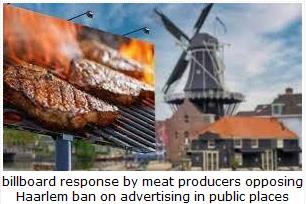 livestock production has been based on welfare issues. Now there is common cause between animal rights activists and environmentalists creating a formidable force. Agricultural organizations in the U.S. should take heed of the action in Haarlem, as outlandish as it may seem to be. Cage-free production, cockerel sexing, banning of beak trimming all started as small initiatives and gained political traction. We now operate with restrictions and expend fixed and working capital to comply with regulations that impact our incomes. livestock production has been based on welfare issues. Now there is common cause between animal rights activists and environmentalists creating a formidable force. Agricultural organizations in the U.S. should take heed of the action in Haarlem, as outlandish as it may seem to be. Cage-free production, cockerel sexing, banning of beak trimming all started as small initiatives and gained political traction. We now operate with restrictions and expend fixed and working capital to comply with regulations that impact our incomes.

|
Disparity Between State Funding And Corporate Investment In Meat Plant Upgrades
|
08/21/2022 |
|
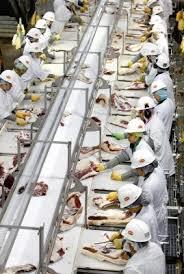 Recent press reports confirmed that the state of Ohio distributed awards amounting to $3 million among 12 meat processors with an average grant of $220,000 per recipient to upgrade plants to improve efficiency. In total, Ohio has made 128 grants totaling $28 million to small processors. The program claims to benefit both meat processors and farmers but also to Ohio families who will find more meat products available at stores, according to the governor. Recent press reports confirmed that the state of Ohio distributed awards amounting to $3 million among 12 meat processors with an average grant of $220,000 per recipient to upgrade plants to improve efficiency. In total, Ohio has made 128 grants totaling $28 million to small processors. The program claims to benefit both meat processors and farmers but also to Ohio families who will find more meat products available at stores, according to the governor.
In contrast, Tyson Foods announced a $200 million investment in their Amarillo, TX beef plant. The facility employs 4,000 and contributes to the local community with a payroll exceeding $200 million. The project will include additional locker rooms, cafeteria and office space, and upgrades directed to conservation of energy and water and plant mechanization.
The state of Texas has awarded a $12.2 million to Producer Owned Beef, LLC to establish a plant that will represent a capital investment of $617 million and will employ 1,600 in the Amarillo area. This plan will commence operation in 2025.
The need for large capital investment to upgrade packing plants is self-evident. Scattering small grants among numerous, independent and local producers, although politically expedient and altruistic, 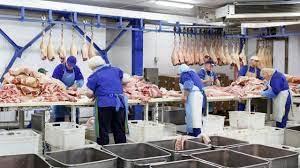 may not move the needle with respect to total supply or create greater security for either farmers and consumers. Initiatives by the USDA and states to support small-scale processing is a misplaced reaction to the problems encountered with COVID during 2020. Although grants to small red meat packing operations receive publicity, there is seldom any accounting to determine the return on investment. Since public funds are involved, federal and state agencies have the obligation to report on the benefits of their largesse. may not move the needle with respect to total supply or create greater security for either farmers and consumers. Initiatives by the USDA and states to support small-scale processing is a misplaced reaction to the problems encountered with COVID during 2020. Although grants to small red meat packing operations receive publicity, there is seldom any accounting to determine the return on investment. Since public funds are involved, federal and state agencies have the obligation to report on the benefits of their largesse.

|
USDA to Declare Salmonella as an Adulterant in Breaded Raw Chicken Products
|
08/04/2022 |
|
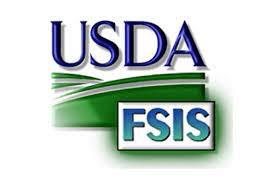 The USDA-FSIS intends to declare the presence of Salmonella in frozen raw-breaded chicken products to be an adulterant. Sandra Eskin Deputy Undersecretary for Food Safety commented, “Today’s announcement is an important moment in U.S. food safety.” She added, “This is just the beginning of our efforts to improve public health.” The USDA-FSIS intends to declare the presence of Salmonella in frozen raw-breaded chicken products to be an adulterant. Sandra Eskin Deputy Undersecretary for Food Safety commented, “Today’s announcement is an important moment in U.S. food safety.” She added, “This is just the beginning of our efforts to improve public health.”
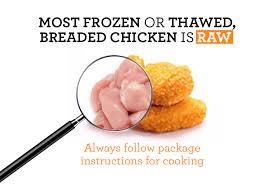 In the U.S. breaded stuffed raw chicken products have caused fourteen outbreaks since 1998 although the occurrence of infection is probably higher than has been diagnosed and confirmed. In addition, cases attributed to suboptimal cooking have occurred in Canada and the EU. With respect to raw frozen breaded chicken products, infection has not been limited by prominent label instructions advising consumers to cook product to 165 F in an oven and not to heat in a microwave. In the U.S. breaded stuffed raw chicken products have caused fourteen outbreaks since 1998 although the occurrence of infection is probably higher than has been diagnosed and confirmed. In addition, cases attributed to suboptimal cooking have occurred in Canada and the EU. With respect to raw frozen breaded chicken products, infection has not been limited by prominent label instructions advising consumers to cook product to 165 F in an oven and not to heat in a microwave.
USDA has yet to determine whether the regulation relating to adulteration will be based on a zero tolerance or will be restricted to specific serovars of Salmonella enterica. The most likely response by the industry to the intended action on raw breaded product will be to market only cooked breaded items with appropriate bacterial monitoring.
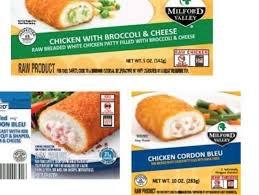 The question arises as to whether the intended action is a response to the specific and defined problem of raw breaded chicken or whether it is the thin edge of a wedge moving towards declaration of specified Salmonella as adulterants in all poultry. Perhaps the action is a compromise response to the long ignored petition by Attorney Bill Marler. In the unlikely outcome of a zero tolerance standard for up to twenty serovars the declaration would be a disaster for the chicken and turkey industries, given the absence of any current pre-harvest or post-harvest method of absolutely eliminating rather than suppressing Salmonella. The question arises as to whether the intended action is a response to the specific and defined problem of raw breaded chicken or whether it is the thin edge of a wedge moving towards declaration of specified Salmonella as adulterants in all poultry. Perhaps the action is a compromise response to the long ignored petition by Attorney Bill Marler. In the unlikely outcome of a zero tolerance standard for up to twenty serovars the declaration would be a disaster for the chicken and turkey industries, given the absence of any current pre-harvest or post-harvest method of absolutely eliminating rather than suppressing Salmonella.
Irradiation, currently rejected by consumers is a highly effective treatment, that if applied correctly will absolutely eliminate Salmonella contamination. Tray packs and IQF portions could be treated by electron beam installations, analogous to x-ray, and would be compatible with existing production layouts. Irradiation of bulk product would require cobalt60 installations predicating a separate and expensive facility.

|
Value of USDA Giveaway Program For Meat Processing Questioned
|
05/29/2022 |
|
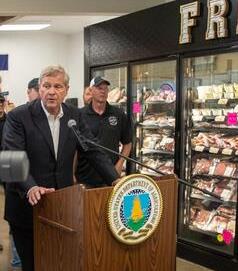 Secretary of Agriculture, Tom Vilsack, has announced grants totaling $200 million under the Meat and Poultry Intermediary Lending Program intended to “strengthen the food supply chain and create opportunities for small businesses and entrepreneurs in rural communities.” Secretary of Agriculture, Tom Vilsack, has announced grants totaling $200 million under the Meat and Poultry Intermediary Lending Program intended to “strengthen the food supply chain and create opportunities for small businesses and entrepreneurs in rural communities.”
Clearly, this amount sprinkled in small grants to nonprofits, cooperatives and tribal entities will do very little to increase meat supply to the Nation. The Department of Agriculture under its current leadership has a misplaced preoccupation with promoting production through any number of small-scale producers. In his previous tenure as Secretary of Agriculture, Vilsack demonstrated an animus towards corporate entities that have followed a path towards consolidation and the establishment of large and highly efficient processing facilities. The red meat industry is, to a large extent, fragmented given that the beef industry comprises independent sectors extending from cow-calf operations through to feed lots and culled dairy cows supplying packing plants. In contrast the broiler and turkey segments of the poultry industry are integrated and less consolidated than beef and pork processing.
Political appointees in the USDA apparently have no grasp of the needs for both fixed and working capital to operate an efficient packing enterprise. Processors to be successful must establish product diversity and distribute beef and pork to the domestic retail market and for export. A $15 million loan to acquire land, build or expand facilities or even to modernize equipment is a drop in the bucket compared to the capital cost of a large-scale beef or pork plant that may approach $1 billion. A proposed beef packing plant in Rapid City, SD. intended to process 8,000 head per day employing 2,500 workers will require an investment of over $1.1 billion. The capital cost per unit of production declines and the productivity of each worker increases with scale of operation.
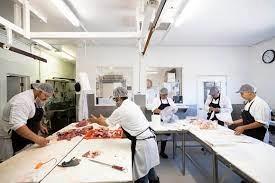 We are supposed to function in a free enterprise, economic system that is in large measure governed by the laws of supply and demand. Attempts to manipulate production or processing by scattering grants to socially disadvantaged and recipients unqualified to obtain commercial loans may well be a waste of public funds without providing benefits to either farmers or consumers. Unfortunately, there are apparently many political appointees within the USDA with public funds at their disposal to implement socio-agronomic policies that fail to take into account the commercial realities of the red meat and poultry industries. We are supposed to function in a free enterprise, economic system that is in large measure governed by the laws of supply and demand. Attempts to manipulate production or processing by scattering grants to socially disadvantaged and recipients unqualified to obtain commercial loans may well be a waste of public funds without providing benefits to either farmers or consumers. Unfortunately, there are apparently many political appointees within the USDA with public funds at their disposal to implement socio-agronomic policies that fail to take into account the commercial realities of the red meat and poultry industries.
In contrast to pork and beef production, the broiler industry is highly integrated and has grown in output at the expense of both red meat sectors, through the principle of efficiency of scale, and applying scientific advances in genetics, nutrition and flock health. This has allowed an expansion of output through investment and the coordination of production and marketing for both export and domestic consumption. The Lincoln Premium Poultry complex located in Fremont, NE. and established by Costco to produce two million standard rotisserie-sized chickens each week required an investment of close to $500 million for a plant, feed mill and hatchery.
Comrade Vilsack and his acolytes should most certainly not interfere in what can be regarded as the most efficient sector of animal protein production. If inappropriate regulation is forced on the poultry industry, growers, shareholders of major companies and consumers will suffer.
It isn’t broken, so please it doesn’t need fixing.

|
Cheesecake Factory To Require California Proposition #12 Standards For Pork
|
05/26/2022 |
|
 Following on from their 2021 Corporate Social Responsibility report, Cheesecake Factory, Inc. will require 75 percent of its pork supply to be derived from sows held under group housing by the end of 2022. During 2021, 30 percent of pork supply was derived from producers that maintained sows in gestation crates for less than 28 days. Following on from their 2021 Corporate Social Responsibility report, Cheesecake Factory, Inc. will require 75 percent of its pork supply to be derived from sows held under group housing by the end of 2022. During 2021, 30 percent of pork supply was derived from producers that maintained sows in gestation crates for less than 28 days.
Megan Bloomer, VP for Sustainability at the Cheesecake Factory stated, “The welfare of all animals throughout our supply chain is critically important to us.” She added, “We are on the path to eliminating gestation crates and thanks to our valued pork suppliers, we are able to further improve the welfare of sows in our supply chain by aligning with California Proposition #12 standards.” Irrespective of the outcome of the appeal by the National Pork Producers Council to the Supreme Court, customers including restaurants and the retail segment have adopted standards conforming to California Proposition #12.
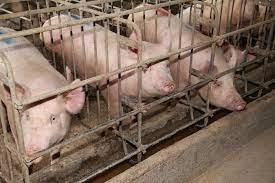 The implications are that standards may be imposed on customers by animal rights organizations through coercion, irrespective of whether they are practical and beneficial. They may demand that retailers and restaurants adopt requirements usually applicable to and devised in the E.U. and then superimposed on U.S. production systems. Where applicable and beneficial, producers have accepted changes to traditional housing and management as exemplified by production of organic broilers and adoption of lower-level GAP requirements for broilers that add to cost but may have the potential to expand the customer base. Providing there is an incremental margin derived from specified welfare standards, producers will be motivated to comply. It is, however, an unfortunate reality that in an inflationary environment, lower income demographics are obliged to be cost conscious. These consumers do not perceive either welfare or sustainability as attributes for which they are willing to pay extra. The implications are that standards may be imposed on customers by animal rights organizations through coercion, irrespective of whether they are practical and beneficial. They may demand that retailers and restaurants adopt requirements usually applicable to and devised in the E.U. and then superimposed on U.S. production systems. Where applicable and beneficial, producers have accepted changes to traditional housing and management as exemplified by production of organic broilers and adoption of lower-level GAP requirements for broilers that add to cost but may have the potential to expand the customer base. Providing there is an incremental margin derived from specified welfare standards, producers will be motivated to comply. It is, however, an unfortunate reality that in an inflationary environment, lower income demographics are obliged to be cost conscious. These consumers do not perceive either welfare or sustainability as attributes for which they are willing to pay extra.
Livestock producers and especially those involved in broiler production should be proactive in promoting the welfare of existing systems to preempt negative publicity. This strategy will in the long-term, be more productive than maintaining a reactive and defensive response after the moral high ground has been seized through web-postings and protests.

|
Bipartisan Demand for Investigation into Possible Price Fixing of Beef
|
05/24/2022 |
|
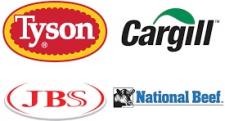 Senators Elizabeth Warren (D-MA) and Senator Mike Rounds (R-SD) have introduced a resolution directing the Federal Trade Commission to determine whether price fixing by beef companies has occurred and to report back to Congress within a year. Senators Elizabeth Warren (D-MA) and Senator Mike Rounds (R-SD) have introduced a resolution directing the Federal Trade Commission to determine whether price fixing by beef companies has occurred and to report back to Congress within a year.
Apparently, Senator Warren is fixated over the fact that four major companies (Cargill, Tyson Foods, JBS US and National Beef Packing Company) are responsible for processing 85% of cattle.  Concentration may not necessarily represent the potential for collusion especially in a competitive market but it does ensure efficiency and consistency in supply. Concentration may not necessarily represent the potential for collusion especially in a competitive market but it does ensure efficiency and consistency in supply.
Countering the prevailing and politically inspired animus against "Big Beef" Donnie King, president of Tyson Foods noted that the “Purchase of cattle from ranchers and feed lots is based on supply and demand and that commercial pressures and availability in relation to demand sets retail prices”.
|
Carl Icahn Challenging The Kroger Company Over Gestation Crates
|
03/31/2022 |
|
On Wednesday, March 30th, the Kroger Company announced that activist investor, Carl Icahn, has submitted a petition nominating two candidates to the Board to be elected at the 2022 annual meeting of shareholders to take place on a date to be announced.
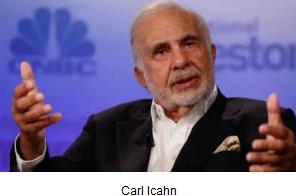 At issue is the demand by Icahn that Kroger Company move more aggressively to reject all pork derived from sows held in gestation crates. At the present time, approximately 25 percent of sows in the U.S. are group-housed in accordance with Proposition #12 and similar legislation in Massachusetts, Florida and Arizona. The newfound concern for welfare on the part of Icahn of livestock apparently stems from a family member affiliated to the HSUS. At issue is the demand by Icahn that Kroger Company move more aggressively to reject all pork derived from sows held in gestation crates. At the present time, approximately 25 percent of sows in the U.S. are group-housed in accordance with Proposition #12 and similar legislation in Massachusetts, Florida and Arizona. The newfound concern for welfare on the part of Icahn of livestock apparently stems from a family member affiliated to the HSUS.
In a prepared statement, Kroger noted that it, “works closely with our key suppliers to understand animal welfare topics and make progress together towards commitments”. The company also maintains that it solicits feedback from internal and third-party animal welfare experts, advocacy groups and customers.
Kroger cannot claim to be concerned over livestock welfare if it countenances gestational crates in pork production. The system is regarded as cruel, resulting in almost lifelong confinement of sentient animals to compartments approximately six by three foot that effectively restricts normal activities.
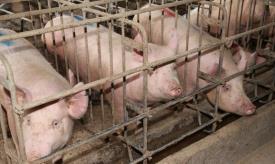 The National Pork Producers Council and the American Farm Bureau Federation have petitioned SCOTUS to consider the constitutionality of Proposition #12 and the case will be heard during the coming term. The National Pork Producers Council and the American Farm Bureau Federation have petitioned SCOTUS to consider the constitutionality of Proposition #12 and the case will be heard during the coming term.
In the interim, a large number of retailers and restaurant chains have indicated that they intend complying with accepted welfare standards. They have been moving progressively in cooperation with suppliers towards sourcing pork derived from sows held under group housing with an allowance of 24 square feet.
The Kroger Company is concerned over shareholder, customer and consumer perception of corporate SGE and goes to great length to publicize commitments to sustainability, welfare and environmental issues through a Public Responsibilities Committee. If members of this Committee and the management of the Kroger Company cannot recognize the inhumanity of confining sows to gestation crates, they need to spend a few days on farms observing sow housing in both crates and group pens.
Following adoption of California Proposition #2 in 2008, the egg industry moved progressively to replace conventional cages with alternative systems including aviaries and barn housing. As of February 2022, 111 million laying hens were maintained in either aviaries or barns out of approximately 310 million hens in production. Progress is indicated by the fact that during the fourth quarter of 2020, only 79 million, hens were housed in other than conventional cages. Since 2008, Cal-Maine Foods has invested more than $418 million in facilities and equipment to convert 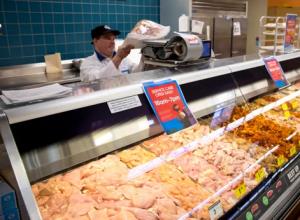 conventional cages on some farms to alternative systems. In compliance with state requirements and responding to consumer and customer demand, Cal-Maine Foods has committed an additional $80 million to expanding cage-free production. conventional cages on some farms to alternative systems. In compliance with state requirements and responding to consumer and customer demand, Cal-Maine Foods has committed an additional $80 million to expanding cage-free production.
The pork industry must recognize that the welfare train has left the station, irrespective of the outcome of their appeal to SCOTUS. Their route should be to follow the lead of egg producers and convert notwithstanding the cost. The alternative to inaction by 75 percent of the industry may be that they will either run out of packers willing to process their hogs or experience lower prices for pork derived from sows in gestation crates. Currently Congress is considering the PIGS Act that would establish a national standard for housing parent level and growing generations.

|
USDA and DOJ Must Get Tough on Meat Smuggling
|
02/21/2022 |
|
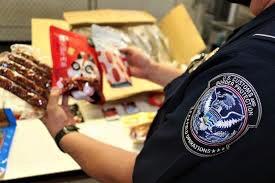 During the last quarter of 2021 APHIS seized and destroyed approximately one ton of prohibited and ilegally imported pork, poultry and ruminant products from New York City retailers. Customs and Border Patrol (CBP) agricultural specialists recently confiscated 300 pounds of bologna at the Pas del Norte border crossing. The CBP issued 1,050 Emergency Action Notifications for prohibited animal products that were seized at the Port of Los Angeles in 2021. During the last quarter of 2021 APHIS seized and destroyed approximately one ton of prohibited and ilegally imported pork, poultry and ruminant products from New York City retailers. Customs and Border Patrol (CBP) agricultural specialists recently confiscated 300 pounds of bologna at the Pas del Norte border crossing. The CBP issued 1,050 Emergency Action Notifications for prohibited animal products that were seized at the Port of Los Angeles in 2021.
The risk and consequense of introducing animal diseases of significance including African Swine Fever, Avian Influenza, Exotic Newcastle disease, Foot and Mouth disease, and Swine Vesicular disease justify more intensive surveillance. As with drugs, the quantity seized is often a fraction of the total quantity smuggled. Since many of the shipments, especially those from China are hidden in containers with manifest documents describing the contents as consumer products, additional manpower and the Beagle Brigade should be reinforced.
 With respect to small retail establishments selling embargoed animal products, federal agents should be deployed in greater numbers and fines should be commensurate with the potential damage that could be caused to the livestock industry and ultimately to consumers. With respect to small retail establishments selling embargoed animal products, federal agents should be deployed in greater numbers and fines should be commensurate with the potential damage that could be caused to the livestock industry and ultimately to consumers.
Given the consequences of introducing an exotic infection, importation or retailing of illegal meat products should not simply result in confiscation and a slap on the wrist. Punitive fines and jail time should be imposed to discourage illegal importation. Ethnic consumers must conform to the norms of American society and relinquish their taste for exotic meats and traditional presentations of pork, beef, and poultry.

|
Iowa Awards Grants to Small Packaging Plants
|
02/02/2022 |
|
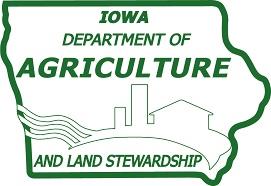 The Iowa Economic Development Authority has awarded 15 grants from the state Butchery Innovation and Revitalization Fund. Grants ranged from $40,000 to $50,000 per applicant. And were intended to allow small-scale meat processors to expand their operations and to conform to acceptable standards of slaughter and processing. The program funded with a $750,000 allocation by the Iowa Legislature requires a 50 percent match by recipients. The Iowa Economic Development Authority has awarded 15 grants from the state Butchery Innovation and Revitalization Fund. Grants ranged from $40,000 to $50,000 per applicant. And were intended to allow small-scale meat processors to expand their operations and to conform to acceptable standards of slaughter and processing. The program funded with a $750,000 allocation by the Iowa Legislature requires a 50 percent match by recipients.
Using public funds to support businesses is acceptable if the state receives either a direct or indirect return. If the individual projects for which there were 54 applications, provided the possibility of a return, commercial finance institutions concentrating on the agricultural sector would have been willing to extend facilities. Given the fact that the state must use public funding to support commercial enterprises suggests a high risk. It will be interesting to learn how the state of Iowa or for that matter any other state or the USDA assess the return from similar grants.
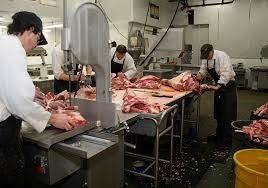 A secondary consideration will be the actual effect on increasing the supply of red meat at a competitive price. Since the 2020 disruption in supply of red meat as a result of COVID among workers in large plants, politicians have recognized the potential for constituent support by questioning the integrity and value of consolidation and economies of scale in red-meat packing. There is a current movement within the USDA to attempt to create an alternative product stream by establishing and expanding small-scale processors that would otherwise have been non-viable. A secondary consideration will be the actual effect on increasing the supply of red meat at a competitive price. Since the 2020 disruption in supply of red meat as a result of COVID among workers in large plants, politicians have recognized the potential for constituent support by questioning the integrity and value of consolidation and economies of scale in red-meat packing. There is a current movement within the USDA to attempt to create an alternative product stream by establishing and expanding small-scale processors that would otherwise have been non-viable.
The Iowa Economic Development Authority has the obligation to justify the expenditure of public funds to support small-scale enterprises by publishing periodic progress reports and subjecting programs to review by disinterested agricultural economists.

|
State Attorneys General Urge Stricter Enforcement of Packers and Stockyards Act
|
12/26/2021 |
|
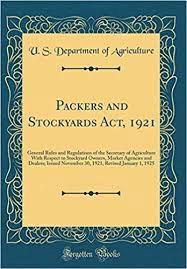 Attorneys General of a number of agricultural states have urged USDA Secretary Tom Vilsack to intensify enforcement of the Packers’ and Stockyards Act 0f 1921. Attorneys General of a number of agricultural states have urged USDA Secretary Tom Vilsack to intensify enforcement of the Packers’ and Stockyards Act 0f 1921.
The Attorneys General maintain that consolidation especially in the beef industry has weakened the bargaining position of beef ranchers and hog producers. The letter stated "this consolidation makes it more difficult for producers to get the best prices for their products, forcing many smaller cattle, hog and chicken farms out of the market".

With regard to broilers, their contention is incorrect since the major integrators own their flocks and provide chicks and feed to contract growers. These independent farmers house and care for flocks during the growing cycle and are paid for the use of their facilities, labor and utilities. The broiler contract system absolves the independent contractor from fluctuations in the market and input costs and ensures regular income as each flock is harvested. The Packers’ and Stockyards Act protects contract growers with regard to accuracy of weight and prevents any manipulation of he basis of payment.
With regard to beef, the Attorneys General encouraged interagency collaboration of government departments and sharing of information with regard to markets. The letter urged the USDA to monitor the relationship between packers and suppliers. The Attorneys General suggested investment in new competitive entrants into meat and poultry processing adding strength to existing small and very small facilities.
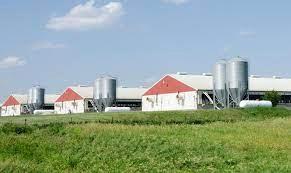 Financial support of small operations would be an unfair use of government funds and would ultimately support inefficiency at the expense of shareholders in existing packing companies. The Attorneys General are obviously interested in exercising existing antitrust legislation for political ends. The letter proposes that the USDA and DOJ investigate ways in which large packers can be dismembered such as occurred with AT&T. This company served as a virtual landline monopoly in the 1970's until enforced breakup occurred in January 1982 after eight years of litigation. Prior to the AT&T breakup, the previous exercise of the Sherman Antitrust Act of 1890 took place in 1911 following the successful lawsuit brought against Standard Oil by the U.S. government. Financial support of small operations would be an unfair use of government funds and would ultimately support inefficiency at the expense of shareholders in existing packing companies. The Attorneys General are obviously interested in exercising existing antitrust legislation for political ends. The letter proposes that the USDA and DOJ investigate ways in which large packers can be dismembered such as occurred with AT&T. This company served as a virtual landline monopoly in the 1970's until enforced breakup occurred in January 1982 after eight years of litigation. Prior to the AT&T breakup, the previous exercise of the Sherman Antitrust Act of 1890 took place in 1911 following the successful lawsuit brought against Standard Oil by the U.S. government.
History is the witness to the fact that when governments attempt to intervene and regulate industries, unintended consequences hurt shareholders and consumers with the major benefit, if any, accruing to politicians and bureaucrats.

|
AFBF Urges Waivers for H-2A Workers from South Africa
|
12/21/2021 |
|
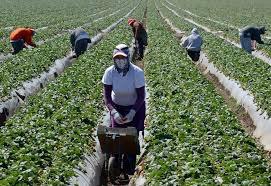 The American Farm Bureau Federation (AFBF) and sixty other agricultural groups are urging the Administration to grant exemptions for H-2A farm workers from South Africa. COVID restrictions placed a hold on approximately 7,000 workers. Given the spread of the Omicron variant of COVID in the U.S. with confirmation of its presence in more than 35 states and with 75 percent of new cases due to this variant, there appears little danger in bringing in vaccinated and tested workers from South Africa for work on fruit and produce farms. The American Farm Bureau Federation (AFBF) and sixty other agricultural groups are urging the Administration to grant exemptions for H-2A farm workers from South Africa. COVID restrictions placed a hold on approximately 7,000 workers. Given the spread of the Omicron variant of COVID in the U.S. with confirmation of its presence in more than 35 states and with 75 percent of new cases due to this variant, there appears little danger in bringing in vaccinated and tested workers from South Africa for work on fruit and produce farms.
The need to introduce temporary workers from the Republic of South Africa and elsewhere denotes the non-availability or disinclination of U.S. citizens to undertake agricultural labor. Relocation westward from the dustbowl in the early1930s to Pacific states supported displaced farmers and contributed to the growth of food production in California, Oregon and Washington. Have we progressed too far from the principle that unemployed people follow opportunities or have our social support programs created a class of “comfortable limpets”? In the immediate term the problem of farm labor will require collaboration 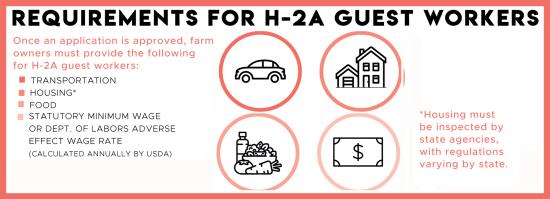 between the Departments of State, Homeland Security and Agriculture and will necessitate an overhaul of immigration legislation that is long overdue. It is evident that higher levels of mechanization will be necessary to reduce labor input in food production with both higher wage rates and capital investment passed on to consumers. between the Departments of State, Homeland Security and Agriculture and will necessitate an overhaul of immigration legislation that is long overdue. It is evident that higher levels of mechanization will be necessary to reduce labor input in food production with both higher wage rates and capital investment passed on to consumers.

|
Plant-Based Burgers Inferior in Amino Acid Value Compared to Pork and Beef
|
12/12/2021 |
|
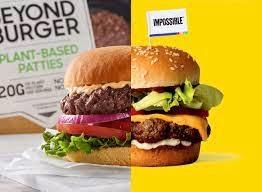 Studies conducted by the University of Illinois and Colorado State University demonstrated that plant-based burgers had lower digestible essential amino acid availability compared to plant-based substitutes. The study* applied the digestible indispensable amino acid score (DIAAS) developed by the Food and Agricultural Organization that measures availability of specific essential amino acids. Beef and pork burgers yielded excellent protein scores in excess of 100 for all ages based on the studies conducted. The Impossible® burger based on pea protein provided an ‘excellent’ score for children aged 3 and up. The Beyond® burger incorporating soy protein was adjudged a ‘good’ source of protein with a DIAAS score of 83. Studies conducted by the University of Illinois and Colorado State University demonstrated that plant-based burgers had lower digestible essential amino acid availability compared to plant-based substitutes. The study* applied the digestible indispensable amino acid score (DIAAS) developed by the Food and Agricultural Organization that measures availability of specific essential amino acids. Beef and pork burgers yielded excellent protein scores in excess of 100 for all ages based on the studies conducted. The Impossible® burger based on pea protein provided an ‘excellent’ score for children aged 3 and up. The Beyond® burger incorporating soy protein was adjudged a ‘good’ source of protein with a DIAAS score of 83.
Professor Hans H. Stein of the Department of Animal Sciences and the Division of Nutritional Sciences at the University of Illinois stated, “We have previously observed that animal proteins have greater DIAAS values than plant-based proteins as observed in this experiment. The nutritional value of plant-based burgers was reduced when fed with a bun. In contrast, the DIAAS scores for beef and pork burgers were not adversely affected when combined with a bun. The study demonstrated the superior amino acid digestibility from animal protein considered a necessary component of the human diet.”
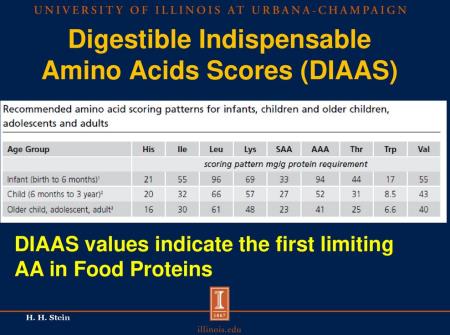
*Fanelli, N. et al Digestible Indispensable Amino Acid Score (DIAAS) is Greater in Animal-Based Burgers Than in Plant-Based Burgers if Determined in Pigs. European Journal of Nutrition (2021) DOI:10.1007/s00394-0210-02658-1.

|
Employers’ Participation in COVID Prevention
|
12/06/2021 |
|
A report by CNBC documents the Willis Tower Watson survey of 543 employers concerning mandatory vaccination of employees against COVID. A total of 57 percent of those responding indicated that they currently  mandate or will require vaccination. Of these companies, 18 percent have already implemented a mandate and 32 percent of employers will follow the OSHA Emergency Temporary Standard when it takes effect. mandate or will require vaccination. Of these companies, 18 percent have already implemented a mandate and 32 percent of employers will follow the OSHA Emergency Temporary Standard when it takes effect.
Following litigation, the Administration has shelved the mandate and enforcement of vaccination for companies with more than 100 employees that would have covered 84 million workers. It is now a reality that average daily COVID case counts are rising and are higher than in late November 2020. With the emergence of the Omicron variant, more employers are considering a firm requirement for vaccination with exceptions only for those with sincere religious beliefs or medical exemptions. Some employers are still concerned over resignations in a tight labor market and others are adopting a wait-and-see response.
Tyson Foods has vaccinated over 97 percent of workers through a coordinated program of providing financial incentives, facilitating on-site vaccination and most recently a company mandate requiring protection.
The 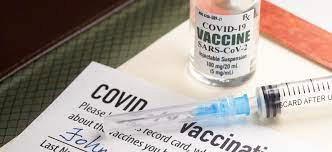 success achieved by Tyson Foods and the National Football League confirms that the Willis Tower Watson survey determined that only three percent of employers reported any appreciable level of resignations following introduction of a vaccine mandate. success achieved by Tyson Foods and the National Football League confirms that the Willis Tower Watson survey determined that only three percent of employers reported any appreciable level of resignations following introduction of a vaccine mandate.
Vaccination is currently required by United Airlines, Delta, CVS Health, most hospitals and retail chains. Predictably vaccine mandates are favored by many employees and in fact have attracted new workers and contributed to retention. Employers will offer testing on a weekly basis to non-vaccinated employees with 90 percent of respondents to the survey either now requiring or planning to enforce masking.

|
Study Points to the Danger of Exotic Animals in Markets in China
|
11/29/2021 |
|
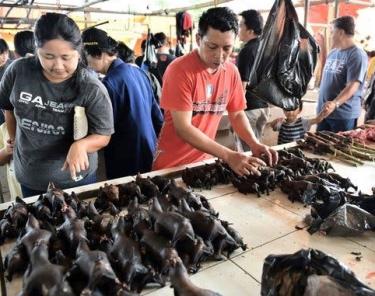 A recent study conducted by international epidemiologists and virologists co-authored by Professor Edward Holmes, an evolutionary biologist at the University of Sidney, Australia, has disclosed a high risk associated with contact between humans and exotic animals in China. The study was in part supported by the National Key Research and Development Program of China and will be subject to peer review with subsequent publication. A preliminary manuscript has been released on bioRxiv an open-access repository. Sponsored research was conducted as a scientific exercise and was not intended to probe the origins of SARS-COVID-2 responsible for COVID. A recent study conducted by international epidemiologists and virologists co-authored by Professor Edward Holmes, an evolutionary biologist at the University of Sidney, Australia, has disclosed a high risk associated with contact between humans and exotic animals in China. The study was in part supported by the National Key Research and Development Program of China and will be subject to peer review with subsequent publication. A preliminary manuscript has been released on bioRxiv an open-access repository. Sponsored research was conducted as a scientific exercise and was not intended to probe the origins of SARS-COVID-2 responsible for COVID.
A dozen species of game animals sold in food markets in China, yielded 71 mammalian viruses including 18 regarded as “high risk” to both people and domestic animals. Civets responsible for the dissemination of severe acute respiratory virus (SARS) two decades ago were regarded as the species carrying the highest number of potentially pathogenic viruses.
As part of the study, Dr. Shuo Su of the Nanchang Agriculture University, College of Veterinary Medicine, examined 1,725 animals from among 16 species collected in 19 provinces in China. Many of the same species were sold at the Huanan Seafood Wholesale Market in Wuhan representing a hazard to consumers and the public in general. Among the findings of the study, pangolins, civets and bamboo rats carried norovirus and influenza B. Cross-species transmission of mammalian viruses was 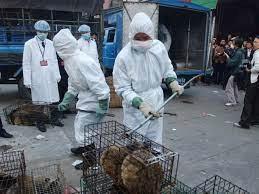 confirmed including isolation of a bat-associated coronavirus in a civets and a swine pneumovirus in pangolins. If bat viruses can infect civets, it is possible that a further “species jump” to human could initiate an outbreak according to Dr. Holmes. He characterized the consumption of exotic species in China as “the right virus in the right animal at the right time could easily trigger a global pandemic.” Dr. Holmes noted, “The study highlights exactly why the wild life trade and live animal markets are a pandemic accident waiting to happen.” confirmed including isolation of a bat-associated coronavirus in a civets and a swine pneumovirus in pangolins. If bat viruses can infect civets, it is possible that a further “species jump” to human could initiate an outbreak according to Dr. Holmes. He characterized the consumption of exotic species in China as “the right virus in the right animal at the right time could easily trigger a global pandemic.” Dr. Holmes noted, “The study highlights exactly why the wild life trade and live animal markets are a pandemic accident waiting to happen.”
Shortly after the emergence of COVID in Wuhan, the Central Government banned trade in exotic species. Consumption of terrestrial wild animals has been prohibited since early 2020.

|
Bilateral Trade in the Background in Virtual Presidential Meeting
|
11/21/2021 |
|
The Monday night virtual discussion between President Biden and his counterpart President Xi was wide-ranging extending over three hours. Topics reviewed included Taiwan, human rights, and cryptocurrency. Although the Phase One Trade Agreement of January 2020 was raised, no definitive decisions emerged from the bilateral meeting attended by top advisors and cabinet members on both sides.

It is comforting to observe that at least the leaders of the two nations are talking and that China watchers are parsing and evaluating post-discussion statements by officials in positions of responsibility in China. Agricultural groups including the American Soybean Association are urging for pressure to be placed on China to comply with the requirements of the Phase One Trade Agreement and negotiating a possible Phase Two Agreement when the current pact expires at the end of 2021.
Statistics estimate that China has only complied with 60 percent of the predicted value of negotiated imports. This is understandable given the slow start to trade in 2020 given COVID lockdowns. In effect, China has exceeded purchases of corn and is close to target on soybeans.

In a recent interview, U.S. Trade Representative Ambassador Katherine Tai counseled for moderation in dealing with China. As a Mandarin speaker and temporary student in China, she understands some of the concerns expressed by President Xi including the need for recognition as an equal partner in the World economy. China wishes the U.S to be less aggressive on sensitive on "internal issues" such as Hong Kong and the treatment of Uyghurs. Unfortunately, these concerns will in the short term, take precedence over agricultural trade.
At the end of the day China will purchase what it needs and will continue to pursue policies that are beneficial to their economy. Requiring them to refrain from industrial espionage, countenancing breaches of cyber security and activities that almost rise to the status of cold-war tactics will only be resolved, if ever, over the long term.

|
Chipotle to Establish Environmental Targets
|
11/08/2021 |
|
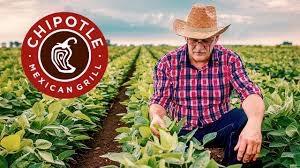 On November 4th Chipotle Mexican Grill announced adoption of the Science Based Targets Initiative to halve greenhouse gas emissions by 2030. On November 4th Chipotle Mexican Grill announced adoption of the Science Based Targets Initiative to halve greenhouse gas emissions by 2030.
In making the announcement, Lori Schalow, Chief of Corporate Affairs and Food Safety Officer noted, "we are committed to continue improvement and will actively do our part to reduce our greenhouse gas emissions and protect the Planet". These sentiments are obligatory for a company catering to a young educated and environmentally conscious clientele.
To achieve the desired targets, the Company will apply smart-energy management systems in restaurants, will purchase renewable energy and install energy-sparing equipment. The company will review transportation and warehousing in an attempt to reduce emissions especially for a third-party delivery of meals that represents a growing component of Chipotle revenue.
Of some concern is the intention of Chipotle to "explore protein and animal management solutions and promote carbon-reducing practices". This implies that Chipotle will either directly or through third party consultants and auditors influence production practices through the supply-chain for ingredients incorporated in Chipotle menus. Initially it is presumed that Chipotle will concentrate on produce, although meat, poultry and eggs incorporated into menu items will come under scrutiny.
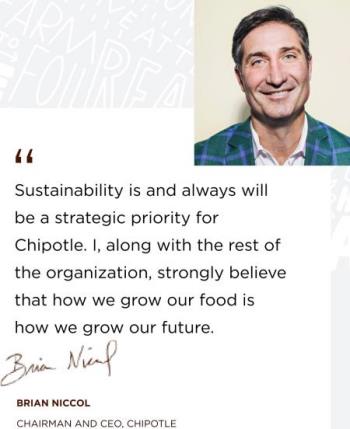 Perhaps the most immediate and achievable component of the program will be to reduce waste and packaging. When services are available, Chipotle will follow closed-loop packaging, reduce waste and divert from landfills. They could also serve smaller portions benefitting both health of their customers and the environment. Perhaps the most immediate and achievable component of the program will be to reduce waste and packaging. When services are available, Chipotle will follow closed-loop packaging, reduce waste and divert from landfills. They could also serve smaller portions benefitting both health of their customers and the environment.
The Science Based Targets initiative comports with an earlier Environmental, Social and Governance (ESG) concentration that will among other components have an influence on executive remuneration.
The question remains as to whether the Chipotle announcement and goals are greenwashing or represent a concerted attempt to conform to norms of environmental compliance. Areas of concern include reducing greenhouse gas emissions, conserving water and energy and reducing diversion to landfills. Progress towards the 2030 goal should be documented in regular sustainability reports.

|
Retailers and Shippers Gearing Up for Christmas Demand
|
10/31/2021 |
|
 This year has experienced increased demand as COVID restrictions are lifted. Concurrently a suppliers are faced with a shortage of workers, disruption in supply chains, congestion at ports and soaring costs for inland transport. In anticipation of the imbalance between supply and demand, major retailers and shippers have addressed deficiencies in their platforms and resources. This year has experienced increased demand as COVID restrictions are lifted. Concurrently a suppliers are faced with a shortage of workers, disruption in supply chains, congestion at ports and soaring costs for inland transport. In anticipation of the imbalance between supply and demand, major retailers and shippers have addressed deficiencies in their platforms and resources.
Amazon is committed to maintaining the supply chain with optimizing safety, speed and efficiency. Their intent is to “get customers what they want, when they want it, wherever they are this holiday season.” UPS has made similar claims and is determined not to repeat delays experienced in past years. Target and Walmart are using third party delivery services but are also promoting in-store and curbside pickup linked to E-mail and text orders.
The extent of investment in facilities and human resources to supply anticipated demand is evidenced by a recent Amazon release. The company announced hiring of 125,000 supply chain employees. Their contribution will however be limited by lack of experience and the need for training. The company has opened 250 new fulfillment centers including regional air hubs and delivery stations during 2021 requiring 100 new physical sites 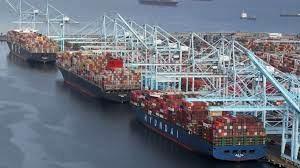 established in September. Amazon, Walmart and Target have chartered vessels to ship products from Asia and are diverting container vessels to ports other than Los Angeles and Long Beach. Amazon anticipates operating a fleet of over 80 aircraft for distribution in an attempt to match the capabilities of FedEx and UPS. established in September. Amazon, Walmart and Target have chartered vessels to ship products from Asia and are diverting container vessels to ports other than Los Angeles and Long Beach. Amazon anticipates operating a fleet of over 80 aircraft for distribution in an attempt to match the capabilities of FedEx and UPS.
Improvements in service will depend on technology including updated inventory control systems ordering, tracking and final delivery. It appears that Walmart may be benefiting from establishing in-house computer technology. Other retailers will benefit from acquisition of high-tech startups.
Progressive and successful U.S. businesses demonstrate flexibility, resourcefulness, planning and coordination at the expense of less efficient competitors. Let us hope that with declining incidence rates of COVID due to higher rates of vaccination with restoration of our economy that the 2021 Christmas season will provide benefits to shareholders, consumers and workers through high demand for chicken and turkey products.

|
Continuing Improvement in COVID Statistics
|
10/24/2021 |
|
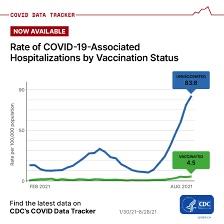 Mackenzie Bean writing in Becker’s Hospital Review, citing data from the Centers for Disease Control for the period ending October 22nd documented the following improvements in COVID statistics: Mackenzie Bean writing in Becker’s Hospital Review, citing data from the Centers for Disease Control for the period ending October 22nd documented the following improvements in COVID statistics:
- The seven-day case average is now 73,079, a 15.1 percent decrease from the previous week.
- The seven-day hospitalization average is 6,004 a 10.3 percent drop from the previous week.
- The current seven-day number of deaths is 1,253 down 4.3 percent from the previous week.
- Approximately 66 percent of the U.S. population has received one dose of a COVID vaccine (220 million) and 57.2 percent have been fully vaccinated representing 190 million.
 The seven-day average number of vaccines administered per day was 795,156 as at October 21st This is a 5.5 percent decrease from the previous week, a figure that is less reassuring. The seven-day average number of vaccines administered per day was 795,156 as at October 21st This is a 5.5 percent decrease from the previous week, a figure that is less reassuring.
- The seven-day average for positivity from testing is 5.2 percent down 4.3 percent from the previous week.
- The seven-day average test volume for the second week of October was 1.4 million down 7.4 percent from the previous week.
- Currently genomic analysis confirms that 99 percent of COVID cases are attributed to the Delta variant
- A CDC model predicts a 20 percent decline in incident cases in the coming four weeks

|
USDA to Embark on an Initiative to Reduce Salmonella Infections
|
10/23/2021 |
|
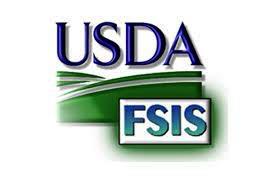 In an October 19th release, the USDA FSIS announced a comprehensive effort to reduce the incidence rate of infections attributed to Salmonella. According to Secretary Tom Vilsack, one million cases of salmonellosis occur annually in the U.S. with an estimate of almost a quarter due to contaminated chicken or turkey products. Vilsack stated, "Today we are taking action to help prevent Salmonella contamination through the poultry supply chain and production system to protect public health". Previously CHICK-NEWS has commented on the statements by Undersecretary Sandra Eskin relating to extending FSIS involvement to pre-harvest control. This corresponds to the Vilsack statement that including "production systems". Secretary Eskin considers that "reducing Salmonella infections attributed to poultry is one of the Department's top priorities". In an October 19th release, the USDA FSIS announced a comprehensive effort to reduce the incidence rate of infections attributed to Salmonella. According to Secretary Tom Vilsack, one million cases of salmonellosis occur annually in the U.S. with an estimate of almost a quarter due to contaminated chicken or turkey products. Vilsack stated, "Today we are taking action to help prevent Salmonella contamination through the poultry supply chain and production system to protect public health". Previously CHICK-NEWS has commented on the statements by Undersecretary Sandra Eskin relating to extending FSIS involvement to pre-harvest control. This corresponds to the Vilsack statement that including "production systems". Secretary Eskin considers that "reducing Salmonella infections attributed to poultry is one of the Department's top priorities".
The USDA intends to request the National Advisory Committee for Microbiological Criteria in Foods to advise on how FSIS can apply technology to improve control of salmonellosis. Implicit in the program is pre-harvest control to reduce the quantum of contamination entering processing plants. The FSIS intends to monitor both the serotypes of Salmonella entering plants and the quantitative and qualitative levels of contamination.
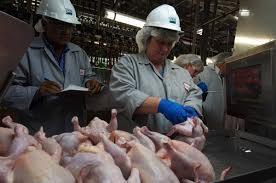 Reference is made to the petition by attorney Bill Marler of Marler Clark, demanding that FSIS declare frequently encountered Salmonella serotypes as adulterants. The FSIS apparently received close to 400 comments on the petition before the May 25th 2020, deadline supporting the petition, Marler cited 26,500 hospitalizations, 420 deaths and 130 outbreaks of salmonellosis annually with a cost ranging from $3 to $7 billion. It is however acknowledged that only a quarter of the cases of salmonellosis are attributed to poultry meat. Epidemiologic evidence points to mishandling, under-cooking and deficient kitchen hygiene in both homes and institutions as responsible for infection. Reference is made to the petition by attorney Bill Marler of Marler Clark, demanding that FSIS declare frequently encountered Salmonella serotypes as adulterants. The FSIS apparently received close to 400 comments on the petition before the May 25th 2020, deadline supporting the petition, Marler cited 26,500 hospitalizations, 420 deaths and 130 outbreaks of salmonellosis annually with a cost ranging from $3 to $7 billion. It is however acknowledged that only a quarter of the cases of salmonellosis are attributed to poultry meat. Epidemiologic evidence points to mishandling, under-cooking and deficient kitchen hygiene in both homes and institutions as responsible for infection.
The program contemplated by the USDA-FSIS will require public comment before rule-making.

|
USDA Awards $10 Million for Research into Cell Cultured Protein
|
10/16/2021 |
|
 The USDA has awarded $10 Million to Tufts University to establish a National Institute for Cellular Agriculture. The grant was part of a $146 million investment in sustainable agricultural research. The USDA has awarded $10 Million to Tufts University to establish a National Institute for Cellular Agriculture. The grant was part of a $146 million investment in sustainable agricultural research.
Professor David Kaplan, an expert in cell cultured meat will head the Institute that will cooperate with scientists at Virginia Tech, Virginia State, University of California-Davis, MIT, and the University of Massachusetts.
The National Center will “integrate research, education, and extension activities to develop innovative technologies and improve outreach and extension activities in cellular agriculture.”
Why the USDA grant?
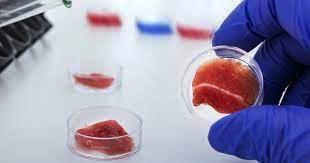 The Department of Agriculture should be supporting traditional livestock production and developing technology that reduces the environmental footprint of beef, pork, and poultry. It is evident that many of the USDA “investments in sustainable agricultural research” run counter to the needs of traditional livestock production. The Department of Agriculture should be supporting traditional livestock production and developing technology that reduces the environmental footprint of beef, pork, and poultry. It is evident that many of the USDA “investments in sustainable agricultural research” run counter to the needs of traditional livestock production.
If cell-cultured meat has a future, it is up to venture capital funds, financial institutions and industry to invest in this technology. as in the E.U and Israel. It is apparent that many of the policies of the present Administration, and specifically the Department of Agriculture, are directed at environmental issues and the policies of the Left to the detriment of traditional agriculture.

|
USDA Promoting Small-Scale Processing
|
10/09/2021 |
|
 On October 5th, the USDA announced an additional $100 million in loan guarantees ostensibly to improve the U.S. supply chain with special reference to the meat and poultry sectors. On October 5th, the USDA announced an additional $100 million in loan guarantees ostensibly to improve the U.S. supply chain with special reference to the meat and poultry sectors.
In July, the USDA indicated their intention to invest $500 million to expand meat and poultry processing capacity with an additional $150 million to support small and very small facilities that were impacted by COVID restrictions. The USDA has already dispersed $55 million to improve existing small plants and the Department is reviewing 250 applications requesting $100 million.
 In commenting on the support programs, USDA Secretary Tom Vilsack, stated “As we build back better we must create more better and fairer markets that enhance competition and create economic opportunities across America’s agriculture and food supply chain.” He added, “This initiative is another meaningful step to act on lessons from COVID-19 to build a food system that is fair, competitive, distributed, and resilient where a greater share of the food dollar goes to those growing, harvesting, processing, and preparing our food.” In commenting on the support programs, USDA Secretary Tom Vilsack, stated “As we build back better we must create more better and fairer markets that enhance competition and create economic opportunities across America’s agriculture and food supply chain.” He added, “This initiative is another meaningful step to act on lessons from COVID-19 to build a food system that is fair, competitive, distributed, and resilient where a greater share of the food dollar goes to those growing, harvesting, processing, and preparing our food.”
The USDA policy of supporting medium and small decentralized plants is supported by the National Cattlemen's Beef Association. Ethan Lane, VP of Governmental Affairs for the Association, stated “The pandemic accentuated a number of vulnerabilities within our supply chains - chiefly the choke point at the meat packing sector which has resulted in unsustainable prices for cattle producers and increased the cost of beef for consumers.”
It is apparent that the events of March through May of 2020, during which COVID restricted most large pork and beef plants to as little as half the regular output, is now being used as an excuse to restructure the meat industry to the advantage of cattle producers and feeders and to reduce the power of the four largest processors.
With respect to the broiler industry, any shortages on shelves during the second quarter of 2020 were due to panic buying and not to any disruption in supply. The U.S. chicken industry has developed into an oligopoly in which the top five producers are responsible for about 65 percent of production. Notwithstanding corporate concentration there are more than 160 plants among 22 states each with an output in excess of 600,000 birds up to 2,500,000 birds per week and operating at a high level of efficiency. As opposed to red meat production the broiler industry is integrated with respect to chick production, grow-out processing, and distribution. This provides security and benefits both to contractors and shareholders and ultimately for consumers.

|
Vaccine Mandates Preceded COVID
|
10/03/2021 |
|
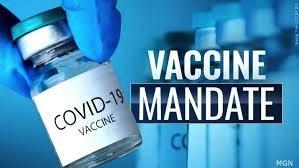 In 1777 General George Washington issued a mandate to vaccinate the Revolutionary Army against smallpox despite an anticipated two percent fatality rate from the crude vaccine used. The preemptive action allowed training to proceed and preserved the readiness of the army to save the United States. Receiving a smallpox vaccine was both patriotic and a recognized measure to preserve life and prevent the complications of the disease. In 1777 General George Washington issued a mandate to vaccinate the Revolutionary Army against smallpox despite an anticipated two percent fatality rate from the crude vaccine used. The preemptive action allowed training to proceed and preserved the readiness of the army to save the United States. Receiving a smallpox vaccine was both patriotic and a recognized measure to preserve life and prevent the complications of the disease.
 Despite legal challenge to vaccine mandates, most states have over the years required school children to be protected against a wide range of diseases. Vaccination has effectively eradicated many childhood diseases in the U.S. The need to continue to vaccinate populations is illustrated by the frequent upsurge in cases of measles as a result of vaccine rejection by various religious sects. In Staphorst a town with a population of 10,000 in the Netherlands experienced an outbreak of poliomyelitis affecting 38 children within a strict Calvinist sect. The outbreak only ceased following compulsory vaccination. The military has for decades imposed vaccine mandates to maintain operational readiness among armed forces deployed to areas where a number of serious infections are prevalent. Despite legal challenge to vaccine mandates, most states have over the years required school children to be protected against a wide range of diseases. Vaccination has effectively eradicated many childhood diseases in the U.S. The need to continue to vaccinate populations is illustrated by the frequent upsurge in cases of measles as a result of vaccine rejection by various religious sects. In Staphorst a town with a population of 10,000 in the Netherlands experienced an outbreak of poliomyelitis affecting 38 children within a strict Calvinist sect. The outbreak only ceased following compulsory vaccination. The military has for decades imposed vaccine mandates to maintain operational readiness among armed forces deployed to areas where a number of serious infections are prevalent.
The recent round of COVID vaccination mandates issued by the Administration, hospital chains, and commercial firms are justified given the need to protect workers from infection by unvaccinated colleagues. Vaccine refusal among healthcare workers and those coming into contact with the elderly is unconscionable. There is no “right to infect” as Justice John Marshall Harlan ruled in 1905 stating that the Constitution did not sanction Americans to behave individually as they chose. In his ruling dealing with a smallpox vaccine mandate he stated, “Real liberty for all could not exist if people could act regardless of the injury that may be done to others.”

|
COVID Update
|
09/24/2021 |
|
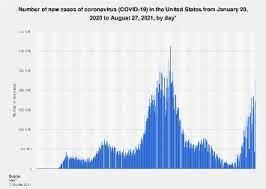 The Johns Hopkins University, Bloomberg School of Public Health maintains a dashboard on global and national COVID statistics. Effective September 23rd the CDC reported 42.8 million diagnosed COVID-19 cases. The current 7-day average daily incidence rate is 126,760 but appearing to be trending downwards. There are currently 89,260 COVID patients in hospital, down from 95,911 in late August. The Johns Hopkins University, Bloomberg School of Public Health maintains a dashboard on global and national COVID statistics. Effective September 23rd the CDC reported 42.8 million diagnosed COVID-19 cases. The current 7-day average daily incidence rate is 126,760 but appearing to be trending downwards. There are currently 89,260 COVID patients in hospital, down from 95,911 in late August.
The CDC has documented 686,346 fatalities. In effect the actual number of COVID deaths probably exceeds 750,000 based on the comparable 2019 mortality rate. Daily mortality that lags incidence is increasing and on September 21st 3,145 fatalities were reported. During the 1918 influenza pandemic, the U.S. with a population of approximately 105 million recorded 675,000 fatalities.
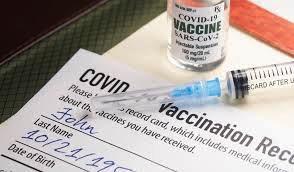 Currently 182 million of our population is fully vaccinated, representing 54.7 percent of the total. Of this number, 66 percent are adults with approximately 12 million adolescents aged between 12 and 17 years. The respective proportions of vaccine types administered to date comprised 55 percent Pfizer-BioNTech; 37 percent Moderna and 8 percent single-dose J&J. The 7-day average daily vaccination rate is 126,760 down from 150,625 in late August. Currently 182 million of our population is fully vaccinated, representing 54.7 percent of the total. Of this number, 66 percent are adults with approximately 12 million adolescents aged between 12 and 17 years. The respective proportions of vaccine types administered to date comprised 55 percent Pfizer-BioNTech; 37 percent Moderna and 8 percent single-dose J&J. The 7-day average daily vaccination rate is 126,760 down from 150,625 in late August.
As widely reported, most of the hospitalizations and virtually all fatalities are in non-vaccinated patients. Serious cases of COVID amongst those who were vaccinated are generally confined to the frail elderly and those with underlying health conditions including diabetes, obesity or immunosuppression. It is noteworthy that a high proportion of incident cases now involve children who are not yet eligible for vaccination and who have returned to school with diverse protective measures of varying intensity including distancing, masking and enhanced ventilation.
There is a clear correlation between low vaccination rates and hospitalization in all areas of the U.S. States with the lowest vaccine compliance are recording the highest levels of hospitalization including admission to ICU wards.
Epidemiologists and immunologists have evaluated data from the U.K. the U.S. and Israel concerning the desirability of booster doses to enhance protection among those who have received one of the three vaccines available in the U.S. At a recent meeting the FDA panel deferred on a firm recommendation for boosting of the public in general but did agree that those over 65 and people with immune suppression or conditions that would render them susceptible to the effects of COVID could receive a booster vaccine. On Friday 24th the CDC firmly recommended to the White House that all recipients over 65 years of age and those with immunosuppression and workers with a high risk of exposure to COVID should receive a booster dose six months after their second mRNA vaccine.
At this time the emphasis should be placed on vaccinating those who are hesitant by assuring them of the safety and efficacy of all three vaccines with the Pfizer-BioNTech mRNA product having received full FDA approval. It is estimated that 70 million eligible residents of the U.S. have yet to receive their first dose of any of the three vaccines. These individuals, many clustered in rural communities, through disseminating the virus are prolonging the pandemic and delaying recovery of our society and economy. Covid is a public health problem and not a political issue.

|
China to Resume Beef Imports from Brazil
|
09/14/2021 |
|
Following evaluation of the report of two sporadic cases of bovine spongiform encephalopathy (BSE) in Brazil, China has agreed to resume importing beef. Consideration of the World Organization for Animal Health (OIE) protocols relating to spontaneous BSE in old cows apparently resulted in lifting the embargo. It is expected that trade will resume by September 19th.
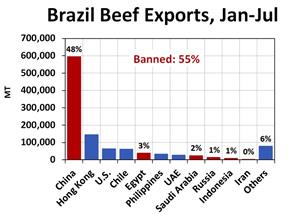 China has a capricious history with regard to OIE rules and precedents. Authorities are prepared to resume beef imports from Brazil but continue to embargo pork from Germany as a result of outbreaks of African swine fever (ASF) affecting wild boars in limited and confined areas of Saxony and Brandenburg. China banned chicken imports from the U.S allegedly due to the 2015 HPAI epornitic but maintained an embargo for four years notwithstanding their own AI status. During this period China transshipped more than half of the paws consigned to Hong Kong to the Mainland. Under conditions of normal and rational trade relations, the OIE principle of regionalization would allow Germany to export pork to China where ASF is endemic in most hog-producing areas of the Nation. China has a capricious history with regard to OIE rules and precedents. Authorities are prepared to resume beef imports from Brazil but continue to embargo pork from Germany as a result of outbreaks of African swine fever (ASF) affecting wild boars in limited and confined areas of Saxony and Brandenburg. China banned chicken imports from the U.S allegedly due to the 2015 HPAI epornitic but maintained an embargo for four years notwithstanding their own AI status. During this period China transshipped more than half of the paws consigned to Hong Kong to the Mainland. Under conditions of normal and rational trade relations, the OIE principle of regionalization would allow Germany to export pork to China where ASF is endemic in most hog-producing areas of the Nation.
Effectively China interprets international trade regulations and implements trade policy based on self-interest and protectionism. China is an untrustworthy trade partner. They import commodities only on the basis of opportunity, need and convenience always seeking advantages and where tolerated applying coercion. No supplier can rely on a stable trade relationship with China based on price, quality and conformity with international trade rules.

|
North American Meat Institute Reacts to Administration Criticism
|
09/12/2021 |
|
 Following statements relating to oligopoly in the red meat and poultry industries, the North American Meat Institute has responded publicly defending the current structure of the meat industry. Following statements relating to oligopoly in the red meat and poultry industries, the North American Meat Institute has responded publicly defending the current structure of the meat industry.
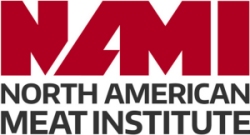 Mark Dopp, COO of the NAMI stated, "as with almost every industry meat and poultry packers and processors of all sizes have been and continued to be effected by the global pandemic and the inflationary trends that challenge the U.S. economy". Mark Dopp, COO of the NAMI stated, "as with almost every industry meat and poultry packers and processors of all sizes have been and continued to be effected by the global pandemic and the inflationary trends that challenge the U.S. economy".
He continued, "American consumers of most goods and services are seeing higher costs largely due to a persistent and widespread labor shortage". The NAMI stresses that poultry and meat markets are competitive and dynamic that this ultimately benefits consumers. It is a general impression in the meat industries that certain members of the Administration do not understand the supply and demand factors and how they affect markets.
It is apparent that the Administration is intent on altering the current concentration in red meat packing. Whether this is justified or achievable is questionable. The important question is the possible outcome of injudicious regulations or creating subsidized competition on food security and ultimately availability and the price to consumers.

|
Instacart Faces Competition in Path to IPO
|
09/01/2021 |
|
 The August 14th edition of The Economist considered the business prospects of Instacart. Ms. Fidji Simo originally from France recently left Facebook to assume the position of CEO of Instacart on August 2nd. Her principal task will be to establish profitability and maintain the goodwill of supermarkets that use the services of the company. It is estimated that Instacart has annual revenue of $1.5 billion and a valuation of $39 billion. Profitability is yet another issue. The August 14th edition of The Economist considered the business prospects of Instacart. Ms. Fidji Simo originally from France recently left Facebook to assume the position of CEO of Instacart on August 2nd. Her principal task will be to establish profitability and maintain the goodwill of supermarkets that use the services of the company. It is estimated that Instacart has annual revenue of $1.5 billion and a valuation of $39 billion. Profitability is yet another issue.
Following the advent of COVID, Instacart gained prominence as the intermediary between supermarkets and customers unwilling to shop in-person. As the economy opens and brick and mortar receives greater patronage, the role of a delivery service is questioned other than for the homebound. Price sensitivity is evident attested by growth of Aldi and other deep discounters. Instacart faces considerable competition from delivery services provided by Shipt owned by Target, Walmart and Amazon Fresh. DoorDash and Uber Eats have extended their services from meal delivery to groceries.
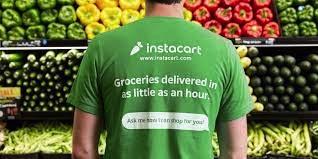 Based on her experience with Facebook, Ms. Simo will extend the scope of Instacart to become a “high-margin digital-ads business”. Ad revenue attained $300 million in 2020 and is growing at a triple-digit rate. Instacart is also considering robotic warehouses to be installed in collaboration with supermarket partners hence an alliance with Fabric of Israel that has developed technology and installations suitable for integrating supermarket inventory with customer delivery. This strategy may be too late as a number of supermarket chains are establishing their own platforms and installations including Kroger and Walmart, essentially to compete with Amazon Fresh. Based on her experience with Facebook, Ms. Simo will extend the scope of Instacart to become a “high-margin digital-ads business”. Ad revenue attained $300 million in 2020 and is growing at a triple-digit rate. Instacart is also considering robotic warehouses to be installed in collaboration with supermarket partners hence an alliance with Fabric of Israel that has developed technology and installations suitable for integrating supermarket inventory with customer delivery. This strategy may be too late as a number of supermarket chains are establishing their own platforms and installations including Kroger and Walmart, essentially to compete with Amazon Fresh.
The Prospectus issued in advance of the inevitable Instacart IPO will make interesting reading. The filing will denote the intended future relationship of the Company with respect to supermarkets.

|
Consumers Accepting Face Mask Mandates
|
08/27/2021 |
|
 New Hope, a research group has documented a willingness by consumers to wear face coverings in indoor areas. In late July, 39 percent of respondents indicated a definite intention of remasking. An August 9th survey indicated an increase in mask compliance to 50 percent. Conversely, respondents who indicated that they would probably not wear masks dropped from 12 percent to six percent over the two week period. The change in attitude is attributed to the emergence of the Delta variant and the realization that clinical cases, hospitalizations, and fatalities are increasing sharply, especially in counties and states with a low proportion of the eligible population vaccinated. Approximately 65 percent of respondents considered that masks should be worn in supermarkets, indoor concerts, and sporting events. A high proportion of consumers indicated that they were more comfortable in stores with a mask mandate especially for employees and fellow customers. New Hope, a research group has documented a willingness by consumers to wear face coverings in indoor areas. In late July, 39 percent of respondents indicated a definite intention of remasking. An August 9th survey indicated an increase in mask compliance to 50 percent. Conversely, respondents who indicated that they would probably not wear masks dropped from 12 percent to six percent over the two week period. The change in attitude is attributed to the emergence of the Delta variant and the realization that clinical cases, hospitalizations, and fatalities are increasing sharply, especially in counties and states with a low proportion of the eligible population vaccinated. Approximately 65 percent of respondents considered that masks should be worn in supermarkets, indoor concerts, and sporting events. A high proportion of consumers indicated that they were more comfortable in stores with a mask mandate especially for employees and fellow customers.
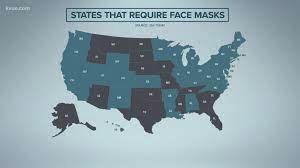 The FDA approval of the Pfizer-BioNTech mRNA vaccine has contributed to mandates that will be adopted by the food supply chain from production through processing to retail. Concurrently in many jurisdictions, state, county, or municipal authorities require masks in public places relieving retailers of the obligation to unilaterally require masks. Enforcement may still be a problem, especially with customers that are opposed to commonsense precautionary measures regarded as a “freedom and individual rights issue” and not simply a public health measure. The FDA approval of the Pfizer-BioNTech mRNA vaccine has contributed to mandates that will be adopted by the food supply chain from production through processing to retail. Concurrently in many jurisdictions, state, county, or municipal authorities require masks in public places relieving retailers of the obligation to unilaterally require masks. Enforcement may still be a problem, especially with customers that are opposed to commonsense precautionary measures regarded as a “freedom and individual rights issue” and not simply a public health measure.

|
U.S. and Mexico to Hold Economic Discussions
|
08/22/2021 |
|
 According to the August 23rd edition of the USAPEEC MondayLine, officials representing the Government of Mexico and their counterparts in the U.S. Administration will hold talks in Washington on September 9th to address trade and economic issues. Topics of concern will include maintaining the integrity of supply chains, worker migration and economic cooperation. The agriculture segment of the U.S. is dependent on southern labor and Mexico is the leading importer of U.S. poultry products valued at $465 million during the first half of 2021. According to the August 23rd edition of the USAPEEC MondayLine, officials representing the Government of Mexico and their counterparts in the U.S. Administration will hold talks in Washington on September 9th to address trade and economic issues. Topics of concern will include maintaining the integrity of supply chains, worker migration and economic cooperation. The agriculture segment of the U.S. is dependent on southern labor and Mexico is the leading importer of U.S. poultry products valued at $465 million during the first half of 2021.
 It is now apparent that migrants from Central America might be dissuaded from moving northward to the U.S. if they are able to participate in economic opportunities in Southern Mexico. It is possible that the U.S. will consider establishing maquiladoras in designated areas in Mexico to provide migrants from Honduras, Nicaragua and El Salvador with some form of economic security and personal safety. Most politicians recognize that constructing an intrusion-proof border with Mexico is both a financial and practical impossibility, despite the rhetoric. It is now time to consider alternatives that will require the cooperation of our southern neighbor, and advancing humanitarian principles within the scope of the USMCA. It is now apparent that migrants from Central America might be dissuaded from moving northward to the U.S. if they are able to participate in economic opportunities in Southern Mexico. It is possible that the U.S. will consider establishing maquiladoras in designated areas in Mexico to provide migrants from Honduras, Nicaragua and El Salvador with some form of economic security and personal safety. Most politicians recognize that constructing an intrusion-proof border with Mexico is both a financial and practical impossibility, despite the rhetoric. It is now time to consider alternatives that will require the cooperation of our southern neighbor, and advancing humanitarian principles within the scope of the USMCA.

|
Food Service and Chains Subscribe to Better Chicken Commitment
|
08/05/2021 |
|
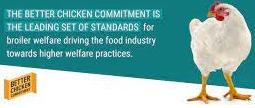 Welfare activist organization, Compassion in World Farming USA, has announced that Aramark, Compass Group, Nestle USA, Panera Bread, Shake Shack, Sodexo, and Target have formed the Working Group for Broiler Welfare. Welfare activist organization, Compassion in World Farming USA, has announced that Aramark, Compass Group, Nestle USA, Panera Bread, Shake Shack, Sodexo, and Target have formed the Working Group for Broiler Welfare.
This consortium has committed to the Better Chicken Commitment that comprises:
- Maximum stocking density of 6.0 pounds per square foot
- Enriched environment including lighting to meet Global Animal Partnership Standards
- Controlled-atmosphere stun-to-kill
- Third-party auditing
- By 2026, slow-growing breeds will be required consistent with the RSPCA Broiler Breed Welfare Assessment Protocol.
These requirements will obviously restrict sourcing to specific producers that are willing to invest in compliance and will incur additional costs. With the exception of Target, the list of participating companies (“the usual suspects”) are able to pass on additional costs to consumers. This is especially the situation with the food service companies that supply corporate dining and universities where sentiment is more important than price.
 Target may come to regret their affiliation, especially when slow-growing breeds are required in four and a half years time since they will be at a competitive disadvantage relative to other major supermarket chains. CHICK-NEWS favors choice with alternatives to conventional products offered at higher prices but with commensurate and factual information to consumers. Target may come to regret their affiliation, especially when slow-growing breeds are required in four and a half years time since they will be at a competitive disadvantage relative to other major supermarket chains. CHICK-NEWS favors choice with alternatives to conventional products offered at higher prices but with commensurate and factual information to consumers.
The Compassion in World Farming Standards are essentially adopted from E.U. and U.K. specifications that have little scientific justification and are based on sentiment and anthropomorphism. The underlying objective is less “welfare” than outright dismantling of livestock production in favor of a vegan diet.

|
Argentine Beef Exports Fall
|
07/15/2021 |
|
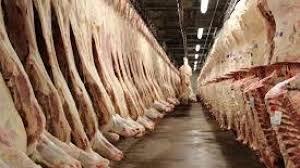 As a result of the injudicious decision by the Government of Argentine to restrict exports, volume fell by 6.6 percent in May 2021 to 55,700 metric tons compared to the corresponding month in 2020. The ban on exports took effect in mid-May and accordingly June shipments will be considerably lower. It is estimated that China receives 77 percent of beef shipments exported by Argentine. As a result of the injudicious decision by the Government of Argentine to restrict exports, volume fell by 6.6 percent in May 2021 to 55,700 metric tons compared to the corresponding month in 2020. The ban on exports took effect in mid-May and accordingly June shipments will be considerably lower. It is estimated that China receives 77 percent of beef shipments exported by Argentine.
The Government attempted to reduce the price of beef for domestic consumers by imposing a ban on exports to all but a few nations. The unintended result was that abattoirs were closed reducing domestic supply, raising prices and contributing to unemployment. Restricting exports resulted in a substantial reduction in foreign earnings that will further exacerbate the dire economic situation. An example of truly ham-handed management of an economy by a beleaguered socialist Peronista government quickly running out of “someone else’s money” --to quote a pevious U.K. Prime Minister, Margret Thatcher.
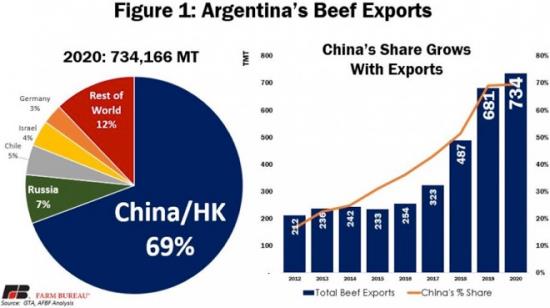
|
Nature’s Fynd Receives VC Funding
|
07/08/2021 |
|
Chicago-based Nature’s Fynd Inc. has raised $158 million from VC companies apparently representing Jeff Bezos, Bill Gates, and Al Gore. These names are quoted (or misquoted) frequently in press reports on wannabee IPOs. Implied endorsement provides a measure of implied approval, verging on the  sanctification of any business plan involving sustainability, welfare and even profit. Natures Fynd intend to deliver meatless breakfast patties and burgers based on a range of fungal cultures early in 2022. sanctification of any business plan involving sustainability, welfare and even profit. Natures Fynd intend to deliver meatless breakfast patties and burgers based on a range of fungal cultures early in 2022.
The entire alternative foods sector with an emphasis on dairy products achieved sales of $7 billion in 2020, representing a 27 percent increase over the previous year, albeit from a small base. Sales of alt. foods should be compared to the $733 billion conventional food industry. Aware of the growth and popularity of alt. meats, major protein producers including Hormel, Cargill, Perdue, and Maple Leaf Foods have invested in their own brands competing with Beyond Meat and Impossible Foods.
Considerable publicity is accorded to the adoption of an alt. meat product by a QSR or restaurant chain even if only as a test. In contrast there is less media coverage following the quiet removal of alt. meat menu items.
Much of the growth in alt. meat products is attributed to the curiosity factor. Given the low number of committed vegetarians among consumers and the shifting volume of flexitarians, demand will increase, but at a slower rate and nowhere near attainment of a 60 percent market share of global sales of conventional meat by 2040. Projections by some  industry observers are simply extrapolations of recent annual increases over the long term. Alt. meats as with any product undergo life cycles. industry observers are simply extrapolations of recent annual increases over the long term. Alt. meats as with any product undergo life cycles.
A major restraint to future expansion of alt. meat is the apparent lack of profitability. Reports from public-quoted companies where financial data is disclosed denote a high cost of production and little confirmation of economies of scale in production.

|
Elimination of Feral Hogs
|
07/06/2021 |
|
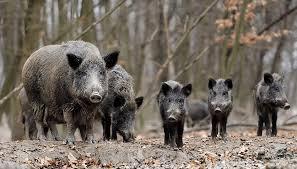 The emergence of African swine fever in Europe and Asia has highlighted the role of feral hogs in both perpetuating and disseminating infection. It is estimated that there are more than seven million wild hogs in the U.S. that are collectively responsible for close to $3 billion in damage to crops, fencing and pastureland each year. If African swine fever were to be introduced into the feral hog population, the U.S. would lose export markets and the cost of control and eradication would be immense. The emergence of African swine fever in Europe and Asia has highlighted the role of feral hogs in both perpetuating and disseminating infection. It is estimated that there are more than seven million wild hogs in the U.S. that are collectively responsible for close to $3 billion in damage to crops, fencing and pastureland each year. If African swine fever were to be introduced into the feral hog population, the U.S. would lose export markets and the cost of control and eradication would be immense.
CHICK-NEWS has reported previously on measures to eliminate hogs on a county and state basis. Colorado, Nebraska, Iowa and Minnesota now claim to have eliminated their feral hog populations.
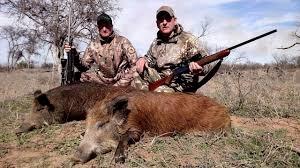
It now emerges that hunting although in some cases an effective method of reducing local populations of feral hogs may in fact contribute to the larger problem. There are documented cases of feral hogs being deliberately introduced into areas where they were previously eliminated to allow sport hunting. Hog populations are maintained in some states including Oklahoma where hunters pay for the privilege of shooting these animals.
Given the present damage caused by feral hogs and the diseases they carry and their potential to destroy the domestic hog industry in the event of introduction of African swine fever, the USDA and the Department of Interior should cooperate to mount a proactive program with the objective of complete eradication. The privilege of hunting feral hogs and the income of a limited number of hunting preserves should be sacrificed for the broader objective of preserving domestic hog production. The U.S. Industry will produce 28,191 million lbs. of pork in 2021 representing a valuable source of protein for domestic consumers estimated to attain 50.8 lbs per capita and foreign exchange earnings through export of 6,57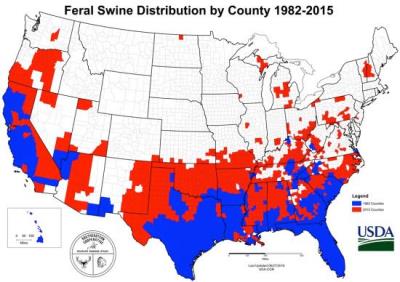 0 million lbs. of carcass weight. 0 million lbs. of carcass weight.

|
E.U. Wasted Funding on Agricultural Subsidies to Modify Climate
|
06/24/2021 |
|
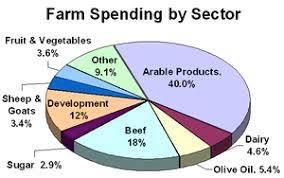 A report by the European Court of Auditors released on June 21st confirmed that $140 billion spent on agricultural subsidies to reduce climate change since 2014 was effectively wasted. The report stated that the Common Agricultural Policy, under which grants were extended to farmers, “failed to support more climate-friendly farming practices.” The report also stated that “funds distributed during the period 2014-2020 to modify climate change had little impact on agricultural emissions.” A report by the European Court of Auditors released on June 21st confirmed that $140 billion spent on agricultural subsidies to reduce climate change since 2014 was effectively wasted. The report stated that the Common Agricultural Policy, under which grants were extended to farmers, “failed to support more climate-friendly farming practices.” The report also stated that “funds distributed during the period 2014-2020 to modify climate change had little impact on agricultural emissions.”
Recent evaluation suggests that the Common Agricultural Policy currently under negotiation must include practical measures to reduce greenhouse gas emissions. Farming contributes ten percent of E.U. emissions with livestock responsible for half of this release. 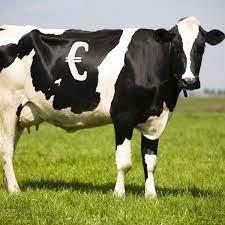 To date the Common Agricultural Policy has promoted animal production and subsidies have supported dairy and beef herds. Shifting subsidies to organic farming has apparently not reduced emissions and funds have increased levels of fertilizer application. Other deleterious and inadvertent results from Common Agricultural Policy grants include cultivating drained peatlands liberating carbon dioxide that has been sequestered over millennia. To date the Common Agricultural Policy has promoted animal production and subsidies have supported dairy and beef herds. Shifting subsidies to organic farming has apparently not reduced emissions and funds have increased levels of fertilizer application. Other deleterious and inadvertent results from Common Agricultural Policy grants include cultivating drained peatlands liberating carbon dioxide that has been sequestered over millennia.
Developing appropriate agricultural practices to reduce greenhouse gas emissions will require leadership with the application of science rather than politics that has directed E.U. policy on agriculture for the past two decades. Experience gained in the E.U could be beneficially adopted in the U.S. in framing measures to reduce greenhouse gas emissions by agriculture.

|
Colorado Initiative 16 Rejected by State Supreme Court
|
06/24/2021 |
|
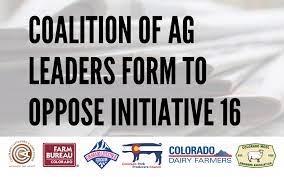 Two extreme activists in the Boulder, CO. area drafted Initiative #16 that was intended to appear on the 2022 state ballot. The initiative termed Protect Animals from Unnecessary Suffering and Exploitation (PAUSE) would have effectively shut down the livestock industry in the state. Provisions included requiring all livestock and poultry slaughtered to have spent a quarter of their "natural lifespan" before slaughter. The natural lifespan for bovines was defined as 20 years; hogs 15 years; turkeys 10 years and chickens 8 years. The authors of Initiative #16 included a bizarre definition of "sexual act with an animal" that would have forbidden artificial insemination, intervention at calving and lambing to relieve dystocia and a ban other conventional preventive and therapeutic practices performed by veterinarians and ranchers including neutering of pets Two extreme activists in the Boulder, CO. area drafted Initiative #16 that was intended to appear on the 2022 state ballot. The initiative termed Protect Animals from Unnecessary Suffering and Exploitation (PAUSE) would have effectively shut down the livestock industry in the state. Provisions included requiring all livestock and poultry slaughtered to have spent a quarter of their "natural lifespan" before slaughter. The natural lifespan for bovines was defined as 20 years; hogs 15 years; turkeys 10 years and chickens 8 years. The authors of Initiative #16 included a bizarre definition of "sexual act with an animal" that would have forbidden artificial insemination, intervention at calving and lambing to relieve dystocia and a ban other conventional preventive and therapeutic practices performed by veterinarians and ranchers including neutering of pets
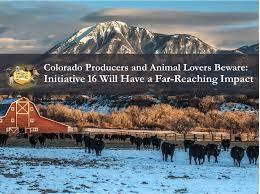 The Colorado Supreme Court rejected the measure on the basis of a violation of the single-subject rule of the Colorado Constitution. In their unanimous opinion, the justices recognized that "the Initiative’s central theme is incorporating livestock into an animal cruelty statute but expanding the definition of "sexual act with an animal" would criminalize additional conduct regardless of whether that conduct is directed at livestock or other animals". The Colorado Supreme Court rejected the measure on the basis of a violation of the single-subject rule of the Colorado Constitution. In their unanimous opinion, the justices recognized that "the Initiative’s central theme is incorporating livestock into an animal cruelty statute but expanding the definition of "sexual act with an animal" would criminalize additional conduct regardless of whether that conduct is directed at livestock or other animals".
The Pause Act characterizes the deep divide between urban residents and livestock producers. In Colorado, production and processing contributes more than $5 billion to the state economy and supports 150,000 jobs. Even though Initiative #16 as currently framed will not appear on the 2022 state ballot, it is evident that opponents of intensive livestock production will continue to propose initiatives to be submitted to voters. Legislation by ballot incorporated in the constitutions of a number of western states is evidently detrimental with respect to agricultural, environmental and social issues and has the potential to create disruption of existing industries and activities and inflate the cost of food.

|
UGA Evaluates Drip Trays for Broilers
|
06/16/2021 |
|
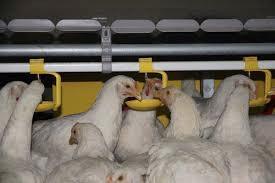 Michael Czarick of the Poultry Science Department, University of Georgia recently completed Project F-085 funded by the USPOULTRY Foundation to evaluate drip trays for nipple type drinkers. The study was conducted on a commercial farm comprising three houses each divided into four sections. Five of the sections were fitted with nipple drinkers with drip trays and five sections with identical nipple drinkers without drip trays as controls. Two sections were equipped with two drinker lines with drip trays and two without. The report did not specify the make or model of the nipple drinkers evaluated. Michael Czarick of the Poultry Science Department, University of Georgia recently completed Project F-085 funded by the USPOULTRY Foundation to evaluate drip trays for nipple type drinkers. The study was conducted on a commercial farm comprising three houses each divided into four sections. Five of the sections were fitted with nipple drinkers with drip trays and five sections with identical nipple drinkers without drip trays as controls. Two sections were equipped with two drinker lines with drip trays and two without. The report did not specify the make or model of the nipple drinkers evaluated.
There were no significant differences in “water usage”, assumed to be the readings of water meters with or without drip trays beneath the nipple drinkers. Litter from the sections fitted with drip trays had lower moisture content and water activity from day-7 through depletion. Through the first 21 days of the trial, there were no differences in the prevalence of footpad lesions in flocks that could be attributed to installation of drip trays. All four flocks without drip trays showed numerically higher (but non-statistically different) footpad lesion scores at 28-days of age. Despite isolation of Salmonella from litter in preceding flocks, the pathogen was not isolated from drip trays.
The results that appear to favor installation of catch trays should be evaluated in relation to the concepts expressed in an interview with Robert Hosteler of Ziggity Systems posted in this edition of CHICK-NEWS. Appropriate adjustment of water pressure in relation to the dynamic discharge rate of the nipple drinker line relative to the growth rate of the flock, house temperature and water quality, will determine the proportion of water ingested relative to the quantity of water released from a nipple. The difference between water delivered and water ingested represents wastage. Drip trays are intuitively beneficial if the water discharged from a nipple drinker delivers a volume in excess of the capacity of the oral cavity. Water will dribble from the beak opening before being swallowed. An analogy is the ability to drink from a garden hose on a hot day. Only a fraction of water released from the nozzle is actually swallowed.
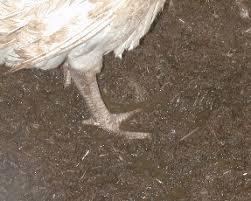 The observation that Salmonella could not be isolated from drip trays is inconsistent with the fact that bacteriologic assay of the muddy residue in trays invariably indicates heavy bacterial contamination recorded by laboratories as “Too Numerous to Count’ (TNC). Since broilers display coprophagy, drinking from drip trays should in theory result in ingestion of whatever bacteria are present in the litter. Installation of drip trays defeats the objective of a closed watering system intended to reduce intra-flock transmission of pathogens. The observation that Salmonella could not be isolated from drip trays is inconsistent with the fact that bacteriologic assay of the muddy residue in trays invariably indicates heavy bacterial contamination recorded by laboratories as “Too Numerous to Count’ (TNC). Since broilers display coprophagy, drinking from drip trays should in theory result in ingestion of whatever bacteria are present in the litter. Installation of drip trays defeats the objective of a closed watering system intended to reduce intra-flock transmission of pathogens.
The conclusion that may be derived from the study is that if nipple drinker watering systems are managed inappropriately or if ventilation rate is too low to remove moisture from litter, drip trays are advantageous. If nipple drinkers with appropriate dynamic water discharge rates are installed and the system is managed appropriately with respect to water column pressure and house ventilation, drip cups are unnecessary and could be deleterious.

|
Inappropriate Proximity of CAFOs to Cultivation of Produce and Food Production
|
06/16/2021 |
|
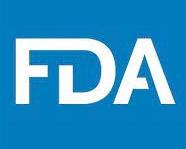 The correlation between Concentrated Animal Feeding Operations (CAFOs) and contamination of green produce with Shigella-toxin producing E.coli (STEC) grown in the Yuma Valley of Arizona and the Imperial Valley of California has been clearly demonstrated. Contaminated irrigation water is the apparent link between CAFOs and produce. The correlation between Concentrated Animal Feeding Operations (CAFOs) and contamination of green produce with Shigella-toxin producing E.coli (STEC) grown in the Yuma Valley of Arizona and the Imperial Valley of California has been clearly demonstrated. Contaminated irrigation water is the apparent link between CAFOs and produce.
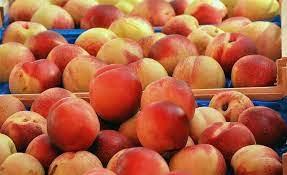 The CDC and FDA recently investigated an outbreak of Salmonella Enteritidis with peaches as the vehicle of infection. The Centers for Disease Control diagnosed 101 cases in 17 states. Traceback suggested a specific peach grower-packer as the source of infection. The peach orchard is located in an area with a broiler grow-out farm on the northwest boundary and a dairy farm on the east side of the property. The CDC and FDA recently investigated an outbreak of Salmonella Enteritidis with peaches as the vehicle of infection. The Centers for Disease Control diagnosed 101 cases in 17 states. Traceback suggested a specific peach grower-packer as the source of infection. The peach orchard is located in an area with a broiler grow-out farm on the northwest boundary and a dairy farm on the east side of the property.
Over 700 samples were examined, including 180 leaves from peach trees, 20 peaches, 480 environmental samples and peach products from three packing and holding facilities. The outbreak strain of SE was not identified in any of the samples. Salmonella Alachua was isolated from environmental samples and corresponded to surveillance swabs from the broiler farm. Salmonella Montevideo was common to environmental samples and the dairy farm.
Recommendations from the extensive report suggested that growers should be aware of risks associated with airborne dissemination of pathogens from adjacent CAFOs. Preventive recommendations should be applied in accordance with the Produce Safety Rule, a component of the Food Safety Modernization Act. Pre- and post harvest sampling is advised, although sampling in itself does nothing to prevent contamination of the food chain unless appropriate action is taken to interpose a kill-step in processing. The need for traceability is self-evident given the extent of the distribution of peaches purchased in stores individually or in packs.
The study conducted by the FDA demonstrated the interconnection between livestock production, orchards, packing plants, the distribution system and consumers. FDA stressed that food safety is a shared responsibility. Effectively food growers or packers should recognize the possibility (or inevitability?) of contamination of product, either through irrigation water or fugitive dust. Appropriate procedures to suppress potential pathogens are required during packing and before distribution.

|
U.S. Establishes Strike Force on Unfair Trade Practices
|
06/11/2021 |
|
A supply-chain strike force under the leadership of the U.S. Trade Representative, will review critical areas of vulnerability. Initial priorities will include a shortage of computer chips that created bottlenecks in the manufacture of vehicles, availability of medical equipment and PPE during the COVID-19 pandemic, reliance on India and China for pharmaceutical products and rare earths.
|

Adversaries USTR Tai (left) V-P He (right) |
|
The President ordered a review of critical supply chains in February requesting reports from executive agencies within a hundred days. More detailed analysis and evaluation is anticipated within a year addressing deficiencies in domestic manufacturing with recommend remedial policies.
The Department of Commerce is aware of unfair trade practices from a number of foreign nations. The 2020 Phase-One Trade Agreement with China incorporated provisions to make progress on reducing government subsidies to quasi-state and corporate entities and coercive transfer of intellectual property.

According to an article in Reuters, the U.S. was not looking to wage a trade war, but the strike force would focus on targeted products. The Defense Production Act will be used to expedite manufacture of up to a hundred critical drugs and efforts are in progress to re-shore production of computer chips. A task force will be established to evaluate home building, construction and transportation to reduce the prospect of future inflation. The Department of Commerce considers it necessary to widen the supply chain for crucial products to include allies and partners to reduce reliance on “geopolitical competitors”.
Establishing a trade war with China could have severe implications on export of agricultural commodities as noted in 2018 and extending in to 2019. Current importation of soybeans, corn, poultry and meat products by China are a reflection more of domestic need rather than any magnanimity of the part of the world’s second largest economy. Without extreme pressure, China will not change its trade policies since the nation is committed to dominance in trade in Asia and competition, fair and unfair with the U.S. in all markets, consistent with their national aspirations.
|

|
Employers Can Mandate COVID Vaccination
|
06/06/2021 |
|
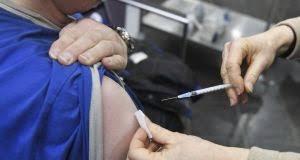 According to a May 28th release by the U.S. Equal Employment Opportunity Commission, (EEOC) employers can mandate COVID vaccination to all employees entering the workplace with certain exemptions. The guidance issued by the EEOC although employers can mandate COVID vaccination, they must provide reasonable accommodation under the Americans with Disabilities Act for those seeking exemptions. Employers may require unvaccinated employees to wear face covering and to observe social distancing and even receive testing for infection with SARS-CoV-2 responsible for COVID. According to a May 28th release by the U.S. Equal Employment Opportunity Commission, (EEOC) employers can mandate COVID vaccination to all employees entering the workplace with certain exemptions. The guidance issued by the EEOC although employers can mandate COVID vaccination, they must provide reasonable accommodation under the Americans with Disabilities Act for those seeking exemptions. Employers may require unvaccinated employees to wear face covering and to observe social distancing and even receive testing for infection with SARS-CoV-2 responsible for COVID.
Employers may incentivize employees to be vaccinated provided benefits are not regarded as coercive. In the process of arranging for vaccination, care must be exercised to maintain confidentiality regarding the medical information relating to all employees especially if an exemption is requested.
 Employers can require employees to provide proof of vaccination, but vaccination information must be held in confidence and should not be included in the employee personnel file. Employers can require employees to provide proof of vaccination, but vaccination information must be held in confidence and should not be included in the employee personnel file.
Vaccination is regarded as an exceptionally efficient method of reducing transmission of SARS-CoV-2 within the workplace and it is obviously in the interest of the employer, the employee and the community to establish a high level of immunity in the workforce.
As with any vaccination, immune status will wane over time and within a population of workers, introduction of new presumably non-vaccinated individuals will reduce the level of herd immunity. It is unknown whether booster vaccination will be required at intervals since the response to vaccination that was only initiated in January has yet to be evaluated. Studies conducted in the EU, Israel and the U.S. suggest that durable immunity persists for at least five months following two doses of either of the approved mRNA vaccines.

|
UK Considering Ban on Foie Gras
|
05/28/2021 |
|
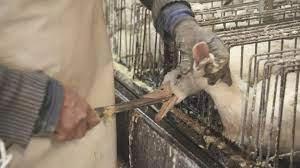 As a component of the proposed U.K. Welfare and Conservation of Animals regulations, a ban would be imposed on the importation and sale of foie gras. The trade group representing producers maintain that “foie gras is a high-quality product which complies with all EU standards regarding animal health and welfare.” The spurious justifications for perpetuating foie gras production including allusions to the gastrointestinal tract of anseriformes are gross distortions of fact and are unconvincing. As a component of the proposed U.K. Welfare and Conservation of Animals regulations, a ban would be imposed on the importation and sale of foie gras. The trade group representing producers maintain that “foie gras is a high-quality product which complies with all EU standards regarding animal health and welfare.” The spurious justifications for perpetuating foie gras production including allusions to the gastrointestinal tract of anseriformes are gross distortions of fact and are unconvincing.
Foie gras production is banned in the Czech Republic, Finland, Italy, Poland, and Turkey. Production in Britain has been illegal since 2006. 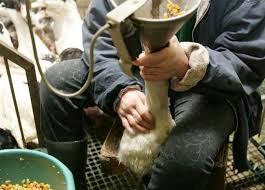 The organization representing producers has adopted the term “assisted feeding” in place of gavage that in essence represents mechanized stuffing of the esophagus and proventriculus of closely confined ducks and geese to induce a pathological fatty liver regarded as a delicacy. The organization representing producers has adopted the term “assisted feeding” in place of gavage that in essence represents mechanized stuffing of the esophagus and proventriculus of closely confined ducks and geese to induce a pathological fatty liver regarded as a delicacy.
It is seldom that CHICK-NEWS finds common ground with organizations such as Compassion in World Farming. In the case of foie gras production, we agree with James West, Senior Policy Manager, that “production is immensely cruel and has no place in modern society”.

|
Government Program to Reduce Mustang Population Backfires
|
05/19/2021 |
|
 For decades, the Department of the Interior has wrestled with the problem of uncontrolled breeding of mustangs on Federal land. It is estimated that there are now 100,000 wild horses with every prospect of the population increasing to above 200,000 in the next ten years unless appropriate action is taken. For decades, the Department of the Interior has wrestled with the problem of uncontrolled breeding of mustangs on Federal land. It is estimated that there are now 100,000 wild horses with every prospect of the population increasing to above 200,000 in the next ten years unless appropriate action is taken.
In an attempt to reduce the existing population, the Department of the Interior offered a $1,000 incentive payment for individuals willing to receive and care for a mustang. There was virtually no oversight of the program and many individuals collected their $1,000, taking as many animals as they could transport. It is now apparent that many mustangs were not relocated but were consigned to an auction where dealers purchased animals to be shipped across the Rio Grande for slaughter in Mexico. Effectively acquirers of wild mustangs received $1,000 from the Federal government and earned up to $500 from the sale yard.
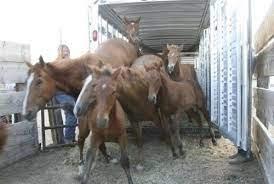
This is yet another example of a poorly conceived program with good intentions resulting in a waste of federal funds. Biologists have recommended applying hormonal reproductive control to suppress estrus by administering commercially available products to mares using dart guns.

|
Resumption of Traffic on the Mississippi Waterway
|
05/17/2021 |
|
The importance of navigability on the Mississippi River was highlighted this past week following temporarily closure due to a structural failure of the Hernando de Soto bridge at Memphis. The three-day halt of movement imposed by the U.S. coast guard resulted in a backup of more than a thousand barges by late Friday, May 14th. All traffic over the bridge on I-40 was stopped immediately following the detection of a crack in a major structural beam. Subsequent to an engineering review, it was determined that with the shutdown, the bridge was in no danger of falling into the Mississippi and accordingly barge traffic was resumed although at a slow rate and with appropriate precautions.
|

Fractured Beam on I-40 Bridge |
|
At Memphis, the Mississippi carries water from the Ohio and Missouri rivers and is critical to transfer corn and soybeans from the Midwest to poultry and swine installations in the southeast and for export. Rail would be the only viable alternative to barge traffic but would be slower and more expensive. Repair of the bridge will in all probability be a prolonged exercise and in view of the location of the damaged beam, will incur periodic disruption in barge transport both north and southbound.
 Even with restoration of river traffic, there will be adverse effects on the poultry industry. Transiting from Memphis Tennessee to West Memphis and Arkansas usually requires an eight-minute drive. The alternative deviation will add eighty-five minutes to the journey imposing costs to the trucking industry estimated at $3 million per day. Even with restoration of river traffic, there will be adverse effects on the poultry industry. Transiting from Memphis Tennessee to West Memphis and Arkansas usually requires an eight-minute drive. The alternative deviation will add eighty-five minutes to the journey imposing costs to the trucking industry estimated at $3 million per day.
Closure of the bridge with uncertainties concerning exports drove down commodity prices on Thursday and Friday but with restoration of barge traffic, prices will respond to normal supply and demand factors.
The de Soto bridge failure illustrates the dependency of the poultry industry on adequate, well-maintained infrastructure. Expenditure on the Interstate highway system and major waterways will be critical to the long-term profitability of the chicken industry.
|

|
Poland Facing Severe Avian Influenza and Salmonella Problems
|
05/06/2021 |
|
According to recent media and OIE reports, Poland has recorded more than 250 individual outbreaks of highly pathogenic avian influenza. Over six million birds have been or will have to be depleted as a control measure. Poland is responsible for the production of 1.3 billion broilers annually representing 20 percent of the E.U. supply of RTC. In previous years avian influenza in the E.U. ceases at the beginning of April but in many nations especially in Eastern Europe, outbreaks have persisted in both backyard and commercial operations.
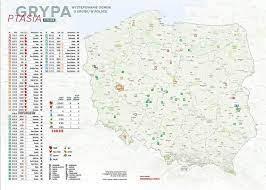 It would appear that authorities in Poland have not learned from experience in controlling epornitics as experienced in the U.S. in 2015 and subsequently in Western Europe. Dr. Bodgan Konopki, the Chief Veterinarian of Poland has blamed the severity of the outbreak “on the excessive concentration of poultry farms”. He is campaigning for regulations to require spacing among farms. This is an entirely fallacious approach since avian influenza is introduced by free- living birds and spread by deficiencies in biosecurity. Given inherent defects in conceptual biosecurity due to concentration of facilities, the poultry industry in Poland should intensify biosecurity procedures that have proven to be of benefit in areas with a high density of chicken and egg production. There are obvious deficiencies given the incidence rate and the extent and duration of the problem nationally. It would appear that authorities in Poland have not learned from experience in controlling epornitics as experienced in the U.S. in 2015 and subsequently in Western Europe. Dr. Bodgan Konopki, the Chief Veterinarian of Poland has blamed the severity of the outbreak “on the excessive concentration of poultry farms”. He is campaigning for regulations to require spacing among farms. This is an entirely fallacious approach since avian influenza is introduced by free- living birds and spread by deficiencies in biosecurity. Given inherent defects in conceptual biosecurity due to concentration of facilities, the poultry industry in Poland should intensify biosecurity procedures that have proven to be of benefit in areas with a high density of chicken and egg production. There are obvious deficiencies given the incidence rate and the extent and duration of the problem nationally.
Recommendations to improve biosecurity are self-evident. These include fencing of farms, biological separation of facilities, eliminating ponds adjacent to facilities that attract free-living birds, investment in structural biosecurity and adherence to operational biosecurity. The statement by Dr. Konopki that ultraviolet from sunlight will eliminate virus and hence outbreaks is wishful thinking and is contradicted by experience in the Middle East that does not lack for either sunlight or high temperature.
 In past years, Poland has expanded both egg and broiler production but with less than optimal attention to biosecurity as evidenced by persistent SE in both broiler and egg products. It is possible that the veterinary infrastructure is politicized and reflects the authoritarian policies of successive conservative governments. This is based on the response to the initial diagnosis of COVID in mink released by the University of Cracow. The presence of the infection on mink farms that was refuted by the Department of Agriculture but then was reversed in the face of incontrovertible proof of infection. Lack of control over national and regional programs to suppress Salmonella infection in poultry has seriously impacted the image of Poland as a reliable supplier of wholesome egg and poultry meat following numerous outbreaks of salmonellosis in the E.U. traced back to exporters. In past years, Poland has expanded both egg and broiler production but with less than optimal attention to biosecurity as evidenced by persistent SE in both broiler and egg products. It is possible that the veterinary infrastructure is politicized and reflects the authoritarian policies of successive conservative governments. This is based on the response to the initial diagnosis of COVID in mink released by the University of Cracow. The presence of the infection on mink farms that was refuted by the Department of Agriculture but then was reversed in the face of incontrovertible proof of infection. Lack of control over national and regional programs to suppress Salmonella infection in poultry has seriously impacted the image of Poland as a reliable supplier of wholesome egg and poultry meat following numerous outbreaks of salmonellosis in the E.U. traced back to exporters.
Veterinary authorities in Poland would be well advised to consult with their colleague in the U.S. and Western E.U. nations to implement effective poultry health programs including vaccination that will restore the image of their industry and to provide long-term security for producers.

|
False Allegation Concerning Meat Consumption Belatedly Withdrawn
|
05/04/2021 |
|
 Recently Fox News and other media within the Murdoch enterprise reported that it was the intent of the Biden Administration to mandate a reduction in meat consumption. A retraction was made by individual commentators on the Fox News channel after the reports were fact checked by competing media and following a sharp denial from the White House. The false report was subsequently amplified by both politicians and their supporters. Only a few television reporters on the channel concerned have actually retracted their false statements and some politicians are continuing to knowingly disseminate incorrect and baseless messages using social media. Recently Fox News and other media within the Murdoch enterprise reported that it was the intent of the Biden Administration to mandate a reduction in meat consumption. A retraction was made by individual commentators on the Fox News channel after the reports were fact checked by competing media and following a sharp denial from the White House. The false report was subsequently amplified by both politicians and their supporters. Only a few television reporters on the channel concerned have actually retracted their false statements and some politicians are continuing to knowingly disseminate incorrect and baseless messages using social media.
The origin of the misinformation was a cooperative study by academics at the University of Michigan and Tulane University, who investigated the potential environmental impact of restricting consumption of red meat. There is no question that climate change and sustainability have received considerable attention since the change in Administration. This is a time for review of established scientific data that represents the consensus of responsible investigators. A number of universities and government agencies are considering models that will indicate the outcome of various policy decisions.
Premature release of data and fabrication of reports do not help understanding. False and sensational releases may increase ratings but they inflame public opinion to the detriment of sound policy based on bipartisan consensus. Unfortunately politicians and the public they serve have adopted inflexible positions on climate change. Opinions range from “It’s just a big hoax” to “Unless we all go vegan, we fry”. There has to be a science-based compromise with a clear plan going forward to reduce greenhouse emissions and to use clean energy. To avoid disrupting the economy of the U.S. and the remainder of the world, any transition will have to be made gradually. The sooner we start the easier it will be for our grandchildren and their issue. Floating blatant lies and misrepresentations for short-term political gain is decidedly unhelpful and intensifies both political and global temperature.

|
Mechanization and Automation to Reduce COVID and Future Pandemics in Packing Plants
|
04/23/2021 |
|
Red meat and even poultry processing plants contribute to infection of COVID and other airborne viral infections due to close proximity of workers, high humidity, low temperature, and minimal ventilation rates. The design of U.S. plants and equipment installed was previously predicated on the availability of inexpensive labor. European producers do not have the luxury of an infinite supply of workers, even though temporary immigrant labor is used in some nations including Germany.
|
A recent article evaluating morbidity and mortality in U.S. meat packing plants and communities in which they are located demonstrated the low impact of poultry plants compared to beef and pork facilities. It was calculated that within 150 days after emergence of COVID-19 in a given county, a beef plant increased per capita infection rates in the community by 110 percent and in the case of pork plants by 160 percent. In contrast, the presence of a large poultry processing plant in a county only increased infection rates by 20 percent. The study documented that collectively 334,000 COVID-19 infections were attributable to meat packing plants with mortality and morbidity costs attaining $11.2 billion.
|
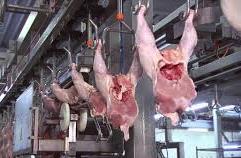
Advanced mechanized broiler-portioning installation |
|
The authors note that lost productivity in pork plants attained $336 million, beef, $186 million, and for poultry $40 million. The relatively lower impact associated with poultry processing relates to a higher level of mechanization compared to red meat packing plants. A worthwhile extension of the study would be to examine modern poultry plants with controlled atmosphere stun to kill, automated evisceration lines and mechanical portioning and deboning compared to older facilities requiring a high level of manual labor in all departments.
The positive effect of mechanization, even in hog plants is illustrated by the difference between the Horsens plant operated by Danish Crown that recorded a low rate of infection compared to the sister Ringsted plant where 142 out of approximately 600 employees tested positive for COVID-19 during the height of the outbreak in Denmark. The Ringsted plant was also associated with a high rate of community transmission during March and April 2020. The Horsens plant recorded less than 10 cases among 8,000 employees and the plant functioned without interruption through the entire first quarter of 2020.
|
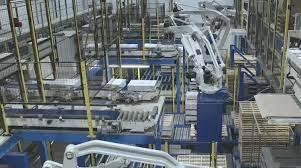
Robotics installed in Danish Crown Plant |
The Horsens plant is the most modern in the world using infrared laser-guided robots to make cuts including the critical tail cut. Machine-vision guided robots continue dismemberment completing the task that would otherwise be carried out manually by many workers in a plant processing 18,000 hogs each eight-hour shift.
|
|
To date, capital investment has been evaluated against the availability and cost of labor. With increased pressure for wages and benefits, unionization, a more active OSHA and greater concern for worker welfare and health, processors must reevaluate the cost of mechanization and automation. In August, CHICK-NEWS commented “It is axiomatic that robots are refractory to disease, do not take holidays or sick leave, never participate in strikes or agitate to join unions, and have immense physical strength and dexterity compared to human labor. It is unfortunate that it has taken COVID to force a reevaluation of the human component in relation to available alternatives in meat and poultry processing. COVID will not be the last viral pandemic and this reality and the obvious costs involved should result in a phase shift in processing similar to the changes brought about after publication of The Jungle by Upton Sinclair.”
Saitone, T., Schaefer, Aleks, and Scheitrum, D. COVID-19 Morbidity and Mortality in U.S. Meat Packing Counties. Food Policy doi.org/10.1016/j.foodpol.2021.102072.
|

|
Plant-Based Meat Sales Rising-For Now!
|
04/11/2021 |
|
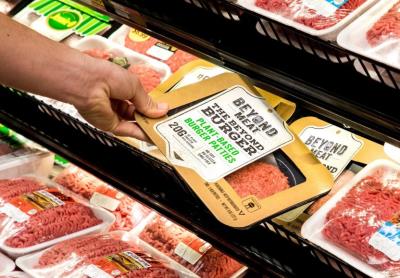 The Plant Based Foods Association (PBFA) recently published data relating to sales of alt-meat. Value increased by 45 percent from 2019 to $1.4 billion in 2020. The PBFA maintains that plant based meat represents 2.7 percent of retail packaged meat, but this figure ignores the consumption of food service. It is claimed that 22 million households purchase plant-based meat without an indication of the frequency of repeat buying. Although comparisons of growth rates for alt-meat appear exceptional when compared to conventional meat, the low base of a relatively immature product should be recognized. The Plant Based Foods Association (PBFA) recently published data relating to sales of alt-meat. Value increased by 45 percent from 2019 to $1.4 billion in 2020. The PBFA maintains that plant based meat represents 2.7 percent of retail packaged meat, but this figure ignores the consumption of food service. It is claimed that 22 million households purchase plant-based meat without an indication of the frequency of repeat buying. Although comparisons of growth rates for alt-meat appear exceptional when compared to conventional meat, the low base of a relatively immature product should be recognized.
The release from the PBFA notes the number of producing companies and their activities suggesting extreme competition. This is probably the justification for successive price cuts by Impossible Foods to levels which still exceed ground beef and in some stores by a factor of two. It is a matter of record that the bellwether alt-meat producers, including the Maple Leaf Foods and Beyond Meat are historically and currently non-profitable and the alt-meat industry is heavily subsidized by infusion of venture capital.
Despite the claims of equivalent organoleptic properties including taste, texture, and color compared to store-purchased ground beef patties and sausages, the real criterion is whether consumers can differentiate between alt-meat and real meat when cooked. Given quality issues, availability, and above all relative cost, future growth rates will be a more reliable indicator of the acceptance of alt-meat beyond the demographic of vegetarians, curious omnivores and those with extreme environmental and sustainability concerns.

|
Impossible Foods Launches National Advertising Campaign
|
04/08/2021 |
|
 Impossible Foods will launch an intensive TV campaign to encourage traditional consumers of meat to switch to the Company’s vegetable-based alternatives. The program will be entitled “We are Meat” and will feature the Impossible Burger in five spots. Impossible Foods will launch an intensive TV campaign to encourage traditional consumers of meat to switch to the Company’s vegetable-based alternatives. The program will be entitled “We are Meat” and will feature the Impossible Burger in five spots.
In commenting on the campaign Jessie Becker, Senior Vice President of Marketing stated, “Once people try Impossible Burger they are blown away by its taste although consumers are skeptical based on years of sub-par experiences with conventional, plant-based products.”
Click here for video
|
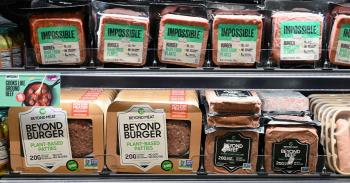
Competition among alt-Meat Brands |
The campaign is obviously an attempt to increase sales and follows successive price reductions, although Impossible Foods products still exceed the price of ground beef at retail. It is possible that Impossible Foods and other alt-meat producers are experiencing saturation of the vegetarian demographic and have yet to generate repeat sales among conventional meat eaters who represent the bulk of the U.S. consumers.
Impossible Burger has increased its penetration of the retail distribution channel with most major supermarkets stocking their burgers and sausages. A review of display counters in supermarkets confirms extreme competition with both local and national brands presented.
|
|
Dr. Patrick O. Brown, founder of Impossible Foods claims that substitution of real meat can be achieved without compromising taste, nutrition or convenience. This commentator will accept some benefits relating to sustainability and the environment but consumers can appreciate the difference between real meat and vegetable-based alternatives. The wide range of available beef, pork and poultry presentations provide variety and a wide choice for home-cooked meals. Alt- meat presently only competes with ground beef.
Dr. Brown, Impossible Foods products are not “meat” despite the intent of the TV spots and the creativity of Weiden + Kennedy. The advertising campaign claiming equivalence with real meat will only stimulate additional restrictive legislation on labeling, onerous litigation and will generate unflattering comparisons with the “real thing”.
|

|
Corporations in Brazil Concerned over Government Policy for the Amazon
|
03/29/2021 |
|
Given that 60 percent of the remaining Amazon is within Brazil, policies regarding deforestation and use of land bordering the Rainforest are now of international concern. Forty chief executives of major corporations in Brazil, including JBS S.A., recently addressed a letter to President Jair Bolsonaro regarding the potential for trade embargoes as a result of current exploitation of the Amazon.
Despite the cooperation between CEOs and leading academics in Brazil under the umbrella of the Concertacao pela Amazonia (Agreement on the Amazon), no constructive response has been received from Brazilia, the Nation’s capital. Talks at a level below the Office of the President are in progress between Ambassador John Kerry, former U.S. Secretary of State and now Climate Envoy and Ernesto Araujo, Foreign Minister, and Ricardo Salles, the Environment Minister.
|

Pres. Jair Bolsonaro |
|
 When the Paris Accords were signed in 2016, Brazil was an active participant and received donations from E.U. countries to sustain the Amazon. Since the ascendency of President Bolsonaro, deforestation has advanced at a rapid rate as evidenced by mass clearing of fringe areas accompanied by devastating fires and a profound reduction in enforcement of existing regulations. When the Paris Accords were signed in 2016, Brazil was an active participant and received donations from E.U. countries to sustain the Amazon. Since the ascendency of President Bolsonaro, deforestation has advanced at a rapid rate as evidenced by mass clearing of fringe areas accompanied by devastating fires and a profound reduction in enforcement of existing regulations.
The concern that the U.K. and the E.U. will pressure companies importing food and other items from Brazil to conform to world standards is evidenced in the recent comments by Fabio Tomasoni, Global CEO of JBS S.A. in the FY 2020 Annual Report, regarding sustainability and sourcing of beef.
The status of the Amazon will most certainly take center stage at the Earth Day Summit of world leaders in April serving as a prelude to the United Nations Summit in November. Given the economic situation in Brazil, the President will have to choose between world opinion relating to climate change and his personal popularity as a right-leaning nationalistic leader of Brazil.
|

|
Contentious Bilateral China-U.S. Talks in Alaska
|
03/21/2021 |
|
 The U.S. State Department will be taking a strong line with China over structural and political issues based on the first day of bilateral talks in Alaska. Secretary of State Antony Blinken noted that the U.S. and China could achieve many things together where their interests converge. The U.S. would however continue to express concerns and act over actions by China including repression of Uyghurs in Xingjian Province, suppressing democracy in Hong Kong, cyber attacks on the U.S., economic coercion and threats to the independence of Taiwan. The U.S. State Department will be taking a strong line with China over structural and political issues based on the first day of bilateral talks in Alaska. Secretary of State Antony Blinken noted that the U.S. and China could achieve many things together where their interests converge. The U.S. would however continue to express concerns and act over actions by China including repression of Uyghurs in Xingjian Province, suppressing democracy in Hong Kong, cyber attacks on the U.S., economic coercion and threats to the independence of Taiwan.
|
|

Antony Blinken Secretary of State
|
Blinken was supported by Jake Sullivan, the U.S. National Security Advisor, who criticized both military and economic coercion by China. He noted that U.S. echoed the concerns of Asian nations including Japan and South Korea. Sullivan noted, “We do not seek conflict but we will welcome stiff competition but we will always stand up for our principles, for our people and for our friends.” Based on a policy of creating harmony among allies, the present Administration intends to create a consensus and to unify opposition to what must be regarded as aggressive and coercive actions by China.
At the end of the day trade relations between China and the U.S. will be based on the principle of mutual satisfaction. Since China needs corn, soy and other commodities and will import them from the U.S. and our competitors, we should continue to supply but should use whatever leverage we have to eliminate the undesirable aspects of our relationship with China. These include unfair trade practices, cyber espionage, neglect of intellectual property and support of government-owned companies that dump products on international markets in defiance of WTO rules.
|
|
 Confining military expansion and suppression of democracy are issues beyond the concern of U.S. agribusiness but obviously are factors influencing commodity trade. Let us hope that Antony Blinken and Katharine Tai, the U.S. Trade representative have more success in dealing with the Communist government of China than previous administrations. Confining military expansion and suppression of democracy are issues beyond the concern of U.S. agribusiness but obviously are factors influencing commodity trade. Let us hope that Antony Blinken and Katharine Tai, the U.S. Trade representative have more success in dealing with the Communist government of China than previous administrations.
|

|
American Chemical Society Webinar on Alt-Meat
|
03/14/2021 |
|
 A webinar organized by the American Chemical Society on March 11th was disappointing in both content and perspective. Compared by Chris Gregson of Greenstalk Foods, none of the participants was actively involved in production or marketing of either a vegetable-based meat substitute or a cell-cultured product. Many of the comments by the participants were basically a restatment of the obvious. We are all aware that motivation by consumers to purchase alternatives to real meat include misperceptions over health, environmental considerations, welfare concerns, and a new angle, freedom from antibiotic resistant pathogens. A webinar organized by the American Chemical Society on March 11th was disappointing in both content and perspective. Compared by Chris Gregson of Greenstalk Foods, none of the participants was actively involved in production or marketing of either a vegetable-based meat substitute or a cell-cultured product. Many of the comments by the participants were basically a restatment of the obvious. We are all aware that motivation by consumers to purchase alternatives to real meat include misperceptions over health, environmental considerations, welfare concerns, and a new angle, freedom from antibiotic resistant pathogens.
Julie Mann of Puris Holdings, herself a vegan, considers that ultimately alt-meat will eliminate the need for livestock, a claim made 15 years ago by Josh Tetrick when he launched the first of his alt-egg ventures with HSUS support. Andrew Ive of Big Idea Ventures claims to have funded 43 companies and his focus concerns the economics of alt-meat. The issue that he studiously avoided is that publicly quoted companies involved in vegetable-based meat substitutes are reporting losses. Beyond Meat and the Vegetable Protein segment of Maple Leaf Foods have yet to come close to breaking even despite immense investment and increasing production levels. 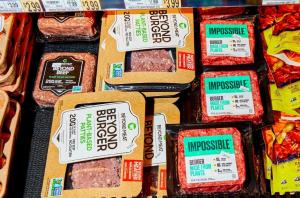
Andrew Ive did however note that vegetable based products gained consumer acceptance when moved from vegan sections in supermarkets to meat coolers. Ive notes that producers of vegetable-based products are improving product presentation and innovation is apparent as major processing companies use equipment and additives respectively devised by Buhler of Switzerland and Givaudan of France. Ive believes that progress will be made by combining the aspirations of entrepreneurs with technology.
Joshua March of Artmys Foods stressed quality issues in relation to vegetable-based alternatives. To date alt-meat products do not reproduce the organoleptic qualities of real meat with respect to taste, texture and appearance, both raw and cooked. March also questions the nutritional content of vegetable-based meats. While conceding the absence of cholesterol and possibly contaminants, alt-meat is more “processed” than conventional meat.
The status of cell cultured meat was glossed over although there has been considerable progress by companies in Israel including Aleph Farms, Future Meat Technologies, Biofood Systems, and Super Meat. Again, the ACS panel while acknowledging technical progress failed to address the large differential in cost of production between cell cultured and conventional meat.
Recently, Singapore has emerged as a champion of alternatives to meat. This is partly due to the fact that the Government of the city-nation recognized that 90 percent of their food is imported and they recognize their vulnerability especially with regard to protein. Accordingly, regulations to allow the manufacture and sale of cell-cultured meat were hastily enacted. Josh Tetrick appears to have taken advantage of a favorable regulatory climate and claims to be serving a cell- derived chicken substitute in a restaurant in Singapore. From comments by Andrew Ive, it is apparent that the product is in fact a vegetable-based meat alternative with inclusion of some cell-cultured material without specifying the relative volumes of vegetable and cell-derived components. Contrary to the transparency demonstrated by Memphis Meats in the U.S. and developers in both Israel and the E.U., Tetrick has never revealed details of his production process nor has he identified or provided images of his production facilities.
The ACS Webinar was less than informative, possibly due to the selection of participants who appear to have either aspirational or investment approaches to alt-meat. Presenters with actual real-world experience in production and marketing would have contributed to a more enlightening program.

|
Broiler Production in Brazil-Lessons for the U.S?
|
03/07/2021 |
|
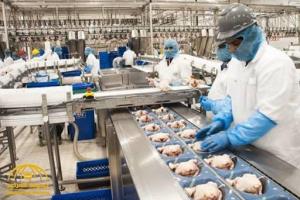 USDA-FAS GAIN report on Brazil, BR2021-0069, dated February 26th projected 2021 broiler production in Brazil. For the market year beginning January, USDA projects total production at 14.150 million metric tons, 1.9 percent higher than in 2020. Projected exports will be 3.905 million metric tons up 4.3 percent from 2020 and representing 27.5 percent of production. USDA-FAS GAIN report on Brazil, BR2021-0069, dated February 26th projected 2021 broiler production in Brazil. For the market year beginning January, USDA projects total production at 14.150 million metric tons, 1.9 percent higher than in 2020. Projected exports will be 3.905 million metric tons up 4.3 percent from 2020 and representing 27.5 percent of production.
During 2020, Brazil exported 3.741 million metric tons valued at $5.2 billion with a unit price of $1,390 per metric ton. By comparison, the U.S. exported 3.577 million metric tons valued at $3.56 billion with an average unit value of $995 per metric ton. The U.S. figure includes both bone-in chicken and feet since the USDA elected to combine the two products from April 2020 onwards. Figures for volume and value from Brazil exclude feet and represent 26 percent of all world chicken exports.
Domestic consumption in Brazil will attain 10.25 million metric tons up 1.1 percent from 2020 and corresponding to a per capita consumption of 106 pounds, based on a consuming population of 213 million. The increase in domestic consumption occurred despite a 15 percent increase in retail price of chicken during 2020. Chicken increased at a disproportionately lower rate compared to beef, the major source of animal protein.
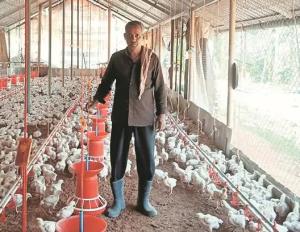 Forecasts for 2021, take into account, the increased costs of ingredients. In January 2021, corn averaged $230 per ton and soybean meal was $370 per ton. Increases in production cost for chicken through 2020 were reflected as a progressive escalation through the year with a December value of 34 cents per lb. compared to 24 cents per lb. in December 2019. The average retail price for frozen chicken in 2020 was 41 cents per lb. Forecasts for 2021, take into account, the increased costs of ingredients. In January 2021, corn averaged $230 per ton and soybean meal was $370 per ton. Increases in production cost for chicken through 2020 were reflected as a progressive escalation through the year with a December value of 34 cents per lb. compared to 24 cents per lb. in December 2019. The average retail price for frozen chicken in 2020 was 41 cents per lb.
Brazilian chicken comprised 22 percent of import volume by China during 2020 amounting to 3.99 million metric tons valued at $5.73 at a unit price of $1,436. The large demand by China for pork and chicken was occasioned by the ongoing losses due to African swine fever commencing in late 2018 and extending through 2019 and 2020 as herds were being restored. Demand by China, Saudi Arabia and Japan has led to expansion in production dedicated to the export market. Currently Brazil has 46 plants authorized to export chicken meat to China and the Middle East, concentrated in the five major producing states. A specific market for Brazil is the supply of halal chicken with Indonesia now regarded as a potential large-scale importer. Exports during 2020 were supported by continuing outbreaks of H5N8 avian influenza in the EU, Eurasia and Southeast Asia.
In comparing exports both with respect to volume and unit price, it is evident that Brazil can offer importers specific products suitable to their demand. This includes carcasses consigned in narrow weight ranges from 1.0 kg at 0.1 kg increments to 1.5 kg.
In addition to WOGs, bulk parts and added-value products Brazil offers halal, non-GMO, antibiotic-free and other categories. In contrast, the degree in product differentiation from the U.S. extends simply from right to left leg quarters. The U.S. is essentially selling a commodity on price with 95 percent shipped as frozen bulk quarters in addition to feet, which despite a far lower nutritional value, enigmatically command a higher price than dark bone-in meat. If the U.S has aspirations of increasing the proportion of exports of RTC from 16 percent of output and attaining unit prices and levels approaching Brazil, Thailand and individual producers in the Ukraine, an importer-oriented approach to specific needs will be necessary. This implies dedicated complexes with nutritional programs, harvest weights, processing and presentation consistent with the frequently narrow specifications of importing nations.

|
Push to Vaccinate Meat Packing Plant Workers
|
03/05/2021 |
|
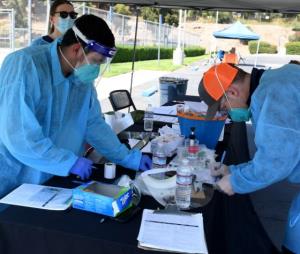 Following the lead of Foster Farms and Perdue Farms, having initiated COVID vaccination of workers in their plants, JBS USA and Pilgrim’s Pride will vaccinate employees in nine major locations in eight states where vaccine will be made available. In some plants, large-scale vaccination clinics will administer vaccine, but in other locations limitations on availability of vaccines and State policy on priority will result in inevitable mosaics of immunity in a given facility which is undesirable. Following the lead of Foster Farms and Perdue Farms, having initiated COVID vaccination of workers in their plants, JBS USA and Pilgrim’s Pride will vaccinate employees in nine major locations in eight states where vaccine will be made available. In some plants, large-scale vaccination clinics will administer vaccine, but in other locations limitations on availability of vaccines and State policy on priority will result in inevitable mosaics of immunity in a given facility which is undesirable.
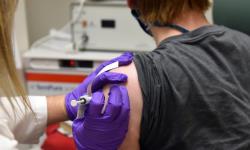 Tyson Foods intends extending vaccination to as many 15,000 employees in Iowa during the first week of March. Cargill is also administering vaccines to workers. Smithfield Foods is awaiting vaccine for the Sioux Falls, SD. plant where more than a third of the 3,700 employees tested positive for the virus by mid-June 2020. Vaccination in large plants may only be completed by late April. Tyson Foods intends extending vaccination to as many 15,000 employees in Iowa during the first week of March. Cargill is also administering vaccines to workers. Smithfield Foods is awaiting vaccine for the Sioux Falls, SD. plant where more than a third of the 3,700 employees tested positive for the virus by mid-June 2020. Vaccination in large plants may only be completed by late April.
It is considered imperative that workers in meat packing plants and poultry processing facilities should be vaccinated given their proximity on processing lines and in cafeterias and change areas. Associations representing the livestock industry have actively promoted vaccination for plant workers given their vulnerability and their impact on communities in which large plants are located.

|
U.K. Food Standards Agency Warns Over Raw Breaded Chicken Products
|
02/21/2021 |
|
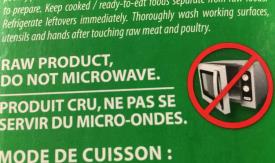 In the face of two consecutive outbreaks of salmonellosis, the Food Standards Agency of the U.K. along with Public Health England in collaboration with health authorities in Scotland and Wales have warned consumers of the dangers of undercooked raw breaded chicken products including nuggets. In the face of two consecutive outbreaks of salmonellosis, the Food Standards Agency of the U.K. along with Public Health England in collaboration with health authorities in Scotland and Wales have warned consumers of the dangers of undercooked raw breaded chicken products including nuggets.
Consumers are apparently not following cooking instructions and in many cases are warming raw breaded products in a 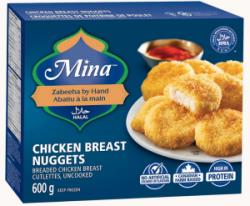 microwave allowing survival of Salmonella and other pathogens. microwave allowing survival of Salmonella and other pathogens.
In 2019, extensive outbreaks of salmonellosis were attributed to consuming inadequately cooked breaded chicken products in Canada. Given the risks involved it is questioned whether any producer should market raw breaded chicken products irrespective of label instructions and cautions.
|
Adequate Ventilation Critical to Suppressing COVID Infection
|
02/19/2021 |
|
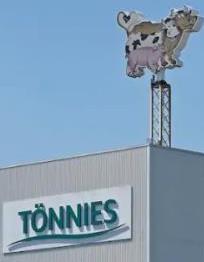 COVID is transmitted readily by inhalation of contaminated aerosol droplets. Studies have shown that stagnant air facilitates infection especially in high-risk locations such as meat packing plants, school rooms, entertainment venues and prisons. Studies at the Tönnies plant in Germany demonstrated that deficiencies in air movement contributed to a high rate of infection that was resolved only following modification of the air handling and filtration installations. COVID is transmitted readily by inhalation of contaminated aerosol droplets. Studies have shown that stagnant air facilitates infection especially in high-risk locations such as meat packing plants, school rooms, entertainment venues and prisons. Studies at the Tönnies plant in Germany demonstrated that deficiencies in air movement contributed to a high rate of infection that was resolved only following modification of the air handling and filtration installations.
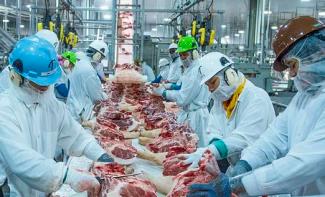 The Centers for Disease Control and Prevention has issued guidelines for reopening schools that apparently have not specified enhanced ventilation to complement masking and distancing. Infectious disease specialists have urged the Administration to include enhanced ventilation rates in advisories following the lead of the World Health Organization. The Centers for Disease Control and Prevention has issued guidelines for reopening schools that apparently have not specified enhanced ventilation to complement masking and distancing. Infectious disease specialists have urged the Administration to include enhanced ventilation rates in advisories following the lead of the World Health Organization.
Dry hydrogen peroxide generators can be installed in confined spaces to continuously decontaminate air, destroying both viral and bacterial pathogens. For information on these installations click onto the Synexis logo on the right side of the welcome page.

|
Progress in Suppressing COVID-19
|
02/16/2021 |
|
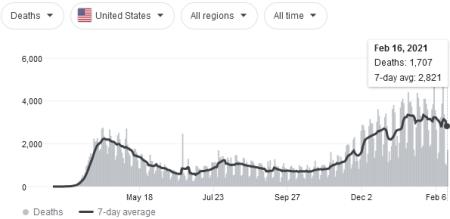 It is evident that there is an improvement in both the incidence and hospitalization rates for COVID-19. This follows the January surge reflecting injudicious travel, gatherings and a neglect of precautions over the late December holiday period. Statistics as of Monday 15th February include:- It is evident that there is an improvement in both the incidence and hospitalization rates for COVID-19. This follows the January surge reflecting injudicious travel, gatherings and a neglect of precautions over the late December holiday period. Statistics as of Monday 15th February include:-
- Incident cases have been declined to 65,000 per day as of Saturday 13th representing a 39 percent decline on the basis of a seven-day rolling average.
- The positive rate on COVID testing has dropped to 6 percent from approximately 13 percent in mid-January.
- Daily deaths still are in the region of 3,000 per day but mortality is a lagging indicator.
- Hospitalizations have declined to 67,000 with 14,000 under ICU care.
- 70 million doses of COVID vaccine have been delivered to states.
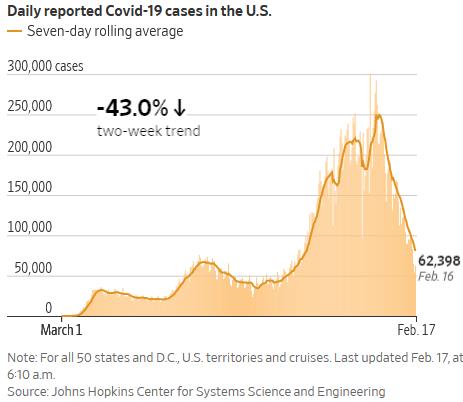
- 52 million vaccines have been administered with a daily rate increasing to 2.2 million for Saturday and Sunday 13th, 14th, February. Considerable disruption has been caused by extreme weather over a broad area of the U.S.
- To date in the U.S. there have been 27.6 million confirmed cases with 485,000 fatalities recorded.
- The CDC recommends reopening of schools with appropriate precautionary measures.
- On a cautionary note, public health authorities have warned of the increase in variant isolates including the U.K. B.1.1.1.7 identified in 40 states in addition to domestic variants arising by mutation.

|
U.S. Trade Representative 2020 Report to Congress on China
|
01/27/2021 |
|
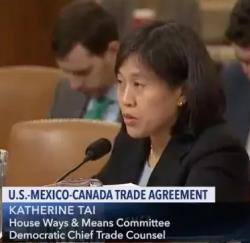 The 2020 report to Congress on China trade policy was compiled and submitted by the Office of the U.S. Trade Representative (USTR). Following accession of China to the World Trade Organization, there was an expectation that the Nation would adhere to international rules. China failed to comply with an anticipated change in policy to pursue a market-oriented approach to trade. In contrast, China intensified state-owned manufacture, followed coercive policies on investment, engaged in corporate espionage, ignored intellectual property rights, pursued central control of the economy and engaged in currency manipulation. Unfair competition was evident in predatory pricing of steel, aluminum and solar panels collectively distorting trade to the detriment of the economies of trading nations. The 2020 report to Congress on China trade policy was compiled and submitted by the Office of the U.S. Trade Representative (USTR). Following accession of China to the World Trade Organization, there was an expectation that the Nation would adhere to international rules. China failed to comply with an anticipated change in policy to pursue a market-oriented approach to trade. In contrast, China intensified state-owned manufacture, followed coercive policies on investment, engaged in corporate espionage, ignored intellectual property rights, pursued central control of the economy and engaged in currency manipulation. Unfair competition was evident in predatory pricing of steel, aluminum and solar panels collectively distorting trade to the detriment of the economies of trading nations.
The U.S. alone or in combination with other members of the WTO resorted to available measures including tariffs, bilateral negotiations and litigation in an attempt to restrain nonconforming practices exercised by China.
 Following the Phase One trade agreement concluded in mid-January 2020, the USTR considers that there is evidence that China is moving forward “in good faith with the implementation of its commitments.” Issues that have yet to be resolved include state subsidies, maintaining excess capacity in state-owned enterprises, illegal cyber-acquisition of intellectual property and lack of regulatory transparency. The USTR believes that negotiation should continue for a Phase -Two agreement. Concurrently restructuring of the WTO is underway and should result in more rapid resolution of conflicts possibly restraining China. Following the Phase One trade agreement concluded in mid-January 2020, the USTR considers that there is evidence that China is moving forward “in good faith with the implementation of its commitments.” Issues that have yet to be resolved include state subsidies, maintaining excess capacity in state-owned enterprises, illegal cyber-acquisition of intellectual property and lack of regulatory transparency. The USTR believes that negotiation should continue for a Phase -Two agreement. Concurrently restructuring of the WTO is underway and should result in more rapid resolution of conflicts possibly restraining China.
It remains to be seen whether the Biden Administration with Amb. Katherine Tai as the USTR will be able to make progress in curbing the excesses of China. This will require the support of major industrialized nations since cooperation was not considered a priority during the tenure of her predecessor, Robert Lighthizer. He followed a more isolationist approach to world trade, relying on tariffs and where indicated or not, bluster from Presidential Advisor and Sinophobe, Dr. Peter Navarro.

|
Vaccine Stockpiling, A Prudent Precaution
|
01/18/2021 |
|
Following the 2019 re-emergence of Ebolavirus infection in central Africa, a vaccine was developed that proved effective in controlling an outbreak in the Democratic Republic of the Congo requiring immunization of 300,000 people.
International health organizations headed by vaccine provider GAVI with the support of WHO and UNICEF have now stockpiled 500,000 doses of the Ervebo vaccine manufactured by MSD in Kenya. Studies showed that the vaccine was 97 percent effective against Ebola an infection that has a fatality rate in excess of 50 percent.
|
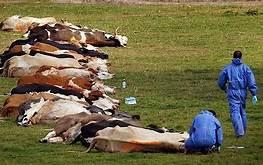
Eradication of foot and mouth disease U.K.
|
|
The Ministry of Health in Kenya that will be responsible for maintaining the inventory of Ebola vaccine has developed a rapid response team encompassing laboratory diagnostic specialists and members with experience in logistics and delivery of vaccines. The Ministry has a total 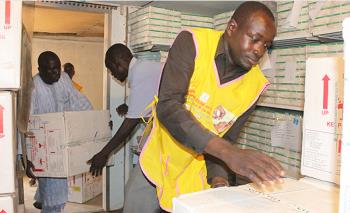 workforce of 229 staff deployed at various points of entry into Kenya and has designated 21 Ebola specialists to be activated in the event of an outbreak that is almost inevitable. workforce of 229 staff deployed at various points of entry into Kenya and has designated 21 Ebola specialists to be activated in the event of an outbreak that is almost inevitable.
The decision to maintain an inventory of vaccines and to train responders is justified by the high mortality and social disruption caused by the disease. Selected first responders in the U.S. have received the vaccine and have developed contingency plans following the 11 cases in the U.S. in 2014 comprising seven medically evacuated personnel and four contact cases.
The principle of stockpiling vaccines against both human and livestock diseases should be a major consideration with the respect to exotic infections many of which have catastrophic consequences following introduction into naive populations. Unfortunately, stockpiles cost money to acquire and to maintain and inevitably must be replenished as a result of aging.
The slow pace of administration of available COVID vaccine demonstrates the need for planning, distribution and administration to populations, herds and flocks. Fortunately, in the case of livestock, they are generally concentrated on farms and in limited geographic areas facilitating administration. Fortunately, animals and birds do not have access to the internet and do not have prejudices regarding political, religious and social concerns and are easy and available recipients. Avian Influenza H5 and H7, Foot and Mouth disease and when available African swine fever are obvious candidates with funds allocated for Foot and Mouth disease.
|

|
Walmart to Expand their Growing Healthcare Presence in the U.S.
|
01/10/2021 |
|
 Walmart is emerging as a leader in providing routine healthcare to the U.S. population. Primary care clinics within supermarkets are well established. These compete with similar kiosk operations operated by CVS Health and Walgreens among others. The initial phase of COVID-19 vaccination has probably accelerated the move to commercialized and depersonalized medicine. Walmart is emerging as a leader in providing routine healthcare to the U.S. population. Primary care clinics within supermarkets are well established. These compete with similar kiosk operations operated by CVS Health and Walgreens among others. The initial phase of COVID-19 vaccination has probably accelerated the move to commercialized and depersonalized medicine.
It remains to be seen whether a retail company can capitalize on low-hanging fruit, leaving the established medical infrastructure to carry the burden of treating serious acute and chronic conditions and providing a standard of service consistent with scientific progress. Diverting patients and revenue from hospitals and group practices will weaken the core of our systems providing medical services.
The move to “supermarket medicine” will reduce opportunities to train our future physicians and specialists. Weakening the hospital system will provide fewer opportunities for clinical research and progress in treatment will be constrained. Our current system is less than perfect but it is better than socialized medicine as offered by other nations. We should honestly recognize the deficiencies that exist and make changes to eliminate discrepancies in service and opportunities between rich and poor.
 As with many aspects of our life Medicine is too important to be politicized. Let us hope that we find solutions to our problems and as with most challenges, face them with a sense of purpose to resolve deficiencies. As with many aspects of our life Medicine is too important to be politicized. Let us hope that we find solutions to our problems and as with most challenges, face them with a sense of purpose to resolve deficiencies.
There are far too many uninsured in our nation and we are failing to provide preventive health counseling, vaccinations and activities that contribute to a healthy nation. For-profit clinics are not the answer although they may contribute to overcrowding of ER rooms during the ongoing COVID-19 pandemic and may have a role in developing a new model to accommodate the underserved.

|
Legislators Consider a Bill to Ban Wildlife Wet Markets
|
01/08/2021 |
|
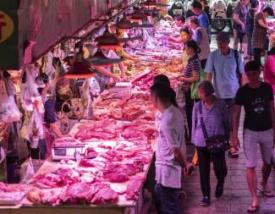 U.S. Representatives Mike Quigley (D-IL) and Fred Upton (R-MI) and Senators Cory Booker (D-NJ) and John Cornyn (R-TX) have introduced bills respectively in the House and Senate intended to close commercial wildlife markets and end trade in live wildlife for human consumption. The Preventing Future Pandemics Act is based on the certainty that continued trade and consumption of wildlife will inevitably result in the emergence of a pathogenic virus with pandemic potential. U.S. Representatives Mike Quigley (D-IL) and Fred Upton (R-MI) and Senators Cory Booker (D-NJ) and John Cornyn (R-TX) have introduced bills respectively in the House and Senate intended to close commercial wildlife markets and end trade in live wildlife for human consumption. The Preventing Future Pandemics Act is based on the certainty that continued trade and consumption of wildlife will inevitably result in the emergence of a pathogenic virus with pandemic potential.
 Rep. Quigley stated “The Preventing Future Pandemics Act takes aim at wildlife markets and the trade that supplies them, positioning America as the global leader in replacing wild protein sources with safe alternatives and fighting to ensure that nothing like the COVID-19 pandemic happens again.” Rep. Quigley stated “The Preventing Future Pandemics Act takes aim at wildlife markets and the trade that supplies them, positioning America as the global leader in replacing wild protein sources with safe alternatives and fighting to ensure that nothing like the COVID-19 pandemic happens again.”
The Preventing Future Pandemics Act would end the import, export and sale of live wildlife for human consumption in the United States and be part of U.S. foreign policy directing the U.S. State Department to collaborate with international partners to close commercial wildlife markets and end trade in food products derived from wildlife.
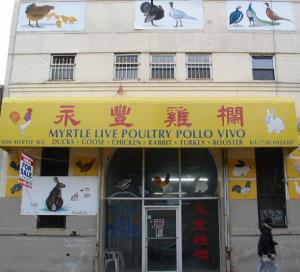 It is known that certain strains of avian influenza can infect humans. Accordingly, it is not just wildlife with the potential for emergence of zoonotic diseases. The possibility exists in many major cities in the U.S. where ethnic minorities support live animal and bird markets. There is virtually no consumption of wildlife purchased in commercial markets in the U.S. other than domestic venison. We do not consume the variety of species including reptiles, birds, and mammals as in China and other Asian nations. Neither do we consume “bush meat” as in Africa. We do however live with a potential hazard in the form of urban wet markets, which are an anachronism in the U.S. during the 21st Century. These establishments, however strictly monitored at state expense, represent a hazard with respect to foodborne disease and a potential future problem in relation to adaptation of pathogens from domestic livestock and poultry to humans as asusceptible host. It is known that certain strains of avian influenza can infect humans. Accordingly, it is not just wildlife with the potential for emergence of zoonotic diseases. The possibility exists in many major cities in the U.S. where ethnic minorities support live animal and bird markets. There is virtually no consumption of wildlife purchased in commercial markets in the U.S. other than domestic venison. We do not consume the variety of species including reptiles, birds, and mammals as in China and other Asian nations. Neither do we consume “bush meat” as in Africa. We do however live with a potential hazard in the form of urban wet markets, which are an anachronism in the U.S. during the 21st Century. These establishments, however strictly monitored at state expense, represent a hazard with respect to foodborne disease and a potential future problem in relation to adaptation of pathogens from domestic livestock and poultry to humans as asusceptible host.

|
USDA to Finalize Line-Speed Rule Despite Unsubstantiated Opposition
|
01/06/2021 |
|
 After many years of implementation, surveillance and evaluation in 54 plants, the USDA intends to finalize the rule that would allow line speeds in suitably equipped and managed plants to increase from 140 to 175 birds per minute. Studies have shown that increased line speed has not resulted in any deterioration in food safety or quality. In a January 4th article in the Washington Post, opposed the more extensive application of increased line speed based on a number of canards and misrepresentations. After many years of implementation, surveillance and evaluation in 54 plants, the USDA intends to finalize the rule that would allow line speeds in suitably equipped and managed plants to increase from 140 to 175 birds per minute. Studies have shown that increased line speed has not resulted in any deterioration in food safety or quality. In a January 4th article in the Washington Post, opposed the more extensive application of increased line speed based on a number of canards and misrepresentations.
The latest justification to oppose the 175 birds per minute rate is the prevalence of COVID-19 in "meat plants". The Washington Post article cited a Food, Environmental Reporting Network (FERN) report as the basis for their concern. The FERN report documented results from 1,262 plants of which 565 were classified as "meat packing" recording 51,688 cases of COVID-19 with 263 fatalities.
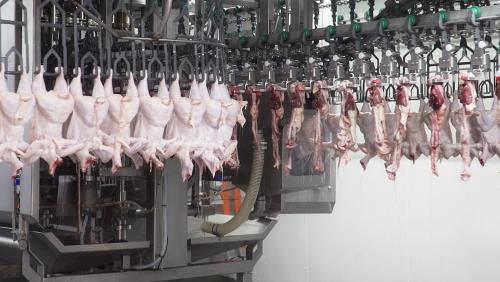 A review of the source document notes that there was no distinction between poultry-processing plants and meat-packing plants affected by COVID. In an attempt to differentiate between the red meat and poultry facilities, data on two major integrators, totally committed to chicken processing were extracted from the globular data in the FERN report. The first company in the top-five identified six cases in their Texas chicken plant and 94 in their North Carolina chicken plant. A second top-five company recorded 98 cases in a North Carolina plant, 256 in Minnesota and 283 in Arkansas. A review of the source document notes that there was no distinction between poultry-processing plants and meat-packing plants affected by COVID. In an attempt to differentiate between the red meat and poultry facilities, data on two major integrators, totally committed to chicken processing were extracted from the globular data in the FERN report. The first company in the top-five identified six cases in their Texas chicken plant and 94 in their North Carolina chicken plant. A second top-five company recorded 98 cases in a North Carolina plant, 256 in Minnesota and 283 in Arkansas.
Raw data is misleading since comparisons can only be based on rates. Without knowing the total compliment of workers, supervisors, and managers in each plant, it is impossible to differentiate among companies, type of plant, location or size of operation.
 Tom Super, VP of Communications for the National Chicken Council noted that the line speed rule has been under consideration for three decades and over four administrations and has been the subject of considerable scientific study and litigation. Increasing line speed is consistent with higher levels of automation and mechanization as developed in the EU and applied on four continents. Increased mechanization reduces the need for workers and increased line speed justifies a capital investment in improved technology. Innovations including increased line speed in conjunction with HIMP will be necessary for the U.S. chicken industry to be competitive in world markets and to continue delivering wholesome chicken to domestic consumers. Conflating chicken plants with red meat plants without clear differentiation is essentially sophistry. To misapply data to oppose a progressive development is disingenuous. Tom Super, VP of Communications for the National Chicken Council noted that the line speed rule has been under consideration for three decades and over four administrations and has been the subject of considerable scientific study and litigation. Increasing line speed is consistent with higher levels of automation and mechanization as developed in the EU and applied on four continents. Increased mechanization reduces the need for workers and increased line speed justifies a capital investment in improved technology. Innovations including increased line speed in conjunction with HIMP will be necessary for the U.S. chicken industry to be competitive in world markets and to continue delivering wholesome chicken to domestic consumers. Conflating chicken plants with red meat plants without clear differentiation is essentially sophistry. To misapply data to oppose a progressive development is disingenuous.

|
China Bans Imports of Irish Poultry Products
|
12/31/2020 |
|
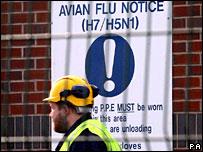 Following an outbreak of H5N8 strain avian influenza in a small free-range flock in County Wicklow on December 12th, China has banned all imports from Ireland. The localized case was preceded on November 8th by isolation of H5N8 virus from a dead peregrine falcon in County Limerick. Following an outbreak of H5N8 strain avian influenza in a small free-range flock in County Wicklow on December 12th, China has banned all imports from Ireland. The localized case was preceded on November 8th by isolation of H5N8 virus from a dead peregrine falcon in County Limerick.
Ireland along with ten other E.U. nations has experienced outbreaks of H5N8 predominately in free-range flocks of chickens, turkeys and waterfowl. Cases diagnosed from October onwards are attributed to shedding of virus by migratory waterfowl.
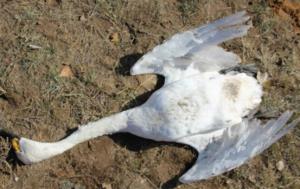 China has no justification to ban imports from the entire nation of Ireland given that the World Organization for Animal Health (OIE) allows for regionalization. The second factor disqualifying the action by China is that H5N8 was diagnosed in a large number of wild swans in Shanxi Province in mid-December. It is an established reality that H5 and H7 avian influenza viruses are endemic in China, further invalidating their action. China has no justification to ban imports from the entire nation of Ireland given that the World Organization for Animal Health (OIE) allows for regionalization. The second factor disqualifying the action by China is that H5N8 was diagnosed in a large number of wild swans in Shanxi Province in mid-December. It is an established reality that H5 and H7 avian influenza viruses are endemic in China, further invalidating their action.
The lesson from this ban is that China will impose restrictions based on real or perceived risks in contravention of accepted trade norms. China will only comply with rules if it is to their benefit. This consideration should be borne in mind as China becomes a more important trade partner. For the first eleven months of 2020, the U.S. exported 343,000 metric tons of poultry products including paws, bone-in chicken parts, wings and by-products valued at $613 million.

|
2019 FDA Antimicrobial Use Report in Food-Producing Animals
|
12/22/2020 |
|
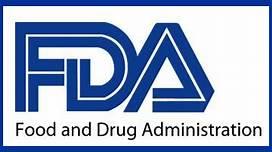 On December 15th the U.S. Food and Drug Administration (FDA) published a summary report on antibiotic use in livestock entitled Antimicrobials Sold or Distributed in 2019 for Use in Food-Producing Animals. This document follows the previous annual review of antimicrobial use and covers 2019. The comprehensive report includes sponsor estimates of product sales but the data is an accurate record of antibiotic use by class and by livestock segment. On December 15th the U.S. Food and Drug Administration (FDA) published a summary report on antibiotic use in livestock entitled Antimicrobials Sold or Distributed in 2019 for Use in Food-Producing Animals. This document follows the previous annual review of antimicrobial use and covers 2019. The comprehensive report includes sponsor estimates of product sales but the data is an accurate record of antibiotic use by class and by livestock segment.
The data presented is required under the Animal Drug Use Act of 2018 that mandates that every sponsor of an approved animal drug containing an antimicrobial active ingredient must report to the FDA the amount of each ingredient in that drug product sold or distributed for use in food-producing animals.
The report should be considered in relation to Guidance for Industry Documents #213 and #152 that classified antibiotic classes as either “medically important for human therapy” or “not medically important”. It is noted that commencing in 2017 Veterinary Feed Directives or prescriptions were required for feed additives or water-administered antibiotics respectively.
In 2019 11,473,712 kg of antibiotic, expressed as active ingredient was marketed. Of this total, more than 99.5 percent was used domestically with only a small fraction exported.
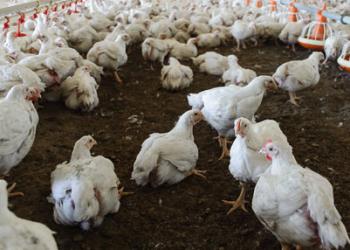 The total of medically important antibiotics used in 2019, comprising nine classes, amounted to 6,189,260 kg of active ingredient (13.6 million pounds). The use of non-medically important antibiotics of which 89 percent comprised ionophores attained 5,279,098 kg of active ingredient (11.6 million pounds). The total of medically important antibiotics used in 2019, comprising nine classes, amounted to 6,189,260 kg of active ingredient (13.6 million pounds). The use of non-medically important antibiotics of which 89 percent comprised ionophores attained 5,279,098 kg of active ingredient (11.6 million pounds).
The Executive Summary of the report demonstrated a decrease of 36 percent in antibiotic use from 2015 through 2019 and a decrease of 25 percent from 2010 through 2019. With specific reference to 2019 for all food species tetracyclines accounted for 66 percent of medically important antibiotic use; penicillins, 12 percent; macrolides, 8 percent; sulfas, 5 percent; aminoglycosides, 5 percent; lincosamides, 2 percent and cephalosporins 0.5 percent. Fluoroquinolones use accounted for less than 0.4 percent consistent with the previous ban on this class of antibiotics in food-producing species.
In evaluating medically important antibiotic drugs approved for use in food-producing animals marketed in 2019 a total of 6,189,260 kg was used in cattle, swine, chickens and turkeys representing a reduction of 26 percent from 2016 but 3 percent more than in 2018. The “other” category for non-food producing animals and minor food-producing species including fish amounted to 3.8 percent of the 2019 total to be subtracted from the 6,189,260 kg. for all food-producing animals.
Chicken (presumed to be broilers and breeders) consumed 3.1 percent of the total or 192,964 kg. Turkeys consumed 10.4 percent of the antibiotics used in food producing animals. The administration of antibiotics in egg-production was negligible and for the purposes of the FDA report any use in this sector was included in the “chicken” category.
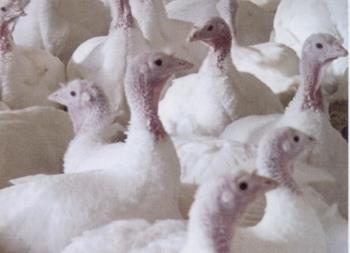 To determine the relative use of antibiotics in chickens and turkeys and the differences between 2016 and 2019 the use of antibiotics expressed in mg. was compared to production (RTC) in kg. For chickens in 2016 for each kg of RTC product 26.0 mg of antibiotic was used in 2019. The use per kg of RTC declined by 62.7 percent to 9.7 mg per kg. This is consistent with the general perception that antibiotic use in the broiler industry has more than halved over the past three years due the introduction of “no-antibiotic-ever” or alternative label claims for reduced antibiotic use. To determine the relative use of antibiotics in chickens and turkeys and the differences between 2016 and 2019 the use of antibiotics expressed in mg. was compared to production (RTC) in kg. For chickens in 2016 for each kg of RTC product 26.0 mg of antibiotic was used in 2019. The use per kg of RTC declined by 62.7 percent to 9.7 mg per kg. This is consistent with the general perception that antibiotic use in the broiler industry has more than halved over the past three years due the introduction of “no-antibiotic-ever” or alternative label claims for reduced antibiotic use.
For turkeys the consumption of antibiotic expressed per unit of processed mass was 126.5 mg per kg. in 2016. Antibiotic use was calculated to be 4.9 times that of broilers in the year before introduction of VFDs and prescriptions. In 2019 antibiotic use in turkeys declined by 12.4 percent to 110.8 mg per kg. Between 2016 and 2019 the ratio of antibiotic use in turkeys compared to chickens widened from 4.9 to 11.4 suggesting less progress in eliminating antibiotics for this segment of the U.S. poultry industry.
The broiler industry has managed to eliminate antibiotics by recognizing that a number of growth-stimulating antibiotic products were basically ineffective or provided a marginal benefit in relation to cost. The industry has made strides in controlling immunosuppressive infections including Marek’s and infectious bursal disease. Vaccination against respiratory infections including IB and LT has effectively reduced the severity of these conditions. A greater awareness of the need for appropriate ventilation and control of litter moisture has reduced both the severity and consequences of respiratory disease and intestinal infections. This has resulted in lower use of antibiotics to control colibacillosis and clostridial enterotoxemic conditions including NE. Regrettably less progress has been made in the adoption of alternative modalities to antibiotics in the turkey industry to both prevent and treat infections.
|
Parameter
|
2016
|
2019
|
Difference (%)
|
|
Chicken RTC (million m. tons)
|
19.364
|
19.957
|
+3.1
|
|
Antibiotic use (kg)
|
508,800
|
192,964
|
-62.1
|
|
Chicken use (mg/kg RTC)
|
26.0
|
9.7
|
-62.7
|
| |
|
|
|
|
Turkey RTC (million m. tons)
|
5.981
|
5.818
|
-2.7
|
|
Antibiotic use (kg)
|
756.620
|
644,921
|
-14.8
|
|
Turkey use (mg/kg RTC)
|
126.5
|
110.8
|
-12.4
|
| |
|
|
|
|
Ratio Turkey : Chicken use
|
4.9
|
11.4
|
+132.7
|
COMPARISON OF ANTIBIOTIC USE IN CHICKENS AND TURKEYS 2016-2020
In commenting on the report, Dr. Ashley Peterson the Senior Vice President For Scientific and Regulatory Affairs for the National Chicken Council stated, “We are proud to say that chicken producers have been leaders in proactively taking steps toward finding alternative ways to control disease while reducing antibiotic use, especially those important to human medicine.”
For the purposes of comparison, antibiotic use in the swine industry amounted to 205.6 mg per kg. in 2019 based on production of 12.56 million metric tons of RTC.

|
Widespread Criticism of U.S. PCR COVID Testing
|
12/14/2020 |
|
 The outgoing Administration has consistently quoted the "successful" implementation of millions of COVID-19 PCR assays. Bill Gates, entrepreneur, philanthropist and founder of Microsoft regards the testing component of COVID-19 control in the U.S. as ineffective and a waste of money. The entire U.S. program of testing based on PCR assay has been ineffective and the contribution of this aspect of control contrasts poorly with the success of the Warp Speed development of vaccines. The outgoing Administration has consistently quoted the "successful" implementation of millions of COVID-19 PCR assays. Bill Gates, entrepreneur, philanthropist and founder of Microsoft regards the testing component of COVID-19 control in the U.S. as ineffective and a waste of money. The entire U.S. program of testing based on PCR assay has been ineffective and the contribution of this aspect of control contrasts poorly with the success of the Warp Speed development of vaccines.
The contribution of ‘testing’ in reducing the incidence rate of COVID-19, depends on identifying both asymptomatic and affected individuals and having them isolate to prevent dissemination of virus. Any delay greater than 48 hours in receiving results invalidates the Purpose of testing individuals.
 Dr. Brett Giroir, Assistant Secretary for Health responsible for the inadequately implemented and fragmented testing program effectively agreed with Gates in a recent interview on CNN. Dr. Giroir stated, "we are never going to be happy with testing until we get turnaround times within 24 hours and I would be happy with point-of-care testing everywhere". Giroir added that more than half of COVID testing is conducted at central laboratories with turnaround times of over four days. The highest daily test rate was on July 28th with 733,000 tests conducted, most of which fell into the "useless" category with respect to prasctical control of the infection. Dr. Brett Giroir, Assistant Secretary for Health responsible for the inadequately implemented and fragmented testing program effectively agreed with Gates in a recent interview on CNN. Dr. Giroir stated, "we are never going to be happy with testing until we get turnaround times within 24 hours and I would be happy with point-of-care testing everywhere". Giroir added that more than half of COVID testing is conducted at central laboratories with turnaround times of over four days. The highest daily test rate was on July 28th with 733,000 tests conducted, most of which fell into the "useless" category with respect to prasctical control of the infection.
A number of prominent epidemiologists have noted that a lateral-flow immunoassay test similar to a pregnancy test kit with about 90 percent sensitivity and 95 percent specificity, costing in the region of $1 to $3 would be more beneficial than PCR procedures at $100 offering 99 percent sensitivity but with extended delays in obtaining results.
 Early in the COVID outbreak, the question of testing was politicized. Prominent members of the outgoing Administration believed that the rapidly ascending incidence rate actually attributed to widespread community infection was in fact due to "testing". A wide gulf in understanding developed between epidemiologists affiliated with the NIH and the Centers for Disease Control and Prevention (CDC) with the non-scientists in the White House concerned with optics of ascending incidence rates. Overt attempts were made to suppress statistics on new cases and hospitalizations to support the myth that the nation had somehow “turned a corner” to permit restoration of pre-COVID activities. The role of the CDC with respect to testing was subject to restraints imposed by the Administration leading to what may be regarded as a national failure with respect to a critical aspect of control. China, Taiwan, South Korea and New Zealand achieved early and rapid control of COVID through testing and quarantine and implementation of commonsense protective measures. Early in the COVID outbreak, the question of testing was politicized. Prominent members of the outgoing Administration believed that the rapidly ascending incidence rate actually attributed to widespread community infection was in fact due to "testing". A wide gulf in understanding developed between epidemiologists affiliated with the NIH and the Centers for Disease Control and Prevention (CDC) with the non-scientists in the White House concerned with optics of ascending incidence rates. Overt attempts were made to suppress statistics on new cases and hospitalizations to support the myth that the nation had somehow “turned a corner” to permit restoration of pre-COVID activities. The role of the CDC with respect to testing was subject to restraints imposed by the Administration leading to what may be regarded as a national failure with respect to a critical aspect of control. China, Taiwan, South Korea and New Zealand achieved early and rapid control of COVID through testing and quarantine and implementation of commonsense protective measures.
To implement effective prevention of COVID-19 in the context of packing plants and food production facilities antigen tests applying lateral immunoflow technology are required. These provide low-cost and almost instant results that can form the basis of a logical assignment of employees to either quarantine or their workplace.

|
USDA-APHIS Modifies Response to Potential Foot-and-Mouth Disease Outbreak-Implications for HPAI?
|
12/12/2020 |
|
 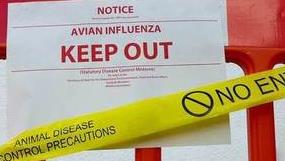 Foot-and-Mouth disease is exotic to the U.S. but the USDA-Animal and Plant Health Inspection Service (APHIS) has updated their response plan to any possible introduction of the infection. Regular reviews are conducted by APHIS, based on experience in other nations confronted with catastrophic diseases and the Agency conducts regular exercises to ensure preparedness. Foot-and-Mouth disease is exotic to the U.S. but the USDA-Animal and Plant Health Inspection Service (APHIS) has updated their response plan to any possible introduction of the infection. Regular reviews are conducted by APHIS, based on experience in other nations confronted with catastrophic diseases and the Agency conducts regular exercises to ensure preparedness.
An important component of the updated response plan will be the use of an effective FMD vaccine. This is an important departure from the conventional stamping-out approach. Obviously APHIS was influenced by the extensive outbreak in the U.K. that commenced in 2018 and resulted in extensive losses in the dairy, beef, pork and sheep industries. During the initial six months of the outbreak, the resources of the Department of Agriculture were overwhelmed. Control was only achieved when the U.K. military were called on to deplete farms and dispose of carcasses, ending the outbreak.
Post-disease reviews clearly indicated that quarantine including restricting movement of animals, products and personnel were critical to limit the spread of infection. FMD is not in itself a fatal disease and animals can recover if provided supportive therapy and care. Ring immunization to establish a barrier against dissemination of virus will be incorporated in any future outbreaks of FMD in the U.K. Epidemiologic monitoring has clearly demonstrated the value of immunization coupled with traditional methods of control. Now that the playbook has been revised for the U.S., it is hoped that a stockpile of FMD vaccine will be available to conduct an extensive immunization program as part of any required response.
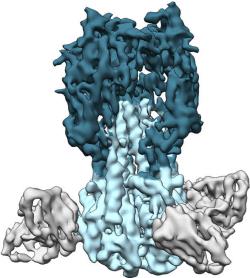 Prevention of FMD by rigorous control at points of entry into the U.S. is still the most effective strategy to prevent catastrophic infections such as FMD and African swine fever, requiring the cooperation of trading partners and especially Mexico and Canada. By the same token the USDA and the Customs and Border Control service have a joint responsibility to exclude all exotic diseases. Prevention of FMD by rigorous control at points of entry into the U.S. is still the most effective strategy to prevent catastrophic infections such as FMD and African swine fever, requiring the cooperation of trading partners and especially Mexico and Canada. By the same token the USDA and the Customs and Border Control service have a joint responsibility to exclude all exotic diseases.
The concept of using an FMD vaccine as a component of control should be reconsidered with respect to avian influenza. The 2015 outbreak required depletion of over 40 million birds and was a costly exercise for the industry, APHIS and consumers. The probability of introducing HPAI into the U.S. is far greater than FMD given that migratory waterfowl transmit the virus. This is evident in Europe and Asia at the present time. With the general adoption of compartmentalization for breeders and regionalization for production of eggs and poultry meat, ring immunization could be considered to control other than limited outbreaks of HPAI as implemented in Italy with an inactivated DIVA vaccine during the late 1990s.
In 2015, the use of vaccines to control HPAI in the egg industry was essentially vetoed on the grounds that it would seriously impact exports of poultry meat. Given the current situation, applying vaccines to control HPAI among egg production flocks in Iowa should not affect export of leg quarters and feet from southeast states if importing nations accept World Organization for Animal Health (OIE) guidelines. Outbreaks of Exotic Newcastle disease in backyard flocks in southern California, extending over thirty months and the limited outbreak of avian influenza among turkeys in the Carolinas in 2020 indicate a more flexible approach to restricting exports by our trading partners. It is inevitable that HPAI will return to the U.S. poultry industry and accordingly we should not exclude consideration of judicial and appropriate use of vaccines as a component of control.

|
Can Employers Mandate COVID Vaccination?
|
12/05/2020 |
|
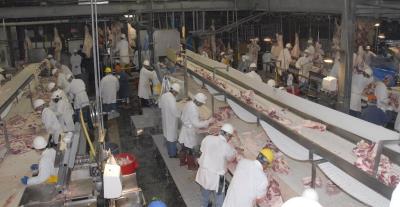 Given the imminent approval of two and possibly a third COVID vaccine and establishment of a priority list for recipients, wide scale vaccination of workers in the food industry is anticipated during the first quarter of 2021. The question arises as to whether employers will be entitled to mandate vaccination to protect the entire workforce in a facility. Availability of a vaccine does not absolve employers from conforming to accepted preventive measures nor does it allow workers to neglect commonsense precautions to avoid infection. Given the imminent approval of two and possibly a third COVID vaccine and establishment of a priority list for recipients, wide scale vaccination of workers in the food industry is anticipated during the first quarter of 2021. The question arises as to whether employers will be entitled to mandate vaccination to protect the entire workforce in a facility. Availability of a vaccine does not absolve employers from conforming to accepted preventive measures nor does it allow workers to neglect commonsense precautions to avoid infection.
There are no laws dealing specifically with COVID vaccination so policy should be based on current regulations relating to seasonal influenza vaccine. According to Equal Employment Opportunity Commission rulings, an employee may be exempted from mandatory vaccination if an exceptionality covered by the Americans with Disability Act is present. Employees may also be allowed to forego vaccination in terms of VII of the Civil Rights Act of 1964, if receiving a vaccine violates religious beliefs. In these cases, an employer must provide additional PPE, change the work-station of the employee or allow work-from-home. Generally, the EEOC encourages employees to volunteer to receive a vaccine rather than having a mandate requiring  administration. The CDC guidelines should serve as the basis for company policy with specific reference to critical industries including healthcare and presumably food production. The Centers for Medicare and Medicaid services have published an Interim Final Rule to facilitate access to COVID-19 vaccines. It is hoped that favorable publicity emphasizing the effectiveness and safety of vaccines will encourage uptake. Peer pressure among workers in a plant will be an important determinant of the willingness to be vaccinated and it is evident that obstacles to receiving a vaccine should be minimized. administration. The CDC guidelines should serve as the basis for company policy with specific reference to critical industries including healthcare and presumably food production. The Centers for Medicare and Medicaid services have published an Interim Final Rule to facilitate access to COVID-19 vaccines. It is hoped that favorable publicity emphasizing the effectiveness and safety of vaccines will encourage uptake. Peer pressure among workers in a plant will be an important determinant of the willingness to be vaccinated and it is evident that obstacles to receiving a vaccine should be minimized.
The quicker that our nation can be immunized, the earlier we will be able to return to a “new normal”. It is axiomatic that vaccination alone will not necessarily bring an end to the pandemic. Even if more than 70 percent of our population are vaccinated, preventive measures including masking, social distancing and avoiding social gatherings will have be followed through most of 2021. Relaxation of precautions can be reviewed in the light of incidence rates in specific communities.

|
Uncertainty Over Consumption of Turkey for Thanksgivingnin 2020
|
11/22/2020 |
|
 Each year turkey producers attempt to quantify demand for turkeys in anticipation of the Thanksgiving and Christmas period in order to determine the relative and total volumes of hen and tom placements. The current year has been like no other due to the impact of COVID-19 and the consequential effect on preferences and buying power. Each year turkey producers attempt to quantify demand for turkeys in anticipation of the Thanksgiving and Christmas period in order to determine the relative and total volumes of hen and tom placements. The current year has been like no other due to the impact of COVID-19 and the consequential effect on preferences and buying power.
On November 19th the Centers for Disease Control and Prevention issued an advisory against family gatherings requiring travel or multigenerational or multifamily participation, for fear of increasing the rapidly escalating incidence rate especially in the midwest, southwest and northern-tier states. Although placements of poults is lower in 2020 compared to previous years due to sharply lower earnings in 2019, predictions for the relative numbers of toms and hens to be sold will be influenced by public response to COVID. Smaller family gatherings suggest hen turkeys of reduced size or in many cases substitution will occur with serving of roast chicken or only ham for the traditional meal.
It is significant that Meijer has slashed the price of store-brand birds to 39 cents per pound from mid-November through Thanksgiving. Frozen branded turkeys are offered at prices from 79 cents to 99 cents per pound. Lynette Ackley, Vice President of Fresh for Meijer stated, “This year certainly has not been easy causing numerous disruptions to birthday celebrations, milestone occasions and family gatherings.” She added, “As we head into the holiday 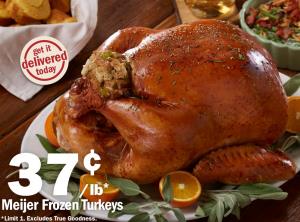 season we wanted to make sure our time-honored Thanksgiving tradition of offering birds at an incredibly low price continued for our customers.” As stock of frozen toms increases many chains will offer loss leader prices to move inventory. season we wanted to make sure our time-honored Thanksgiving tradition of offering birds at an incredibly low price continued for our customers.” As stock of frozen toms increases many chains will offer loss leader prices to move inventory.
Many supermarkets and restaurants chains that have been impacted by COVID restrictions are offering pre-prepared family meals with a roasted hen turkey presented with the “fixings” to feed up to six diners.
Stock levels will be carefully monitored and will determine future placing of hen and tom poults as the industry moves through the first quarter of 2021. Restoration of profitability or in the case of some companies, achieving a “less bad” situation may well be reversed. Following the situation in 2020, supply may have to be further reduced to balance demand in an economy that has yet to recover from the impact of COVID-19 and in a market with available protein in abundance. For the processing week ended November 14th the national average frozen hen wholesale price declined 6.8 cents per lb. to 106 cents per lb. compared to the previous week. In contrast fresh hens retained their value at 132 cents per lb. Consistent with seasonal trends, cold storage at selected centers decreased by 41 percent from November 1st to November 16th but accumulation of stock may be occurring at the retail level.

|
Finalization of the Regional Comprehensive Economic Partnership
|
11/18/2020 |
|
The Regional Comprehensive Economic Partnership (RCEP) came into being on Sunday, November 15th. This Asian trading block comprises 15 nations, including 10 members of the Association of Southeast Asian Nations and includes seven existing members of the Comprehensive and Progressive Agreement for Trans-Pacific Partnership (CPATPP), established over four years ago. Following extensive negotiations through 2015 and 2016 the U.S. withdrew unilaterally from what was then the TPPA forerunner of the CPATPP in 2017. The policy of estanblishing separate bilateral agreements with China and Japan has been less beneficial than membership of the TPPA would have been.
|

China emerges as a winner with RCEP |
|

The RCEP is considered deficient in that both environmental and labor rules are poorly defined as are the sections on dispute settlement, competition and services. Despite shortcomings China appears to be a winner as it is now established as participant in an Asian trading group.
The incoming Administration will have to carefully evaluate future trade agreements but rejoining the CPATPP would appear to be the best option to counter the regional influence of China.
|

|
Rising Incidence of COVID Results in Gubernatorial Finger Pointing
|
11/12/2020 |
|

Sturgis Rally
A Superspreader Event
|
Minnesota Governor Tim Walz (D) has criticized the Governor of neighboring South Dakota Kristi Noem (R) for facilitating the spread of COVID. He pointed specifically to the August Sturgis Motorcycle Rally that he characterized as "absolutely unnecessary" and resulted in regional spread of the virus. As of Friday 13th the positive rate for COVID tests attained 56 percent in South Dakota, indicating widespread infection. The WHO generally regards 5 percent as a critical level requiring public health intervention. In comparison there are 11 states with positive levels ranging from 1.1 to 5.0 percent of those tested. The difference is not due to intensity of testing as the states with low positive rates all have a higher proportion of their populations tested than in South Dakota.
|
| Irrespective of political affiliation, virtually all states are recording increased incidence rates although social distancing and masking appear to be ameliorative. Every effort should be made to once again "flatten the curve". This will require voluntary compliance with masking and abstaining from unnecessary travel and gatherings. Since wide deployment of an effective COVID vaccine is months in the future, commonsense precautions are required to ease the pressure on our medical first responders and intensive care wards. Control of the disease is essential to allow gradual reopening of schools, universities and other segments of our economy that have been impacted over the past nine months. |

MN Gov. Tim Walz (D) |

SD Gov. Kristi Noem (R) |
As of November 13th the Johns Hopkins Center for Health Security reported that the U.S. has recorded 10.4 million cases with 241,000 confirmed deaths. For seven consecutive days, new cases have exceeded 120,000 per day representing a 70 percent increase over two weeks. Fatalities are also increasing, but fortunately at a disproportionate rate to new cases mainly due to improved diagnosis and supportive therapy. Close to 1,500 fatalities were recorded on November 12th and 13th and will increase in the most affected states since deaths from COVID lag cases by about three weeks.
|

|
Discrepancy in Fines by Western State and Federal OSHA Over COVID
|
11/10/2020 |
|
The Food and Environmental Research Network estimates that 72,000 farm, meat-plant and food industry workers have contracted COVID since the commencement of the outbreak resulting in 327 fatalities. If there are 550,000 employed in food and farming, and the data is accurate, the prevalence rate is over 13,000 per 100,000 population which is totally inconsistent with what might be regarded as acceptable, compared to data for the U.S. population. During the first week in November, the U.S. had reported 9.4 million total cases and 233,100 fatalities with an incidence rate of over 100,000 per day.
After investigation of COVID outbreaks, the Federal Occupational Safety and Health Administration has levied a series of fines against packers. Smithfield Foods was fined approximately $14,000 for the outbreak involving 1,300 workers at the Sioux Falls, SD. plant. JBS was fined $14,000 for 348 cases in outbreak in their Green Bay, WI. packing plant. Based on three plants where OSHA fines were imposed, the quantum per worker ranged from $10 to $50. In contrast, regulators in California and Oregon that operate a state Occupational Safety and Health Administration, have been more stringent. California has levied $400,000 in fines for deficiencies in protection on both farms and plants. Violations usually relate to social distancing and failure to provide PPE. The Olson Meat Company was fined $9,000, DL Poultry, $36,000 and Overhill Farms $110,000 among others, for failure to create conditions that would protect workers.
|
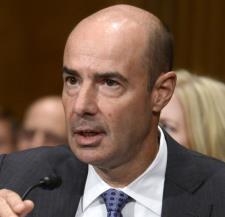
Sec. Labor Eugene Scalia |
|
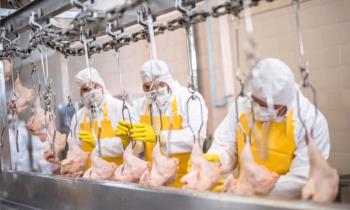 Maura Ortenburger, Director of Communications and Research at Worksafe stated, “at the Federal level it is seriously disappointing and dangerous, the way the head of the Labor Department has been running OSHA.” Recent news reports have criticized the Secretary of the Department of Labor, Eugene Scalia, appointed in late September 2019 as a “wrecking ball aimed at workers” Scalia previously functioned as a partner in the Firm of Gibson, Dunn and Crutcher, representing corporate interests in labor litigation. From 1992 through 1993 he served as a special assistant to then Attorney General William P. Barr in the Bush Administration. Maura Ortenburger, Director of Communications and Research at Worksafe stated, “at the Federal level it is seriously disappointing and dangerous, the way the head of the Labor Department has been running OSHA.” Recent news reports have criticized the Secretary of the Department of Labor, Eugene Scalia, appointed in late September 2019 as a “wrecking ball aimed at workers” Scalia previously functioned as a partner in the Firm of Gibson, Dunn and Crutcher, representing corporate interests in labor litigation. From 1992 through 1993 he served as a special assistant to then Attorney General William P. Barr in the Bush Administration.
Obvious opposition to worker’s rights runs counter to representations by Secretary Scalia and the Administrators of OSHA regarding improving ergonomics and preventing COVID. He is actually on record as stating that OHSA has no role in managing COVID-19 in the U.S. Over the past four years policy directives and OSHA regulations have been progressively more favorable to employers.
|

|
Tyson Still Faces Elements of a Contract Grower Lawsuit
|
11/03/2020 |
|
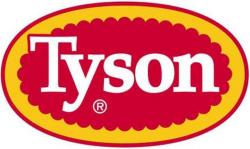 Morris v. Tyson filed in 2015 was the subject of a hearing before Judge Joseph H. McKinley Jr. of the Western District of Kentucky. Judge McKinley dismissed the breach of the implied covenant and fraud claims against Tyson Foods. He allowed the case to continue with respect to alleged violations of the Packers’ and Stockyards Act and breach of contract. In his ruling, Judge McKinley noted, “There is evidence that Tyson operated in an anti-competitive manner that could represent a violation of the Packers’ and Stockyards Act”. Morris v. Tyson filed in 2015 was the subject of a hearing before Judge Joseph H. McKinley Jr. of the Western District of Kentucky. Judge McKinley dismissed the breach of the implied covenant and fraud claims against Tyson Foods. He allowed the case to continue with respect to alleged violations of the Packers’ and Stockyards Act and breach of contract. In his ruling, Judge McKinley noted, “There is evidence that Tyson operated in an anti-competitive manner that could represent a violation of the Packers’ and Stockyards Act”.
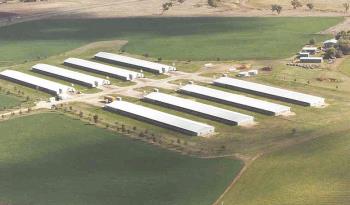 The case arises from allegations raised by growers supplying the Robards, KY. complex. The plaintiffs commissioned Dr. Kyle Stiegert of the Department of Agricultural and Applied Economics at the University of Wisconsin, Madison to calculate damages as a result of allegedly anti-competitive practices. The case arises from allegations raised by growers supplying the Robards, KY. complex. The plaintiffs commissioned Dr. Kyle Stiegert of the Department of Agricultural and Applied Economics at the University of Wisconsin, Madison to calculate damages as a result of allegedly anti-competitive practices.
Contractors growing for complexes that are geographically separated from complexes operated by other integrator are in a difficult position since they effectively only have one potential source of income and must depend on the good intentions of the integrator. The establishment of the Lincoln Premium Poultry complex in Fremont, NE is an obvious example but the Costco supply enterprise has had no problem attracting growers. Tyson Foods has operated a complex in Obion County, TN. for a number of decades and has expanded the complex successively over the years bringing in more contractors thereby benefitting the County. In areas where contractors can affiliate with more than one integrator, there is the possibility of “non-poach” agreements although this would be regarded as anti-competitive and a violation of the Packers’ and Stockyards Act.
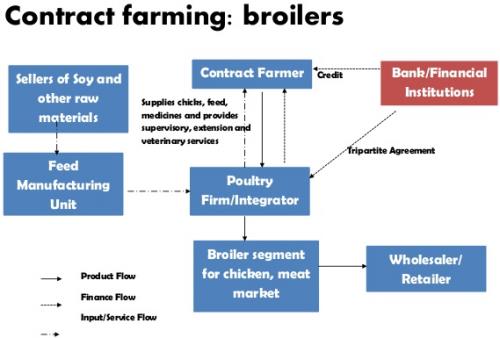
The larger broiler integrators have clearly defined conditions of association in their contracts, and they operate with input from grower committees. The fact that there are waiting lists for contractors in many areas attests to the equity of the system that has created the most efficient and mutually beneficial system of broiler production in the world that benefits row-crop farmers, contractors, allied suppliers, integrators and consumers.

|
Pilgrim’s Pride Agrees to $110 Million Fine in Plea Agreement
|
10/17/2020 |
|
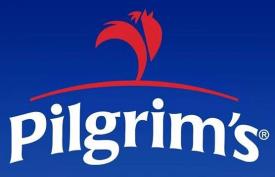 Pilgrim’s Pride Corp, controlled by JBS SA, has reached an agreement with the U.S. Department of Justice, Antitrust Division with respect to allegations of collusion to manipulate prices of products. In a company statement Pilgrim’s Pride noted that the fine was “for restraint of competition that affected three contracts for the sale of chicken products to one customer in the United States.” The agreement apparently ends the criminal investigation by the DOJ into Pilgrim’s Pride. The company will not function under monitoring or be subject to a probationary period, providing there is compliance with the terms and provisions of the agreement yet to be publicized. Pilgrim’s Pride Corp, controlled by JBS SA, has reached an agreement with the U.S. Department of Justice, Antitrust Division with respect to allegations of collusion to manipulate prices of products. In a company statement Pilgrim’s Pride noted that the fine was “for restraint of competition that affected three contracts for the sale of chicken products to one customer in the United States.” The agreement apparently ends the criminal investigation by the DOJ into Pilgrim’s Pride. The company will not function under monitoring or be subject to a probationary period, providing there is compliance with the terms and provisions of the agreement yet to be publicized.
Fabio Sandri, newly appointed CEO of Pilgrim’s Pride, stated, “Pilgrim’s is committed to fair and honest competition in compliance with U.S. Antitrust laws.” He added, “We are encouraged that today’s agreement concludes the Antitrust Division’s investigation into Pilgrim’s and provides certainty regarding this matter to our team members, suppliers, customers, and shareholders.”
 The plea agreement effectively limits the options to indicted previous CEOs Bill Lovette and Jayson Penn. The action by the Company obviously undercuts any viable defense to be mounted by Claxton Poultry, its president and marketing personnel. The plea agreement effectively limits the options to indicted previous CEOs Bill Lovette and Jayson Penn. The action by the Company obviously undercuts any viable defense to be mounted by Claxton Poultry, its president and marketing personnel.
In commenting on the plea agreement, analyst Ben Bienvenu of Stephens Inc. cited, “This largely puts the controversy in the company’s rear-view mirror.” For his information Pilgrim's Pride is still at jeopardy from civil lawsuits initiated in 2016 but suspended as a result of the DOJ investigation. The civil case, certainly against Pilgrim’s Pride, is now res ipsa and it is doubtful how the company can mount any convincing defense. If Pilgrim’s Pride does not settle with plaintiffs, it is possible that a trial jury will award both direct and punitive damages that would be extremely costly.
Apart from the financial impact of the settlement, certainly Pilgrim's Pride has undergone reputational damage that ultimately may affect not only share price, but also customer goodwill and the intended IPO of JBS subsidiaries in the U.S. With respect to other companies under investigation, Tyson Foods, through its admissions to the DOJ, will probably escape fines but obviously documentation has been made available that may be used in prosecution of possible related crimes under investigation.
An aspect of the class action suit was that all major U.S. broiler integrators participated in indirect collusion through their subscription to the Agristats™ benchmarking system. This aspect has yet to be considered in a trial. If the Pilgrim’s Pride plea agreement is entered into evidence, the Defendants in the civil case may be well advised to settle and not risk a jury trial with the possibility of punitive damages.
The statement by Assistant Attorney General for the Antitrust Division, Makan Delrahim, and the sentence handed down to Christopher Lischewski, CEO of Bumblebee Seafoods, who received 40 months in federal prison and a substantial fine are now a matter of record. This suggests that indicted chicken company executives previously at Pilgrim’s Pride, those at Claxton Poultry, and sales personnel previously employed by Tyson Foods may receive sentences that would serve as a disincentive to engage in restraint of trade.
The decision by Pilgrim’s Pride to enter into a plea deal with U.S. Department of Justice will expedite the end to this sorry episode that does not appear to be representative of the entire broiler industry. Prompt resolution will limit further degradation of image.

|
Cattlemen Divided over APHIS Electronic Tag Proposal
|
10/17/2020 |
|
 Control of bovine diseases in the U.S. and compliance with trade restrictions require positive identification of individual animals to establish a history of movement, vaccination status, age and location. The USDA Animal Plant Health Inspection Service previously announced that RFID electronic ear-tags as used in the EU will be introduced to the U.S. and will be required for interstate movement. Control of bovine diseases in the U.S. and compliance with trade restrictions require positive identification of individual animals to establish a history of movement, vaccination status, age and location. The USDA Animal Plant Health Inspection Service previously announced that RFID electronic ear-tags as used in the EU will be introduced to the U.S. and will be required for interstate movement.
In comments filed with USDA on the proposal, the U.S. Cattlemen’s Association (USCA) accepted the principle of identification for the purpose of traceback stating, “Knowing where diseased and at-risk exposed animals are as well as were they have been and when, it is indispensible to emergency response and ongoing disease control and eradication programs.”
In contrast R-CALF USA is strenuously opposed to RFID tags and advocates retention of metal numeric ear tags. This is consistent with the 1900s approach of the organization that hearkens back to the freedom of the Wild West. Metal tags are impermanent and can be changed at will. R-CALF maintains that there is a hidden mandate in the APHIS proposal and they have objected to registration of farms as a prerequisite for shipping cattle interstate.
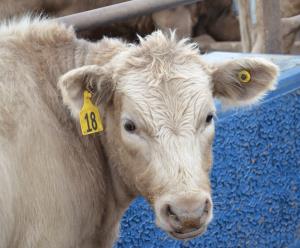 The National Cattlemen’s Beef Association filed comments supporting RFID traceability enabling the industry, federal and state regulators to respond rapidly to any animal health emergency. The National Cattlemen’s Beef Association filed comments supporting RFID traceability enabling the industry, federal and state regulators to respond rapidly to any animal health emergency.
The U.S. Cattlemen’s Association provided a number of suggestions that they would like to be incorporated into the APHIS program due to take effect on January 1st 2023. Security is obviously an issue and USCA requested that databases should be held in-state and only shared with the USDA as required. The USCA suggested that 840-series EID tags should be used reflecting cattle born and raised in the U.S. It was recommended that metal and electronic tags should continue parallel with metal tags as the industry adapts to an electronic system. USCA requested that identification numbers for farm premises should not be required to obtain EID tags.
The FSIS has awarded contracts for up to eight million low-frequency RFID ear tags with provision for additional purchases over the following five years. Greg Ibach, USDA Undersecretary for Marketing and Regulatory Programs stated, “USDA continues its commitment to protecting our nation’s animal agriculture by increasing traceability in the cattle and bison sectors – in this case, by providing free RFID tags to interested producers. Since 2018 the U.S. beef industry has cooperated with APHIS operating RFID systems in pilot programs in Kansas, Florida and Texas.
The Final Rule will take effect in January 2022 when USDA would no longer approve of metal ear tags with the official USDA shield. The following year RFID tags would become the only identification devices approved as an official means of identification for cattle.
Opposition to RFID or an alternative electronic identification system mounted by the Montana based R-CALF USA is regarded as retrograde and inconsistent with the needs of the U.S. cattle industry with respect to trade and the control of any future emerging disease.

|
U.S. Mink Farmers Encounter COVID
|
10/13/2020 |
|
Following extensive losses among mink farms in the EU, it was inevitable that farmers in the U.S. would encounter the disease.
Utah has experienced COVID-19 in mink operations that have been quarantined. The disease has now appeared in mink farms in Wisconsin with high mortality, parallelingthe situation in Holland, Denmark, and Spain. That mink are susceptible to COVID-19 should be expected given that ferrets, a closely related species, are used as experimental animals.
Epidemiological investigations in the EU demonstrated that SARS-CoV-2 was transmissible from humans to mink and vice versa and accordingly mink on affected farms were depleted. The issue of suppressing mink farming as a public health and welfare issue has caused deep division in Poland where there is support for a ban as in the Netherlands.
|

Culled mink in Denmark |
|
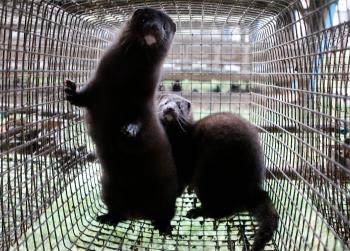 State and Federal officials have yet to address the issue of COVID-19 in mink and have not provided details as to the disease status of specific farms or the status of owners and caretakers with regard to infection. Simply quarantining farms will probably not be effective given that asymptomatic humans may introduce or disseminate infection. State and Federal officials have yet to address the issue of COVID-19 in mink and have not provided details as to the disease status of specific farms or the status of owners and caretakers with regard to infection. Simply quarantining farms will probably not be effective given that asymptomatic humans may introduce or disseminate infection.
The decision to depopulate affected mink farms in Holland was based on the concern that a more virulent strain of SARS-CoV-2 might emerge through mutation in a dense population of confined animals in close contact with humans.
|

|
Texas Court Shuts Broiler Farm Following Odor Litigation Alleging Nuisance
|
10/04/2020 |
|
A State District 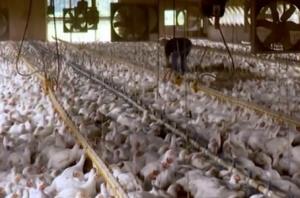 Court in Henderson County, TX. issued a cease and desist order against a contractor for Sanderson Farms. At issue were complaints by residents of the area alleging odor resulting in “irreparable injury through substantial and Court in Henderson County, TX. issued a cease and desist order against a contractor for Sanderson Farms. At issue were complaints by residents of the area alleging odor resulting in “irreparable injury through substantial and  unreasonable nuisance”. The judge ordered the contractor to cease operations within five miles of any boundary of plaintiffs’ properties. unreasonable nuisance”. The judge ordered the contractor to cease operations within five miles of any boundary of plaintiffs’ properties.
The order apparently ignored the Texas Right to Farm Statute. Evidence was entered that the Texas Council on Environmental Quality has previously attempted to force the defendant farmer to reduce odor but without alleviating the problem.
|
China Extending Bans on Food Imports Based on the Presumption of COVID-19 Contamination
|
09/29/2020 |
|
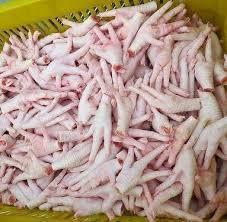 Recently the General Administration for Customs for the Government of China imposed bans on two U.S. poultry plants in addition to numerous hog and beef plants and suppliers in Latin America. In September, China suspended imports from seafood suppliers in Brazil, Indonesia and Russia again without acceptable levels of transparency regarding assays. Recently the General Administration for Customs for the Government of China imposed bans on two U.S. poultry plants in addition to numerous hog and beef plants and suppliers in Latin America. In September, China suspended imports from seafood suppliers in Brazil, Indonesia and Russia again without acceptable levels of transparency regarding assays.
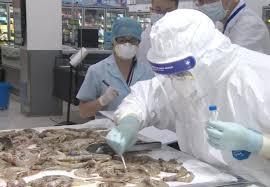 The justification was alleged contamination of outer packaging and products with COVID-19 virus. Release of scientific data justifying this action has not been forthcoming. It is questioned whether China is using COVID-19 to intimidate exporters or is in fact engaged in a program of self-deception relating to COVID-19 or reflects a cover-up. The justification was alleged contamination of outer packaging and products with COVID-19 virus. Release of scientific data justifying this action has not been forthcoming. It is questioned whether China is using COVID-19 to intimidate exporters or is in fact engaged in a program of self-deception relating to COVID-19 or reflects a cover-up.
The situation attained a new dimension in late September with the Beijing Municipal Commerce Bureau calling on importers to discriminate against exporting nations with "severe novel- coronavirus outbreaks". The Bureau has urged monitoring of prevalence rates in exporting nations and has advised government-affiliated importers to avoid sourcing product from areas that are severely affected with COVID-19.

|
Whole Foods’ John Mackey Believes Online Grocery Shopping will Decline
|
09/21/2020 |
|
Yahoo Finance quotes John Mackey, CEO of Whole Foods Market, a subsidiary of Amazon, as stating, “COVID was a tremendous accelerant for online grocery shopping and people that have never done it before did it for the first time.” He added, “But once the pandemic is fully behind us, however long that will take, the surge in online grocery will slow.” Mackey believes that shoppers will resume normal patterns after the COVID crisis has ended. His boss, Jeff Bezos may however disagree with this prediction.
Before the advent of COVID, many chains were upgrading stores to provide a destination shopping experience. This is evident in the new Wegman’s locations in the Mid-Atlantic and especially in North Carolina where the company has proposed four additional stores in addition to the Morrisville NC. store opened during late August.
|

John Mackey |
|
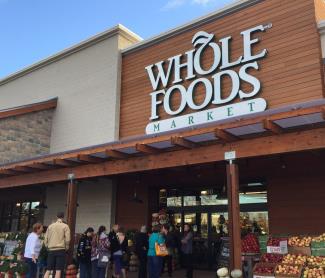 When the COVID vaccine is administered to a high proportion of U.S. residents and if incidence rates decline to a level that encourages a feeling of safety, shoppers will return to stores. The habits of generations will not be extinguished by the relatively short-term restrictions imposed by COVID. There will be a pent-up demand for personal shopping. Although hybrid and omni- channel sales of groceries will be part of the retail picture for a few years, shoppers will return to stores to experience the benefits of personal selection and to satisfy the inherent need for socialization and human interaction. When the COVID vaccine is administered to a high proportion of U.S. residents and if incidence rates decline to a level that encourages a feeling of safety, shoppers will return to stores. The habits of generations will not be extinguished by the relatively short-term restrictions imposed by COVID. There will be a pent-up demand for personal shopping. Although hybrid and omni- channel sales of groceries will be part of the retail picture for a few years, shoppers will return to stores to experience the benefits of personal selection and to satisfy the inherent need for socialization and human interaction.
|

|
Trying to Make “Less than Thoroughly Cooked” Burgers Safe
|
09/07/2020 |
|
Studies are in progress in the UK to render “less than thoroughly cooked” (LTTC) burgers safe with respect to foodborne bacterial infections. This is a dangerous exercise in futility.
 I hearken back to a surgery lecture in 1963 when Professor C.F.B. Hofmeyer raised the question of how to spay a cat using nail clippers, eyebrow tweezers, sewing scissors, a crochet needle, a fork and a teaspoon. Over the succeeding ten minutes, lively discussions ensued involving all forms of innovation and make-do. Then came a questioning voice from the class. Why? A spay is an elective procedure unlike performing an emergency tracheostomy on an asphyxiating patient as a last resort. That was the answer that Hoffie wanted. If there was no real emergency or imperative to improvise then to paraphrase the Nike motto “Just don’t do It”. I hearken back to a surgery lecture in 1963 when Professor C.F.B. Hofmeyer raised the question of how to spay a cat using nail clippers, eyebrow tweezers, sewing scissors, a crochet needle, a fork and a teaspoon. Over the succeeding ten minutes, lively discussions ensued involving all forms of innovation and make-do. Then came a questioning voice from the class. Why? A spay is an elective procedure unlike performing an emergency tracheostomy on an asphyxiating patient as a last resort. That was the answer that Hoffie wanted. If there was no real emergency or imperative to improvise then to paraphrase the Nike motto “Just don’t do It”.
The University of Liverpool has evaluated bacterial infections associated with undercooked beef including STEC, Salmonella and Campylobacter and has suggested a variety of modalities alone or in combination. These include thermal treatment of carcasses with hot water, steam pasteurization and lactic acid washes, as permitted in EU packing plants. Unfortunately none of these measures can consistently and effectively reduce the hazard of foodborne infection to an acceptable (zero?) level.
 It is however possible to eliminate aerobic bacterial pathogens from patties using physical treatments such as electron beam or gamma radiation but these technologies are unfortunately disfavored by consumers despite the fact that they are beneficial and innocuous. It is however possible to eliminate aerobic bacterial pathogens from patties using physical treatments such as electron beam or gamma radiation but these technologies are unfortunately disfavored by consumers despite the fact that they are beneficial and innocuous.
So we come down to whether it is worthwhile to play burger roulette with LTTC food preparation. Those wishing to consume dangerous foods such as fugu or undercooked meat including steak tartar should do so at their own risk but should not in any way inflict their dietary predilections on the very young or the elderly. Fortunately most bacterial infections and foodborne parasites can be treated, although incurring direct and consequential costs and more than occasionally with permanent disability. This is illustrated by the case of U.S. Marine Corps. recruits in California who consumed undercooked beef, resulting in about 400 cases of E. coli O175: H7 infection. The most seriously affected Marines suffered hemolytic uremia syndrome, neural changes and arthritis requiring joint replacement, representing career-ending complications.
Basically scientists should not waste their time attempting to overcome challenges that are analogous to Don Quixote’s windmills. Either cook burgers to 165 F through to the center for at least 30 seconds and apply onions and lots of ketchup. Alternatively just consume the LTTC patty but first indemnify the cook restaurant, and meat packer.

|
Administration to Investigate Importation of Seasonal Produce from Mexico
|
09/06/2020 |
|
 Possible restrictions on seasonal importation of fruit and vegetable from Mexico follows reports released on September 1st by the office of the U.S. Trade Representative and the USDA, following Congessional hearings on August 13th and 20th. Possible restrictions on seasonal importation of fruit and vegetable from Mexico follows reports released on September 1st by the office of the U.S. Trade Representative and the USDA, following Congessional hearings on August 13th and 20th.
Proposed action will include:
- Initiation of discussions with officials in Mexico over the next three months to address concerns relating to strawberries and other produce
- Working with U.S. growers to initiate a WTO investigation
- USDA will develop a market promotion strategy emphasizing U.S. produce
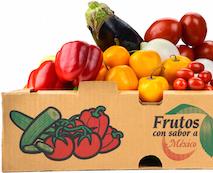 The U.S. recently concluded and ratified the USMCA. If Mexico is complying with the agreement, punitive action would be contrary to the USMCA. If Mexico is within its rights to export seasonal fruit and produce then it is up to domestic producers to make use of their resources to outcompete imports. The U.S. recently concluded and ratified the USMCA. If Mexico is complying with the agreement, punitive action would be contrary to the USMCA. If Mexico is within its rights to export seasonal fruit and produce then it is up to domestic producers to make use of their resources to outcompete imports.
Initiating trade wars to satisfy one or other segment of agriculture or industry results in inevitable retaliation. There is obvious concern for the volume of poultry exported to Mexico, our largest customer. For the first half of 2020, Mexico imported 335,054 metric tons of chicken valued at $292 million; 76,539 metric tons of turkey meat ($185.6 million); 6,320 metric tons of egg products ($16.9 million) and 23 million dozen eggs ($16.9 million). The Administration should be careful in evaluating the unintended consequences of any action that might engender enmity and retaliation.

|
Doubt Concerning the Efficacy of Convalescent Plasma for COVID-19 Patients
|
08/30/2020 |
|
Despite the much-heralded announcement on Sunday, August 23rd that convalescent plasma from patients recovered from COVID-19 was a groundbreaking therapy for COVID-19, specialists in infectious diseases and immunology have questioned the value of antibodies. The  Administration has previous touted hydroxychloroquine as a panacea, again without scientific support and justification and it now appears that convalescent plasma is the new "miracle". Administration has previous touted hydroxychloroquine as a panacea, again without scientific support and justification and it now appears that convalescent plasma is the new "miracle".
In an opinion article in the New England Journal of Medicine, editor Dr. Paul Sax noted that the justification for accepting that convalescent plasma was highly effective and was able to “reduce mortality by 35 percent” was based on incorrect interpretation of preliminary data. Randomized trials of convalescent plasma have in fact been disappointing and the claim that this approach was "powerful therapy" and "had an incredible rate of success" is unsubstantiated at best.
The NIH meta analysis involved a comparison among groups of patients that received convalescent plasma with either high or low antibody titer. There was no negative control and comparisons were confounded by other treatments and supportive therapy administered to the participants. A careful examination of data and statistical analysis did not support the Administration assertions apparently derived from unpublished studies.
What is disconcerting is the fact that Dr. Stephen Hahn, the Commissioner of the FDA, responsible for approval of convalescent plasma to treat COVID-19 was apparently either unaware of the discrepancy or failed to interpret data for which he subsequently apologized. Notwithstanding the FDA has extended Emergency–use authorization for hyperimmune plasma as a therapy. There is obvious concern over the potential for raising false hopes based on incomplete and non-peer reviewed data.
In his comments, Dr. Sax noted "I have not heard from a single infectious disease specialist who believes that approval of convalescent plasma was supported by existing data". Sax continued "convalescent plasma may work to help people with COVID-19, but if it does, we do not know how much or who are the most likely to benefit or how to select the right donors". Sax, representing the medical profession, notes that the evaluation of convalescent plasma comprised "70,000 anecdotes tied together by individual reports and separate observational studies". Sax along with reputable and experienced members of the medical community recognizes the need for randomized controlled clinical trials on hyperimmune plasma currently being performed in a number of nations.

|
American Humane Promotes New Deal for Animals
|
08/25/2020 |
|
 Founded in 1877, The American Humane Association has been at the forefront of responsible animal care. Recently Dr. Robin Ganzert issued the ten tenets of the American Humane New Deal. These include: Founded in 1877, The American Humane Association has been at the forefront of responsible animal care. Recently Dr. Robin Ganzert issued the ten tenets of the American Humane New Deal. These include:
- Ending wet-market slaughter and sale of animals
- Ending global cat and dog meat trade
- Ensuring independent humane inspection of farms and related biosecurity measures
- Ensuring independent oversight of animals in all forms of entertainment
- Intensifying humane inspection of zoos and aquariums worldwide
- Ending organized poaching and trade in bush meat
- Establishing and enforcing ethical standards for global animal tourism
- Enhancing safety standards for animals in transit
- Expanding the use of service and therapy dogs
A tenth item comprises “immediately stopping unnecessary tax payer-funded testing on animals”. The emphasis is on unnecessary. Advances in medical science require structured, justified, and humanely conducted research in accordance with existing federal and state legislation and approval and  oversight by IRB programs. Examples of unnecessary testing include the Draize Test, introduced by the FDA in 1944 and establishing MLD50 levels for chemical compounds requiring sacrifice of vast numbers of rodents. With the exception of aspects of animals in research where “unnecessary” can be subjective, as a Veterinarian involved in intensive livestock production for over 50 years, the American Humane New Deal is strongly supported. oversight by IRB programs. Examples of unnecessary testing include the Draize Test, introduced by the FDA in 1944 and establishing MLD50 levels for chemical compounds requiring sacrifice of vast numbers of rodents. With the exception of aspects of animals in research where “unnecessary” can be subjective, as a Veterinarian involved in intensive livestock production for over 50 years, the American Humane New Deal is strongly supported.

|
Oxfam America Unjustly Criticizes Chicken Industry Over COVID Response.
|
08/17/2020 |
|
 A recent report produced and circulated by Oxfam America claims that U.S. broiler integrators are "backsliding" over protection of workers from COVID. Established facts clearly indicate that most broiler producers were proactive in devising and implementing protective measures including distancing, installation of barriers between workstations and providing PPE at the outset of COVID. Incidence rates among workers in poultry processing plants compare favorably with corresponding records of infection in red meat plants and other industries. A recent report produced and circulated by Oxfam America claims that U.S. broiler integrators are "backsliding" over protection of workers from COVID. Established facts clearly indicate that most broiler producers were proactive in devising and implementing protective measures including distancing, installation of barriers between workstations and providing PPE at the outset of COVID. Incidence rates among workers in poultry processing plants compare favorably with corresponding records of infection in red meat plants and other industries.
Tom Super of the National Chicken Council condemned the Oxfam report as a "union propaganda piece". He stated, "the health and safety of the essential employees working to keep chicken on our tables has and continues to be the industry's number one priority".
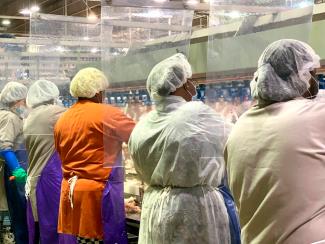 As with welfare and humane handling of live chickens, the health and safety of workers is critical to maintaining production volume and profitability. The industry has collectively modified procedures by staggering shifts, implementing additional sanitation, decontamination, employee education and providing PPE and workstation barriers. Following a sharp increase in incidence rate in April when COVID-19 emerged, cases have fallen precipitously attesting to the measures implemented by the industry. Some of the Oxfam allegations may have been valid in April, but they are certainly exaggerated or distorted in relation to practices reflecting the Industry from late May onwards. As with welfare and humane handling of live chickens, the health and safety of workers is critical to maintaining production volume and profitability. The industry has collectively modified procedures by staggering shifts, implementing additional sanitation, decontamination, employee education and providing PPE and workstation barriers. Following a sharp increase in incidence rate in April when COVID-19 emerged, cases have fallen precipitously attesting to the measures implemented by the industry. Some of the Oxfam allegations may have been valid in April, but they are certainly exaggerated or distorted in relation to practices reflecting the Industry from late May onwards.
It is extremely difficult to differentiate between community and plant-acquired infection. This is especially the case in some areas in southern states where clusters have emerged. Detailed epidemiologic evaluations of community and plant-related infection have yet to be conducted. Unfortunately processing of chicken is not an activity that can be conducted from home and the concentration of workers in a plant is unfortunately necessary to maintain production.
It is however evident that a higher level of mechanization and robotics will be required going forward to reduce manual labor in processing. Technology is available, but the relatively low wage rates and availability of workers has inhibited capital investment in automation. With higher rates, bonuses and support costs per worker including testing, PPE and sick leave, the pendulum is swinging in the direction of mechanization and technology. This is currently in use in the EU where availability of workers and their wage rates have predicated mechanization.

|
Call for Inexpensive, Rapid, Home-deployed Antigen Tests for COVID-19
|
08/03/2020 |
|
Prominent epidemiologists and medical professionals are advocating the introduction of inexpensive rapid antigen immunoassay tests, similar to a home pregnancy test. Prototypes of tests are currently under evaluation, but will lack the sensitivity of laboratory PCR assays. The demand for rapid tests is based on the reality that PCR assays may not yield a result for most citizens even those wit symptoms for periods up to 10 days. It is critical to establish whether an individual is infectious at a point in time and to initiate quarantine and contact tracing based on a positive assay. Opening schools, fitness clubs, and many other applications that will be required to establish a semblance of normalcy obviously requires rapid results from testing.
|

Rapid, Lateral Flow Immunoassay device to detect COVID antigen |
|
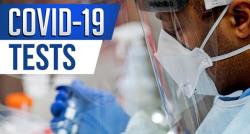 We would be in a more favorable position to limit COVID-19 with a $3 test, providing results in 15 minutes with 70 percent sensitivity, than attempting to limit infection in the face of rising incidence rates using a PCR assay with 98 percent sensitivity, costing $100 and providing results in four to ten days. The antigen detection test can in any event be repeated using PCR assay in a laboratory. The major restraint to adoption will be FDA approval although there are provinsions for emergency and expedited review. The National Institute of Health has funded new technology for point-of-care and laboratory use to the value of $250 million with anticipated introduction in the fourth quarter. The U.S. needs a simple and inexpensive lateral flow antigen test for home use yielding results in less than 30 minutes. We would be in a more favorable position to limit COVID-19 with a $3 test, providing results in 15 minutes with 70 percent sensitivity, than attempting to limit infection in the face of rising incidence rates using a PCR assay with 98 percent sensitivity, costing $100 and providing results in four to ten days. The antigen detection test can in any event be repeated using PCR assay in a laboratory. The major restraint to adoption will be FDA approval although there are provinsions for emergency and expedited review. The National Institute of Health has funded new technology for point-of-care and laboratory use to the value of $250 million with anticipated introduction in the fourth quarter. The U.S. needs a simple and inexpensive lateral flow antigen test for home use yielding results in less than 30 minutes.
|
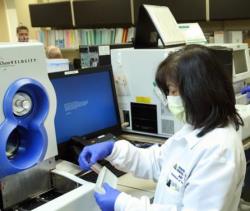
Laboratory-based PCR assays |

|
Request for Compensation by Ethanol Industry Unjustified
|
07/23/2020 |
|
Recently the Renewable Fuels Association representing ethanol producers requested Congress to authorize disbursement of funds from the USDA Commodity Credit Corporation to support the industry.
Dr. Joseph Glauber, previously a Senior Economist with the USDA for over 30 years and now a Senior Research  Fellow at the International Food Policy Research Institute and a Visiting Scholar at the American Enterprise Institute considers that supporting the ethanol industry would be "a bad idea". The industry claims losses as a result of decreased revenue of $7 billion in 2020 attributed to COVID-19. Glauber correctly points out that the major cost input in the production of ethanol is in fact corn, the substrate for fermentation. USDA estimates that decreased ethanol production would correspond to 600 million bushels effectively lowering the price of corn received by farmers. Fellow at the International Food Policy Research Institute and a Visiting Scholar at the American Enterprise Institute considers that supporting the ethanol industry would be "a bad idea". The industry claims losses as a result of decreased revenue of $7 billion in 2020 attributed to COVID-19. Glauber correctly points out that the major cost input in the production of ethanol is in fact corn, the substrate for fermentation. USDA estimates that decreased ethanol production would correspond to 600 million bushels effectively lowering the price of corn received by farmers.
The University of Illinois has calculated that net profit to ethanol producers over the past four years has amounted to 5 cents per gallon. The price of ethanol has fluctuated widely in recent months. On July 17th ethanol was priced at $1.17 per gallon, down 23 cents per gallon from the previous week but higher than the five-year low of $0.92 a gallon on March 26th. During March, approximately 50 percent of ethanol production was off-line, but with increased demand for gasoline, prices for ethanol have risen above the critical “shutdown value”.
|

Dr. Joseph Glauber |
|
Glauber notes that thirty-three ethanol plants received between $25 million and $60 million in Small Business Administration, Paycheck Protection Program grants. Without new legislation, transferring funds from the Commodity Credit Corporation would conflict with the Act chartering the corporation. Funds were intended by Congress to be disbursed to farmers, not for purchasers of agricultural commodities including ethanol producers. Legislation introduced by corn-state senators is intended to reimburse ethanol producers for the value of corn purchased between January 1st and March 31st. Glauber considers this to be preferential treatment since it is not contemplated that grain traders would receive support funds. The intention to subsidize ethanol plants from the Commodity Credit Corporation is construed as an unfortunate precedent and will lead to additional claims and unintended consequences. But what the heck it’s an election year and the grandkids will pay eventually.
|

|
Social Activist Groups File Administrative Complaint with USDA Over COVID-19
|
07/14/2020 |
|
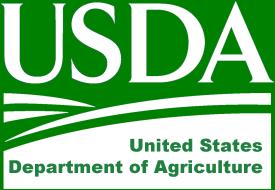 A coalition of activist groups including the Food Chain Workers Alliance, HEAL Food Alliance, and the American Friends Service Committee are represented by Public Justice and Towards Justice in their filing of an administrative complaint with the USDA. This action accuses Tyson Foods and JBS in engaging in racial discrimination during the COVID-19 pandemic, prohibited by the Civil Rights Act. A coalition of activist groups including the Food Chain Workers Alliance, HEAL Food Alliance, and the American Friends Service Committee are represented by Public Justice and Towards Justice in their filing of an administrative complaint with the USDA. This action accuses Tyson Foods and JBS in engaging in racial discrimination during the COVID-19 pandemic, prohibited by the Civil Rights Act.
On March 28th an Executive Order required that all meat-packing and poultry processing plants should reopen and continue to function in accordance with the recommendations of the Centers for Disease Control and Prevention (CDC). The complaint is based on the disproportionate number of Latino, Black, Asian and other minority groups contracting COVID-19 in packing plants operated by Tyson Foods and JBS. It must however be recognized that the groups enumerated represent the majority of line workers in plants. The complaint requests the USDA to refer the apparent discrepancy in incidence rates among minorities to the Department of Justice.
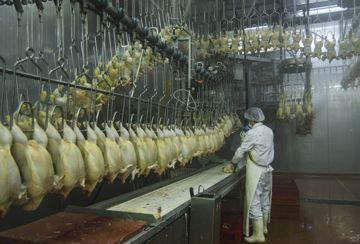 In response to the complaint, the companies concerned have emphasized that measures to prevent both introduction and dissemination of COVID-19 within their facilities were in accordance with the state of knowledge at the time and conformed to CDC recommendations. It is noted that in the early stage of outbreaks in plants, Perdue Farms and Tyson Foods acted on the advice of public health authorities and epidemiologists and proactively implemented protective measures. In response to the complaint, the companies concerned have emphasized that measures to prevent both introduction and dissemination of COVID-19 within their facilities were in accordance with the state of knowledge at the time and conformed to CDC recommendations. It is noted that in the early stage of outbreaks in plants, Perdue Farms and Tyson Foods acted on the advice of public health authorities and epidemiologists and proactively implemented protective measures.
The industry was hampered by a shortage of available PPE, the absence of reliable antigen detection tests and logistic restraints. It is self-evident that the companies concerned together with the rest of the industry relied on employees to optimize function within their plants to sustain the supply chain from farms to consumers. It is presumed that no well-intentioned company would have knowingly or deliberately avoided their responsibilities towards employees or omitted to impose any known effective preventive measure to the detriment of their workers.
The complaint by the consortium addressed to the USDA is yet another example of a meaningless, politically-inspired initiative, devoid of practical benefit to workers. The USDA would be well advised to reject the petition with appropriate justification.

|
USDA-FAS Report on Hog Slaughter in Germany
|
07/12/2020 |
|
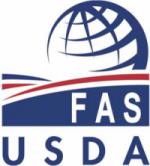 USDA-FAS GAIN report GM2020-0041 released on July 5th examined the effect of COVID-19 on the livestock industry in Germany. The ongoing and severe outbreak of COVID-19 among workers at the Tonnies plant in Gutersloh will have repercussions through the entire industry. The plant in question is the largest hog packing facility in Germany, responsible for approximately one third of pork production, slaughtering seven million hogs in 2019. Fifteen hundred workers at the plant have been diagnosed with COVID-19 resulting in closure since June 19th. The outbreak has resulted in extensive community transmission resulting in a shutdown of the town located in the populous state of North Rhine-Westphalia. USDA-FAS GAIN report GM2020-0041 released on July 5th examined the effect of COVID-19 on the livestock industry in Germany. The ongoing and severe outbreak of COVID-19 among workers at the Tonnies plant in Gutersloh will have repercussions through the entire industry. The plant in question is the largest hog packing facility in Germany, responsible for approximately one third of pork production, slaughtering seven million hogs in 2019. Fifteen hundred workers at the plant have been diagnosed with COVID-19 resulting in closure since June 19th. The outbreak has resulted in extensive community transmission resulting in a shutdown of the town located in the populous state of North Rhine-Westphalia.
|
|
Fallout from the outbreak includes accumulation of hogs on farms requiring transport to other slaughterhouses in Belgium and the Netherlands. Farmers in these nations consign approximately 60,000 hogs for slaughter to Germany each week. Farmers in Ireland are also affected as they rely on the Tonnies plant to slaughter up to half of their sows that are processed into sausages and salami.
Alarmed by the incidence rate in the Gutersloh plant, China has banned pork imports from the entire company. In 2019 Germany exported 0.4 million tons of pork to China valued at $0.9 billion. Germany anticipated that due to African swine fever in China, exports to that nation would double in 2020.
|

Wide scale Testing in Gutersloh due to Covid Outbreak in Tonnies Plant |
No other slaughterhouses have been closed as a result of COVID-19, but infections are continuing in packing plants especially in meat-cutting sections characterized by close proximity among workers exposed to low temperature and high humidity. In the case of the Tonnies plant, the exceptionally high infection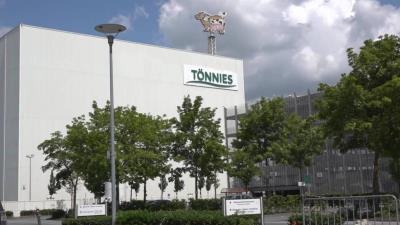 rate was attributed to defects in the HVAC installation that lacked filtration, facilitating the spread of virus similar to the epidemiology of Legionnaires’ disease. Currently the air-cooling system is being updated with installation of UV irradiation and high-efficiency filters. rate was attributed to defects in the HVAC installation that lacked filtration, facilitating the spread of virus similar to the epidemiology of Legionnaires’ disease. Currently the air-cooling system is being updated with installation of UV irradiation and high-efficiency filters.
The outbreak in the Tonnies plant has focused attention on physical conditions in plants and also aspects of both animal and worker welfare. Germany has attempted to impose higher standards than those in operation in the remainder of the EU to achieve a competitive advantage as enjoyed by Denmark.
It is evident that if Germany imposes higher standards in plants additional investment in robotics and other improvements will be required. German packers may lose a competitive edge from introduction of a “German standard" seal as proposed under a Federal voluntary label for pork mainly to promote the image of animal welfare.

|
Environmental Activists Petition USDA Over Disposal of Hog Carcasses
|
07/01/2020 |
|
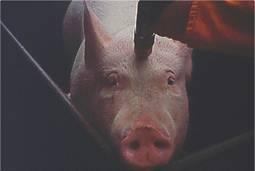 Disruption in hog processing as a result of COVID-19 created the need to euthanize hogs in Iowa and Minnesota. The Natural Resources Defense Council (NRDC) in cooperation with Earthjustice and the Center for Biological Diversity have filed a petition with the Department of Agriculture urging a ban on incineration and mass burial of culled hogs. Disruption in hog processing as a result of COVID-19 created the need to euthanize hogs in Iowa and Minnesota. The Natural Resources Defense Council (NRDC) in cooperation with Earthjustice and the Center for Biological Diversity have filed a petition with the Department of Agriculture urging a ban on incineration and mass burial of culled hogs.
 The petition notes that the environmental justice, public health and conservation organizations, all opposed to intensive livestock production, are concerned that unrestricted, mass-carcass disposal may create imminent and substantial threats to citizens and the environment. The petitioners also played the race card by stating in an irrelevant way "there is a growing body of evidence establishing that communities of color are suffering disproportionally as a result of COVID-19". The petition notes that the environmental justice, public health and conservation organizations, all opposed to intensive livestock production, are concerned that unrestricted, mass-carcass disposal may create imminent and substantial threats to citizens and the environment. The petitioners also played the race card by stating in an irrelevant way "there is a growing body of evidence establishing that communities of color are suffering disproportionally as a result of COVID-19".
An attorney at the NRDC maintained that mass burials and incineration of hog carcasses "are among the most dangerous for human health and present a threat to drinking water". The petitioners also managed to invoke the problems encountered in North Carolina following hurricane Bertha that resulted in overflow from manure lagoons. This event had nothing whatsoever to do with the problem of carcass disposal as a result of euthanasia of hogs.

|
Illegal Importation of Meat Products
|
06/27/2020 |
|
The U.S. is now free of avian influenza and foot and mouth disease and has never been exposed to African swine fever. Introduction of any of these catastrophic diseases alone or in combination would stretch the resources of USDA-APHIS and result in considerable damage to hog, beef and poultry production and the U.S. economy.
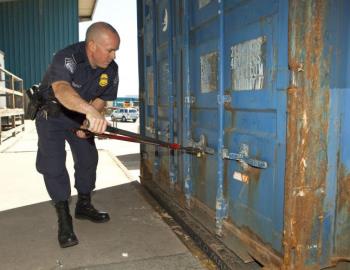 The U.S. along with all industrialized nations has imposed barriers at airports to prevent international travelers introducing raw or potentially contaminated cooked meat products in their luggage. CHICK-NEWS has frequently commented on the need for detection in arrival halls using the ‘Beagle Brigade’. The U.S. along with all industrialized nations has imposed barriers at airports to prevent international travelers introducing raw or potentially contaminated cooked meat products in their luggage. CHICK-NEWS has frequently commented on the need for detection in arrival halls using the ‘Beagle Brigade’.
A second route of entry is illegal importation of commercial quantities of prohibited pork, chicken, beef and duck products from China. From April through early June of the current year, specialist assigned to the U.S. Customs and Border Protection Service intercepted close to 10 tons of prohibited meat items at the Long Beach Seaport. Smuggling was deliberate with products intermingled among a wide range of manufactured goods. Twelve shipments comprising 834 cartons were seized. The larger concern is how many illegal consignments were missed given the volume of smuggling that occurs. During the first five months of fiscal 2020 interception of contraband meats increased by 70 percent compared with the corresponding period in fiscal 2019.
Demand for exotic products from China by U.S. residents is driving this trade. Legislation is needed to impose heavy penalties on importers. Seizure and destruction at port of entry is an inadequate response.
The potential damage caused by contaminated meat products is illustrated by the foot and mouth outbreak in Great Britain twenty years ago. Illegally imported meat contaminated with virus was used 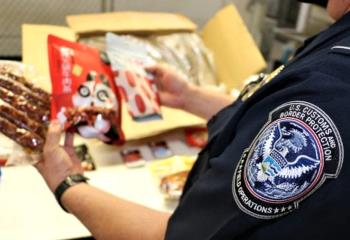 to prepare dishes at an ethnic restaurant located in Newcastle on Tyne. Swill from the restaurant was fed to backyard hogs resulting in an infection that took over a year to eradicate and even involved an extension to France. Given that African swine fever is endemic in China, and that ASF virus has been isolated from pork products smuggled by travelers to Australia, Thailand and Taiwan, the likelihood of commercial shipments introducing disease is highly likely. to prepare dishes at an ethnic restaurant located in Newcastle on Tyne. Swill from the restaurant was fed to backyard hogs resulting in an infection that took over a year to eradicate and even involved an extension to France. Given that African swine fever is endemic in China, and that ASF virus has been isolated from pork products smuggled by travelers to Australia, Thailand and Taiwan, the likelihood of commercial shipments introducing disease is highly likely.
Following the adage that an ounce of prevention is worth a pound of cure, allocation of resources for detection and interdiction coupled with severe penalties for those illegally importing meat products should be intensified.

|
China Chicken Statistics
|
06/17/2020 |
|
 According to USDA-FAS GAIN Report CH2020-0040, dated March 27th, production of chicken in China will attain 15.750 million metric tons (34,650 million pounds). Total imports will attain 675,000 metric tons or four percent of total supply. The USDA estimates that for 2020 imports will increase by 16 percent over 2019. Exports are relatively small representing 2.2 percent of total supply. Accepting a population of 1.4 billion, per capita consumption in China is 11.5 kg (25.3 pounds). According to USDA-FAS GAIN Report CH2020-0040, dated March 27th, production of chicken in China will attain 15.750 million metric tons (34,650 million pounds). Total imports will attain 675,000 metric tons or four percent of total supply. The USDA estimates that for 2020 imports will increase by 16 percent over 2019. Exports are relatively small representing 2.2 percent of total supply. Accepting a population of 1.4 billion, per capita consumption in China is 11.5 kg (25.3 pounds).
Pork is the principal animal protein comprising 65 percent of the total consumed. This is followed by poultry at 45 percent, beef, six percent and other species, four percent. The consumption of chicken is sub-divided among conventional white broilers at 45 percent, traditional “yellow birds” at 30 percent and a hybrid between conventional broilers and traditional birds termed “817” now comprising 15 percent. Culled hens producing eggs represent ten percent of chicken consumption. It must be remembered that in China ducks are consumed in both rural and urban areas. In addition to chicken 3 to 4 million metric tons of duck and other poultry is consumed annually.
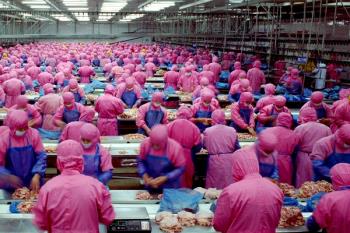 The advent of African swine fever reduced the supply of pork possibly by as much as 25 percent although herds are being slowly rebuilt and processed pork from the EU and the U.S. is now supplementing domestic production. The effect of African swine fever is noted by an estimated 35 percent decrease in domestic production from 2018 through 2020. The advent of African swine fever reduced the supply of pork possibly by as much as 25 percent although herds are being slowly rebuilt and processed pork from the EU and the U.S. is now supplementing domestic production. The effect of African swine fever is noted by an estimated 35 percent decrease in domestic production from 2018 through 2020.
In November 2019 the embargo on U.S.-origin poultry products imposed during the HPAI outbreak in 2015 was lifted in accordance with the General Administration of Customs of China Announcement #177. Although shipments to China were impacted by port congestion and transport disruption arising from COVID-19 during the first quarter, during the first four months of 2020 the U.S. exported poultry products amounting to 99,875 metric tons valued at $143.9 million. This represented an 8.5 percent of volume and 11.8 percent of value exported but with a unit price of $1,440 per ton. Although China ranked second among importers of broiler parts and feet combined over the first third of 2020, it is noted that the volume shipped to Hong Kong declined over the same period by almost half so the net export gain for the U.S. from China was effectively 57,309 metric tons of mixed parts and feet. The U.S. was indirectly supplying China after the 2015 embargo through a grey market channel from Hong Kong to the mainland.
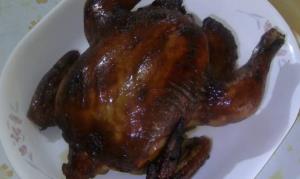 Factors that will influence exports to China include government policy on tariffs, availability of pork and the ability of the U.S. to supply products consistent with consumer requirements. As of March 2020, tariffs comprising 35 percent on average, plus a weight-based duty have priced muscle cuts out of the market. Tariff exclusions have since been applied to U.S. products allowing some importers to be granted an exemption from Section 301 retaliatory tariffs. According to the USDA, the most popular products include livers, feet and some frozen chicken cuts. Traditional U.S. exports comprising leg quarters will not have a strong competitive advantage over domestic chicken and imports from Brazil and the E.U. Importers favor U.S. feet, in addition to wings and wing tips that are used in snack foods. Factors that will influence exports to China include government policy on tariffs, availability of pork and the ability of the U.S. to supply products consistent with consumer requirements. As of March 2020, tariffs comprising 35 percent on average, plus a weight-based duty have priced muscle cuts out of the market. Tariff exclusions have since been applied to U.S. products allowing some importers to be granted an exemption from Section 301 retaliatory tariffs. According to the USDA, the most popular products include livers, feet and some frozen chicken cuts. Traditional U.S. exports comprising leg quarters will not have a strong competitive advantage over domestic chicken and imports from Brazil and the E.U. Importers favor U.S. feet, in addition to wings and wing tips that are used in snack foods.
Currently Brazil is the dominant exporter to China with approximately 75 percent of the market in 2019 amounting to 450 tons. Argentine and Thailand shipped approximately 60,000 and 50,000 tons respectively.
Before the U.S. industry regards China as an immediate and vast market the realities should be considered both with respect to product mix and potential export volumes.

|
Unions Press for More Aggressive Prevention of COVID-19
|
06/14/2020 |
|
 Appearing before the House Oversight and Reform Committee, the president of the United Food and Commercial Workers Union (UFCW) drew comparisons between progressive meat-packing and supermarket stores and those that apparently have less regard for the health and well-being of their workers. Appearing before the House Oversight and Reform Committee, the president of the United Food and Commercial Workers Union (UFCW) drew comparisons between progressive meat-packing and supermarket stores and those that apparently have less regard for the health and well-being of their workers.
|
The UFCW represents meat-packing, grocery, food-processing, healthcare, retail and senior care workers. Two hundred and twenty-five members of the Union have died of COVID-19 with more than 28,000 testing positive for the infection. Anthony Perrone UFCW President, called for job protection, two weeks of paid sick leave and firm enforcement of COVID-19 precautions at all plants under the jurisdiction of the Occupational Safety and Health Administration.
It is calculated that close to 25,000 employees of meat-packing and poultry-processing plants have tested positive and 86 fatalities have been attributed to the infection. The UFCW was joined in the appearance before the House Committee by representatives of the American Federation of Government Employees, representing FSIS inspectors. The failure of FSIS to provide their inspectorate with appropriate PPE in the early stages of the infection resulted in a number of cases of COVID-19 and two fatalities. AFGE called for greater spacing on lines for inspectors and slower line speeds.
|
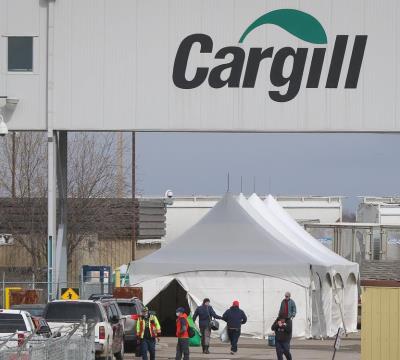
Testing Plant Employees |
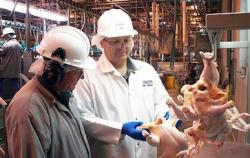
Pre-Covid times |
In evidence presented before the committee Perrone specifically complemented Cargill and Safeway for their proactive approach to COVID-19 protection and compared the efforts of these companies to late responses, lack of transparency and deficiencies demonstrated by Amazon, JBS, Walmart and Kroger. From the perspective of news reports, Tyson Foods and Perdue led the industry in addressing the challenges of COVID-19 by providing workers with protection and releasing the results of testing for the presence of the infection. |

|
EPA Administrator Faces Pressure from Competing Interests over Waivers
|
06/02/2020 |
|
At a recent Senate Environment and Public Works Committee, EPA Administrator Andrew Wheeler stated “We are looking to see what relief we can provide everyone.” Both ethanol producers and petroleum refiners are under pressure given the profound drop in consumption of fuels as a result of COVID-19 restrictions. During April, ethanol production fell to a volume in the low 20 million gallons per day range, although there was a rise through mid-May to 27 million gallons per day compared to a regular 40 gallons per day.
Senators representing oil-producing states have petitioned the EPA for waivers covering the renewable fuel standard that can be allowed if severe economic conditions exist, such as at the present time. Naturally corn-state senators are opposed to waivers and in addition are considering legislation to support the ethanol industry that is operating at approximately 60 percent of capacity.
|

|
|

Oil Refinery
|
The House passed a Coronavirus Bill in mid-May allowing payment to ethanol producers forced to shut plants for at least one month during the first quarter. These plants would qualify for a payment of 45 cents per gallon based on half of the volume they produced during the corresponding month of 2019. In terms of a bill filed jointly by Senators Chuck Grassley [R-IA.] and Amy Klobuchar [D-MN,], the USDA would reimburse biofuel producers for 70 percent of their outlay on feedstock with corn in the case of ethanol and soybean oil for biodiesel. |
| The sharp drop in demand for gasoline obviously impacts ethanol producers and indirectly corn growers. The present situation obviously highlights the fact that biofuels are nonviable without mandates and federal support. It is instructive to remember that initiation of biofuels, almost two decades ago, was based on the need to be independent of foreign supplies of energy. Since this time, the U.S. has achieved more than parity through additional domestic supplies of natural gas and oil. The biofuels program converting food to fuel is an anachronism and now serves as an indirect tax on all who eat and drive. |
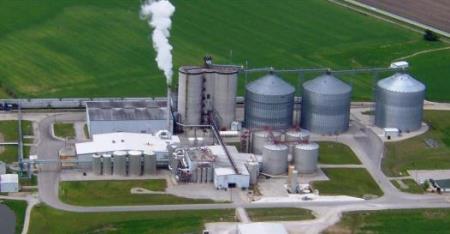
Ethanol Plant |

|
Robots Are Immune to COVID-19
|
05/31/2020 |
|
 A recent article in Wired by Eve Sneider documented the low prevalence rate of COVID-19 among workers at the Danish Crown hog plant in Horsens, Denmark. Less than ten workers have tested positive for SARS-CoV-2 among 8,000 employees in all Danish Crown facilities. There have been no interruptions in processing, and production rates were maintained throughout the first quarter. A recent article in Wired by Eve Sneider documented the low prevalence rate of COVID-19 among workers at the Danish Crown hog plant in Horsens, Denmark. Less than ten workers have tested positive for SARS-CoV-2 among 8,000 employees in all Danish Crown facilities. There have been no interruptions in processing, and production rates were maintained throughout the first quarter.
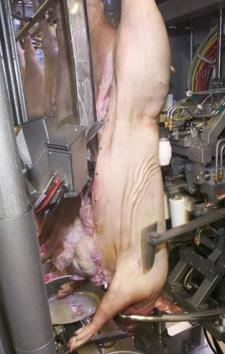 Management attributes the low infection rate both in their plants and in the surrounding communities to early lockdown and to the extensive use of robotics and mechanization in processing. The Horsens plant is the most modern in the world using infrared laser-guided robots to make cuts including the critical “tail cut” that extirpates the terminal intestinal tract to avoid fecal contamination. A series of laser and machine-vision guided robots continues dismemberment, completing the tasks that would otherwise be carried out by workers, allowing the plant to processes 18,000 hogs per eight-hour shift. Management attributes the low infection rate both in their plants and in the surrounding communities to early lockdown and to the extensive use of robotics and mechanization in processing. The Horsens plant is the most modern in the world using infrared laser-guided robots to make cuts including the critical “tail cut” that extirpates the terminal intestinal tract to avoid fecal contamination. A series of laser and machine-vision guided robots continues dismemberment, completing the tasks that would otherwise be carried out by workers, allowing the plant to processes 18,000 hogs per eight-hour shift.
It is inevitable that robotics will have to be incorporated into processing lines in U.S. plants placing less reliance on workers and allowing appropriate distancing. Both in the red meat and chicken industries, considerable capital will be required to replace manual workers. Events over the past three months have demonstrated the vulnerability of packing plants to reduced labor availability. Plants are the fragile link in the supply chain extending from farms to retail.
COVID-19 spreads rapidly within plants given the proximity of workers in both first processing and deboning. Modern EU chicken plants and those erected in Eastern Europe and the Middle East during the past decade incorporate mechanization, robotics and advanced processing technology compared to U.S. facilities located in southern states. Design of U.S. plants and their equipment is predicated on the availability of relatively inexpensive labor. European producers do not have the luxury of an infinite supply of workers even though temporary immigrant labor is used in some nations.
 The capital investment required to mechanize processing will have to be passed on to consumers. Given the disruptions in supply during March and April with depleted supermarket cases, consumers will have to accept increases in price to ensure a steady supply of wholesome meat products. The capital investment required to mechanize processing will have to be passed on to consumers. Given the disruptions in supply during March and April with depleted supermarket cases, consumers will have to accept increases in price to ensure a steady supply of wholesome meat products.
An added justification for mechanization and the installation of robots is the reality that packing plants are a source of infection for local communities. This is clearly demonstrated by prevalence rates in rural counties where a large plant is located. Workers in plants equipped with advanced mechanical installations will have appropriate skills, commanding higher wage rates that will be reflected in more acceptable accommodation obviating domestic overcrowding. This factor contributes to relatively high prevalence rates in communities attributed to infection acquired and spread among low-paid immigrant workers performing repetitive manual labor.
It is axiomatic that robots are refractory to disease, do not take holidays or sick leave, never participate in strikes or agitate to join unions and have immense physical strength and dexterity compared to human labor. It is unfortunate that it has taken COVID-19 to force a re-evaluation of the human component and available alternatives in meat processing. COVID-19 will not be the last viral pandemic and this reality should evoke changes taking us beyond The Jungle of Upton Sinclair.

|
Presidential Comment over Cattle Imports Generates Concern and Criticism
|
05/21/2020 |
|
In a White House ceremony announcing the Coronavirus Food Assistant Program (CFAP) the President questioned the desirability allowing importation of live cattle in the U.S. and instructed the Secretary of Agriculture, Dr. Sonny Perdue to terminate trade deals allowing live cattle to be imported into the U.S., presumably at the expense of domestic farmers.
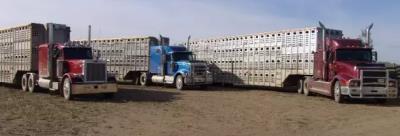 Live cattle are only imported from Canada and Mexico and are allowed in terms of the USMCA only recently ratified. Imports of cattle on the hoof are necessary to stabilize supplies and markets and have functioned to the benefit of the U.S. and our neighbors for many decades. Live cattle are only imported from Canada and Mexico and are allowed in terms of the USMCA only recently ratified. Imports of cattle on the hoof are necessary to stabilize supplies and markets and have functioned to the benefit of the U.S. and our neighbors for many decades.
Marty Smith, President of the U.S. National Cattlemen’s Beef Association commented, “this was something I wish the President had not said.” Export of 1.2 million head from Mexico to the U.S. in 2019 was more than balanced by exports of processed beef back to Mexico. Forcing Mexico to retain slaughter stock will lead to expansion of their domestic packing capability ultimately to the detriment of the U.S. and farmers over whom the President is apparently so concerned.
 A number of economists at Land Grant universities have pointed to the benefits of integral and mutually beneficial trade agreements that are supported by the Canadian Cattlemen’s Association and the Mexican Cattle Confederation. A number of economists at Land Grant universities have pointed to the benefits of integral and mutually beneficial trade agreements that are supported by the Canadian Cattlemen’s Association and the Mexican Cattle Confederation.
In the interest of regular trade and avoiding contentious and illegal bans, it is hoped that the presidential comment was off-the-cuff remark and is not indicative of a change in U.S. trade policy which would be a contravention of the USMCA.

|
Reopening U.S. Packing Plants: Political Expediency or Economic Necessity?
|
05/13/2020 |
|
Following the Presidential Executive Order on April 28th directing meat plants to continue operation during the COVID pandemic, Secretary of Agriculture Dr. Sonny Perdue predicted that 85 percent of capacity will be online during the second week of May. Fourteen beef, pork and poultry plants have resumed operations after shutdowns to reconfigure lines, test workers and to carry out decontamination.
The prerequisite for reopening plants was that they should 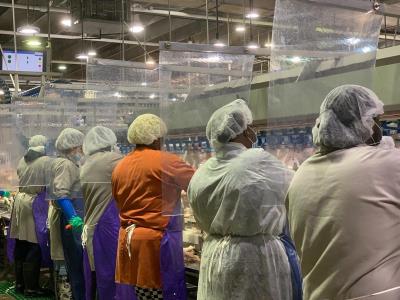 conform to the CDC standards indicating best production practices to prevent transmission of COVID-19 within facilities. It must be noted that there is considerable interaction between plants and the community with respect to transmission. Epidemiologic evidence demonstrates that there is a close correlation between the prevalence rate in a plant and in the surrounding community affecting the prevalence of COVID-19 in a specific rural county with a large facility. Notwithstanding the CDC and OSHA regulations, it appears that considerable latitude has been extended to plants in imposition of protective measures. With the stated waiver of responsibility, uniform adoption of the CDC requirements and monitoring conformity by OSHA will be a difficult task. conform to the CDC standards indicating best production practices to prevent transmission of COVID-19 within facilities. It must be noted that there is considerable interaction between plants and the community with respect to transmission. Epidemiologic evidence demonstrates that there is a close correlation between the prevalence rate in a plant and in the surrounding community affecting the prevalence of COVID-19 in a specific rural county with a large facility. Notwithstanding the CDC and OSHA regulations, it appears that considerable latitude has been extended to plants in imposition of protective measures. With the stated waiver of responsibility, uniform adoption of the CDC requirements and monitoring conformity by OSHA will be a difficult task.
Although plants can be reopened, they still require personnel to operate equipment and maintain production. It is estimated the beef and pork plants operated at 75 percent of capacity during the first week in May up from 65 percent the previous week.
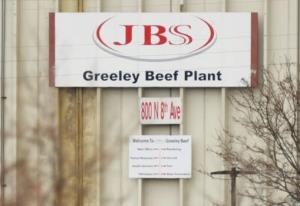 The United Food and Commercial Workers Union (UFCW) representing 250,000 workers is demanding comprehensive testing for the presence of SARS-CoV-2, the virus responsible for COVID-19 among plant employees. The United Food and Commercial Workers Union (UFCW) representing 250,000 workers is demanding comprehensive testing for the presence of SARS-CoV-2, the virus responsible for COVID-19 among plant employees.
Mark Perrone, President of the UFCW stated, "the rush by the Trump Administration to reopen fourteen meat packing plants without the urgent safety improvements needed is a reckless move that will put American lives at risk and further endanger the long-term security of our Nation's food supply". The UFCW is requiring frequent testing of workers, availability of protective equipment and distancing, even on lines. Perrone noted "the administration has failed to take urgent action needed to enact cleaning and enforceable safety standards at these meat packing plants".
Secretary Perdue expects that meat production will be back to normal during the third week of May. It is apparent that the Administration regards restoration of meat supply both for the domestic market and for exports to be both a political and economic necessity.
Re-establishing production through meat packing plants should alleviate the need to euthanize hogs, relieving farmers of a considerable financial burden with losses for live hogs sold at $60 to $100 per head. Cattle have accumulated in feedlots with a negative impact through the entire chain from cow-calf operations forwards.
From weekly broiler chick placement data released by the USDA and posted on CHICK-NEWS in the weekly Broiler Volume and Price Report, it would appear that production is trending back to normal levels. Some plants are operating at a lower capacity due to absenteeism associated with either COVID infection or fear of contracting the disease. Both turkey and broiler production were less impacted than in the red meat industry with fewer disruptions. Adequate supplies of both chicken and turkey appeared in supermarkets from mid-May onwards.
Poultry plants affected by COVID-19 included:-
- Tyson Foods, Robards KY. Reopened after cleaning
- Empire Kosher. Mifflintown, PA. Reopened late April after Passover break.
- Sanderson Farms, Moultrie, GA. Reduced production through early May
- Jennie-O Turkey Store, Wilmar, MN. One plant closed for cleaning. Benson Rd. Wilmar plant and Melrose, MN. plant now operational.
- Miller Poultry, Orland, IN. Operational after cleaning and testing employees for COVID-19.
- Tyson Foods, Shelbyville, TN. Reopened late April after cleaning
- Mountaire Farms, Siler City, NC. No disruption in production following a few diagnoses of COVID-19.
- Fieldale Farms, Cornelia, GA. Few cases identified among workers.
- Butterball Inc. Winston-Salem, NC. Few case identified in late April.
- West Liberty Foods, West Liberty, IA. Reopened mid-April after cleaning and testing workers.

|
COVID-19 Incidence Rates in Packing Plants an Opportunity for Epidemiologic Studies
|
05/10/2020 |
|
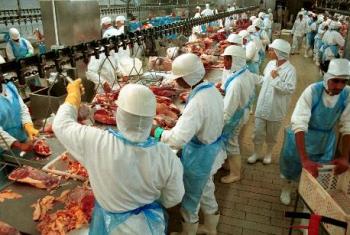 As with cruise ships, certain packing plants have recorded higher levels of COVID-19 infection among workers compared with other plants for reasons that are not clearly defined. Certainly when we have reached "the other side" and stability in the meat and poultry industries has been restored, studies can be conducted that will define the relative role of processing plants, the community, worker housing, commuting and other risk factors contributing to infection. As with cruise ships, certain packing plants have recorded higher levels of COVID-19 infection among workers compared with other plants for reasons that are not clearly defined. Certainly when we have reached "the other side" and stability in the meat and poultry industries has been restored, studies can be conducted that will define the relative role of processing plants, the community, worker housing, commuting and other risk factors contributing to infection.
Clearly there should be a focus on the JBS plant in Greeley, CO. This plant recorded 280 diagnosed infections with seven fatalities. It is considered critical that extensive testing for the presence of SARS-CoV-2 virus responsible for COVID-19 should be carried out following re-opening of the facility. This will enable plant management to identify both asymptomatic and symptomatic carriers so that they and their contacts can be quarantined. Subsequently the presence of antibodies can be determined by serologic assays, providing valuable information on the temporal and spatial level of exposure of workers and their families.
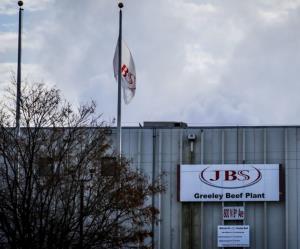 It is apparent that there were conflicts between JBS management and the Weld County and Colorado State health officials. Colorado Governor Jared Polis stated that the management of the plant promised to test employees but failed to follow through. A spokesperson for the Weld County Public Health Department stated "JBS officials backed away from an initial plan to test all employees and decided to close the plant after a warning was issued on April 10th, reopening at the end of April". It is apparent that there were conflicts between JBS management and the Weld County and Colorado State health officials. Colorado Governor Jared Polis stated that the management of the plant promised to test employees but failed to follow through. A spokesperson for the Weld County Public Health Department stated "JBS officials backed away from an initial plan to test all employees and decided to close the plant after a warning was issued on April 10th, reopening at the end of April".
Governor Polis recently stated, "to be clear, if JBS is willing to test all employees we would be happy to work with them on making sure they have the supplies to do that". He added "we can't just go on their premises and test people, that’s why we did it a mile away".
Since the first diagnosed case in Colorado at the beginning of March, the state has recorded 17,800 diagnosed cases with 921 fatalities for a rate of 5.2 percent that is similar to the U.S. apparent fatality rate of 6 percent based on 73,000 deaths resulting from 1.2 million cases. The actual number of cases and actual fatalities since March are presumably far higher than those diagnosed given the dearth of antigen testing and deficiencies in determining the cause of death since the beginning of the outbreak.

|
Constraints limiting Hog Euthanasia and Plant Re-opening
|
05/04/2020 |
|
 The JBS USA plant in Worthington, MN., currently inactive, will be opened this week to euthanize mature hogs according to House Agriculture Committee chairman Rep. Colin Peterson (D-MN). The plant with a daily capacity of 20,000 hogs believes it can kill 13,000 daily with a crew of ten. The backlog of hogs on all U.S. Farms is growing at a rate of 160,000 per day as a significant proportion of hog-packing capacity is closed. Governor Kim Reynolds of Iowa has joined the National Pork Producers Council to request aid for hog farmers from Congress. The $1.6 billion from the USDA coronavirus allocation is obviously inadequate given the magnitude of the problem caused by plant closings. The JBS USA plant in Worthington, MN., currently inactive, will be opened this week to euthanize mature hogs according to House Agriculture Committee chairman Rep. Colin Peterson (D-MN). The plant with a daily capacity of 20,000 hogs believes it can kill 13,000 daily with a crew of ten. The backlog of hogs on all U.S. Farms is growing at a rate of 160,000 per day as a significant proportion of hog-packing capacity is closed. Governor Kim Reynolds of Iowa has joined the National Pork Producers Council to request aid for hog farmers from Congress. The $1.6 billion from the USDA coronavirus allocation is obviously inadequate given the magnitude of the problem caused by plant closings.
Despite the Presidential Executive Order to reopen plants, now regarded as “critical infrastructure,” workers will still have to be available and willing to report for duty. The Executive Order requires that operators of plants adhere to CDC guidelines regarding COVID-19 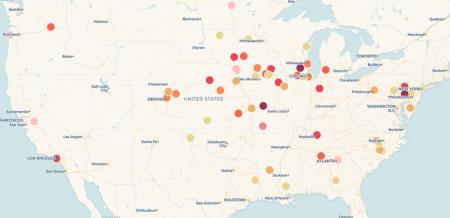 protection. Some workers have refused to return to plants based on perceptions of insecurity and susceptibility to infection. The Executive Order indemnifies plant owners from any claim resulting from COVID-19, and apparently negates both state and local decisions to close plants, irrespective of risk to workers and the community at large. protection. Some workers have refused to return to plants based on perceptions of insecurity and susceptibility to infection. The Executive Order indemnifies plant owners from any claim resulting from COVID-19, and apparently negates both state and local decisions to close plants, irrespective of risk to workers and the community at large.
The legality of the order issued in terms of the Defense Production Act has yet to be challenged in court.
Representative Cindy Axne (D-IA) stated, “Iowa’s agriculture economy including its packing plants is critical to the state and to feeding the country and the world.” She added, “keeping them running during COVID-19 means we need to first and foremost keep our workers safe and healthy. Any requirement from an employer or from federal authorities for employees to keep  coming coming 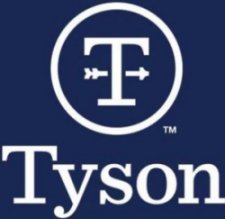 to work needs to be accompanied by iron-clad answers on what protections will be in place including PPE, social distancing with routine testing and inspection.” to work needs to be accompanied by iron-clad answers on what protections will be in place including PPE, social distancing with routine testing and inspection.”
Marc Perrone of the United Food and Commercial Workers representing 250,000 employees in the meat industry stated, “While we share the concern over the food supply, today’s Executive Order to force meat packing plants to stay open must put the safety of our country’s meat packing workers first.” He added, “Simply put, we cannot have a secure food supply without the safety of these workers.”
The extent of infection in plants is illustrated by the Smithfield Foods, Sioux Falls, SD pork plant with 853 confirmed infections out of 3,700 employees. Due to the lack of additional antigen (virus)  testing and the non-availability of serologic assays, the actual number of individuals infected and those that have recovered following asymptomatic infection is unknown. Reliable data is considered critical to making rational decisions on when plants can reopen and the effectiveness of preventive measures. testing and the non-availability of serologic assays, the actual number of individuals infected and those that have recovered following asymptomatic infection is unknown. Reliable data is considered critical to making rational decisions on when plants can reopen and the effectiveness of preventive measures.

|
Post COVID Investigations of “Big Four” Packers Inevitable
|
05/01/2020 |
|
COVID-19 has focused attention on the dominance of hog and beef packing represented by the “Big Four” comprising Tyson Foods, Smithfield Foods, JBS USA and Cargill. Activist group R-CALF USA has lobbied Congress and the President to investigate "whether physical and geographic restructuring of the meatpacking industry is required to disaggregate and decentralize beef processing capacity”. Problems emerged follow a fire in a Tyson Foods Kansas packing plant that impacted farmers shipping cattle from grassland and feedlots in 2019.
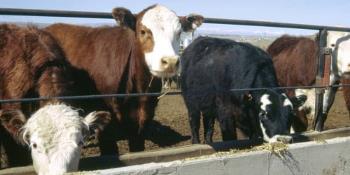 The current disruption of both pork and beef production due to COVID-19 has generated concern among legislators representing cattle and hog-producing states. This is reflected in the retail food sector facing shortages and interruptions in supply, extending to consumers. Rationing has commenced in military commissaries and will surely spread to the retail market. The current disruption of both pork and beef production due to COVID-19 has generated concern among legislators representing cattle and hog-producing states. This is reflected in the retail food sector facing shortages and interruptions in supply, extending to consumers. Rationing has commenced in military commissaries and will surely spread to the retail market.
There is probably no concerted plan among the four major packers to in any way collude to rig the market. Unfortunately, in the pursuit of efficiency and economies of scale, large plants are increasingly responsible for packing a larger proportion of hogs and beef cattle raised.
COVID-19 emerged as a black swan and, in all probability, could not have been foreseen even in early 2020 following emergence in China. Inputs into plants such as water, power and labor were taken for granted until the advent of COVID-19. Unfortunately, in the absence of an effective vaccine there can be no assurance that labor will be available at a reasonable cost or that previously projected production levels will be maintained in the intermediate future irrespective of Executive Orders.
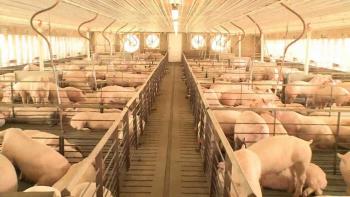 In contrasting the red meat and chicken industries it is evident that integration has facilitated both long term planning and the response to COVID-19 among as many as 20 top producers representing 90 percent of chicken production. Apart from the lower prevalence of the infection among workers in poultry plants compared to hog and beef plants (with the exception of one Georgia county) chicken integrators are able to adjust more rapidly to challenges represented by disease among workers and changes in the marketplace. It remains to be seen how the large hog integration in Oklahoma is impacted by COVID-19 compared to industry peers that are not integrated. In contrasting the red meat and chicken industries it is evident that integration has facilitated both long term planning and the response to COVID-19 among as many as 20 top producers representing 90 percent of chicken production. Apart from the lower prevalence of the infection among workers in poultry plants compared to hog and beef plants (with the exception of one Georgia county) chicken integrators are able to adjust more rapidly to challenges represented by disease among workers and changes in the marketplace. It remains to be seen how the large hog integration in Oklahoma is impacted by COVID-19 compared to industry peers that are not integrated.
It is clear that when the immediate COVID-19 emergency is resolved, irrespective of what Administration is in control in 2021, there will be Congressional, USDA, DOJ and DOC investigations into the structure of the red meat industry and interactions among the major companies. This will re-visit the Town Hall style meetings arranged jointly by the USDA and DOJ under the Obama Administration leading to an order in terms of GIPSA.

|
Smithfield Foods Neglect Contributed to COVID-19 Plant Closures
|
04/29/2020 |
|
 A lawsuit was filed in Missouri Federal Court claiming Smithfield Foods provided inadequate protective equipment to workers at their Milan, MO. facility. Additional allegations include discouraging workers from taking sick leave and insufficient hand-washing facilities and personal protective gear. A lawsuit was filed in Missouri Federal Court claiming Smithfield Foods provided inadequate protective equipment to workers at their Milan, MO. facility. Additional allegations include discouraging workers from taking sick leave and insufficient hand-washing facilities and personal protective gear.
The Rural Community Workers Alliance a labor advocacy group noted "workers, their family members and many others who live in Milan and in the border community may die, - all because Smithfield refused to change its practices in the face of the pandemic". A separate lawsuit brought on behalf of an employee at the Milan plant seeks a court order enforcing Smithfield to comply with current CDC guidelines to prevent COVID-19. These cases may be moot given the Executive Order indemnifying packers against claims. The directive does however require plants to comply with CDC guidelines to protect workers from infection.
|
Last week CHICK-NEWS reported on the results of a CDC evaluation of the Sioux Falls, SD. plant recently closed as a result of more than two hundred diagnosed cases of COVID-19. This facility is responsible for producing five percent of U.S. pork. In a memorandum, Keira Lombardo, Executive Vice President, Cooperate Affairs and Compliance Smithfield replied to the issues raised by CDC. Smithfield claim that COVID-19 is ubiquitous across the U.S. and that it is believed that community spread occurred in the area of operation of the Sioux Falls plant before the condition appeared among workers. Unfortunately, there are insufficient results of antigen testing and serologic assays to support this contention.
|
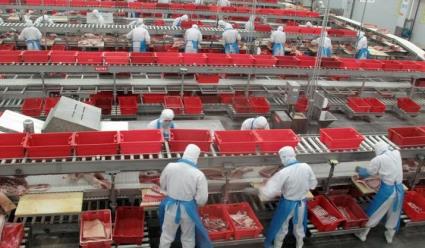
Workers at a WH Group Plant in China |
 An important conclusion and consequential recommendation by CDC was that Smithfield should communicate with workers concerning precautions to be taken to prevent COVID-19 in the languages as understood by workers. Smithfield maintains that it "regularly communicates in multiple languages, verbally in videos and in print including iconography, e-mails and on the company intranet. This is at variance with the CDC investigation. An important conclusion and consequential recommendation by CDC was that Smithfield should communicate with workers concerning precautions to be taken to prevent COVID-19 in the languages as understood by workers. Smithfield maintains that it "regularly communicates in multiple languages, verbally in videos and in print including iconography, e-mails and on the company intranet. This is at variance with the CDC investigation.
The memorandum attempts to justify company policy with regard to personal protective equipment. The Company claimed it was following CDC guidelines. Unfortunately, the CDC has "wobbled" over the need for masks and eye protection since April 3rd. At this time the advice provided was that masks were unnecessary in "agriculture", presumably in fields and barns and not in packing plants where social distancing is difficult to achieve. The CDC later amended recommendations, acknowledging the need to protect workers. When the April 3rd CDC recommendations were released there was an absolute shortage of masks, gowns, gloves, and other equipment and clearly the Agency had no idea of the close proximity of workers in meat packing and poultry processing plants.
Common sense based on a knowledge of the transmissibility of the virus should have been recognized by management of Smithfield that employed 40,000 in forty facilities throughout the U.S. When Smithfield was obliged to provide masks, the short supply situation became evident. In her self-exculpatory statement Ms. Lombardo opined that "it is not standard practice in the industry for employees to wear masks let alone face shields". She is referred to images of plants in China operated by the parent company of Smithfield Foods, the WH Group, depicting workers with smocks and head covering extended over the nose and mouth. Apart from recognizing the need to supply protective equipment, and recognizing their non-availability in the U.S., the parent company in China should have recognized its obligation to workers and airfreighted masks and other protective equipment apparently available in China to the U.S. After all the Patriots team located and transported masks in their own jet for first responders and hospital personnel in Boston and other Massachusetts cities in mid-March. Smithfield should have been more worker-oriented and made use of their parent company in China to anticipate problems and respond proactively. Hand-wringing is no substitute for hand-washing!

|
COVID-19 May Slow Home Delivery of Groceries and Food
|
04/14/2020 |
|
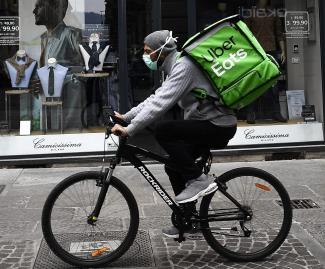 With home confinement impacting 95 percent of the U.S. population, delivery services offered by Amazon Prime and Walmart among others and food delivery by gig workers have replaced frequent visits to supermarkets and restaurants. To date the frequency of deliveries and reliability has softened the restrictions followed by compliant citizens. With home confinement impacting 95 percent of the U.S. population, delivery services offered by Amazon Prime and Walmart among others and food delivery by gig workers have replaced frequent visits to supermarkets and restaurants. To date the frequency of deliveries and reliability has softened the restrictions followed by compliant citizens.
As the U.S. apparently reaches a peak in incident cases through mid-April, reports of outbreaks of COVID in distribution and fulfillment centers and among delivery workers are surfacing. Wired recently reported on extremely variable compliance with widely publicized CDC guidance to limit infection in the workplace. Recent articles in the media indicate neglect of separation, failure to screen workers for elevated temperature or signs of infection and failure to provide protective clothing, masks and facilities to decontaminate hands.
If COVID-19 spreads among workers in distribution and fulfillment centers and if food delivery workers become infected the Nation's supply of food will be affected. At present, red meat and poultry plants are functioning at less than capacity due to labor shortages. Some companies have closed plants with threats that supplies of meat might be imperiled. Unfortunately, many workers in food  production, processing and distribution have little in the way of financial reserves and feel obliged to clock-in even if they feel ill thereby compromising the health of coworkers. In addition, it is now well established that individuals can be asymptomatic shedders of SARS-CoV-2 virus further contributing to infection in work situations where close contact is required. production, processing and distribution have little in the way of financial reserves and feel obliged to clock-in even if they feel ill thereby compromising the health of coworkers. In addition, it is now well established that individuals can be asymptomatic shedders of SARS-CoV-2 virus further contributing to infection in work situations where close contact is required.
Until a safe and effective vaccine is deployed, employers are obliged to implement as many of the CDC recommendations as are applicable to suppress infection. This applies to Mom and Pop stores as well as the World’s leading companies such as Walmart and Amazon.

|
Allen-Harim to Depopulate Growing Broilers
|
04/13/2020 |
|
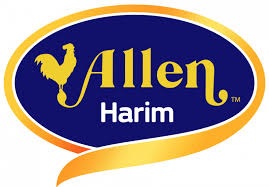 According to news reports including Delmarva ABC-Affiliate Channel 47, Allen-Harim will depopulate approximately 1.5 million broilers in succeeding weeks. This action results from a slow rate of processing due to a claimed 50 percent absenteeism at the major Allen-Harim 1st-processing plant. The company contracts with 220 farmers who were informed of the intended action by letter on April 8th. Allen-Harim has also reduced egg settings and chick placements although the result will only be evident in six and ten weeks time respectively. According to news reports including Delmarva ABC-Affiliate Channel 47, Allen-Harim will depopulate approximately 1.5 million broilers in succeeding weeks. This action results from a slow rate of processing due to a claimed 50 percent absenteeism at the major Allen-Harim 1st-processing plant. The company contracts with 220 farmers who were informed of the intended action by letter on April 8th. Allen-Harim has also reduced egg settings and chick placements although the result will only be evident in six and ten weeks time respectively.
Spokespersons for Perdue Farms, Mountaire Farms and Tyson Foods operating on the Eastern Shore have emphasized that they have no plans to depopulate in the immediate future.
Allen-Harim is ranked 19th among U.S. broiler integrators and processes approximately 1.6 million birds per week at an average live weight of 6.2lbs.
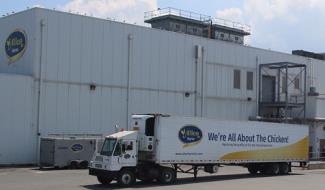 The announcement elicited the usual condemnation of intensive livestock production by organizations including the Socially Responsible Agricultural Project. The spokesperson for the organization, Maria Payan noted without substantiation "this vertical system does not have the ability to respond efficiently. We are seeing problems from the growers; workers being protected and impacts on public health and the environment". Ms. Payan fails to acknowledge that the integrator-contractor model has provided a secure livelihood to Delmarva growers over at least eight decades and they will not suffer during this transitory event. The announcement elicited the usual condemnation of intensive livestock production by organizations including the Socially Responsible Agricultural Project. The spokesperson for the organization, Maria Payan noted without substantiation "this vertical system does not have the ability to respond efficiently. We are seeing problems from the growers; workers being protected and impacts on public health and the environment". Ms. Payan fails to acknowledge that the integrator-contractor model has provided a secure livelihood to Delmarva growers over at least eight decades and they will not suffer during this transitory event.
A constant critic of vertical integration, Craig Watts, an aggrieved ex-grower for Perdue noted "disposal of birds may present problem for growers. He commented "the highly consolidated meat supply chain is vulnerable to major disruptions". On balance it appears that inability to process broilers in barns is less an industry problem but results from circumstances inherent to Allan-Harim. A claimed 50 percent reduction of a workforce of approximately 1,000 plant workers due to COVID-19 implies 500 cases. This far exceeds published prevalence rates for any other U.S. red meat or poultry plant or even the Diamond Princess. It is presumed that the inevitable emergence of COVID-19 has exacerbated underlying worker disaffection over protection, pay or communication.
Allen-Harim has indicated that it will compensate growers, but there is no indication of the method to be used for disposal of dead birds or which party will bear costs.
The National Chicken Council has urged the USDA to make available funds to compensate growers for COVID-19 associated losses. It is expected that integrators will stand by their contracts at considerable expense.

|
WTO Develops Alternative Arbitration Strategy
|
04/01/2020 |
|
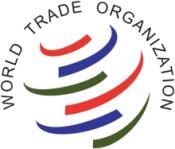 The current U.S. Administration refuses to approve new candidates to be appointed to the World Trade Association (WTO), Appeals Arbitration Board, based on allegations of bias in past decisions. Accordingly the World Trade Organization has established a Multiparty Interim Appeal Arbitration Board. Participants in the initiative comprise 45 nations including the EU as a group in addition to Australia, Brazil, Canada, China, New Zealand among others in Asia and Latin America. The current U.S. Administration refuses to approve new candidates to be appointed to the World Trade Association (WTO), Appeals Arbitration Board, based on allegations of bias in past decisions. Accordingly the World Trade Organization has established a Multiparty Interim Appeal Arbitration Board. Participants in the initiative comprise 45 nations including the EU as a group in addition to Australia, Brazil, Canada, China, New Zealand among others in Asia and Latin America.
The EU Commissioner for Trade stated "this is a stop-gap measure to reflect the temporary paralysis of the WTO appeal function for trade disputes. This agreement bears testimony to the conviction held by the EU and many other member countries of the WTO that in times of crisis working together is a productive option.
The Multiparty Interim Appeal Arbitration Arrangement will become active within weeks following agreement on procedures.
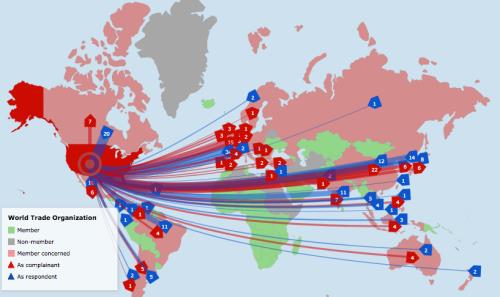
This action by the WTO effectively sidesteps the U.S. and demonstrates the decline in power of the World's largest economy to influence international trade policy and represents both isolationism and a failure in diplomacy.

|
Commissioner Chopra of the FTC Comments on Proposed Packers and Stockyards Act Rule
|
03/22/2020 |
|
 Rohit Chopra, Commissioner of the Federal Trade Commission addressed a comment to USDA Secretary of Agriculture Dr. Sonny Purdue regarding the proposed rules to amend the Packers and Stockyards Act. Chopra stated the Act “was modeled after provisions in the Federal Trade Commission Act and other anti-trust laws to ensure that powerful meat packers and processors could not take advantage of family farmers through unfair trade practices.” Chopra maintains that the rules do not support these objectives and will allow potential abuses to continue. Rohit Chopra, Commissioner of the Federal Trade Commission addressed a comment to USDA Secretary of Agriculture Dr. Sonny Purdue regarding the proposed rules to amend the Packers and Stockyards Act. Chopra stated the Act “was modeled after provisions in the Federal Trade Commission Act and other anti-trust laws to ensure that powerful meat packers and processors could not take advantage of family farmers through unfair trade practices.” Chopra maintains that the rules do not support these objectives and will allow potential abuses to continue.
Whether justified or not Chopra stated “vertical integration and concentration has turned the animal supply chain into a series of choke points used by Big Meat to coerce farmers and ranchers into accepting terrible terms for the price of participation”
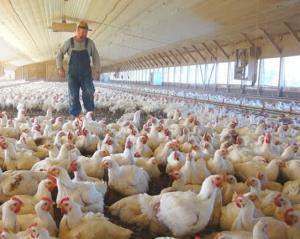 CHICK-NEWS takes exception to the statement by Commissioner Chopra that “growers take on all of the risks and have little to show for it.” CHICK-NEWS takes exception to the statement by Commissioner Chopra that “growers take on all of the risks and have little to show for it.”
In the U.S. broiler-production industry the relationship between contract growers and integrators has evolved over six decades and is mutually beneficial to both parties. Effectively risk is born by the integrators who supply chicks and feed and carry the potential losses associated with disease, inclement weather and market fluctuations. Contractors have no concerns over logistics or marketing and can integrate flock management with other employment or farm enterprises.
 The fact that there are more aspirant growers than can be accommodated by the chicken industry confirms that the grower-integrator system is equitable and mutually beneficial. Lincoln Premium Poultry was able to contract with growers for breeding and broiler production for their new complex in Nebraska indicating the acceptability of the system. The fact that there are more aspirant growers than can be accommodated by the chicken industry confirms that the grower-integrator system is equitable and mutually beneficial. Lincoln Premium Poultry was able to contract with growers for breeding and broiler production for their new complex in Nebraska indicating the acceptability of the system.
There may be abuse or manipulation in beef or pork production but there is no recent evidence of exploitation in the chicken and turkey industries.

|
Minnesota Bill to Fund Regenerative Chicken Production Wasteful Expenditure
|
03/04/2020 |
|
A bill introduced into the Minnesota legislature would provide $250,000 in grants to the Regenerative Agricultural Alliance to conduct a feasibility study on production of poultry applying regenerative principles. The Alliance claims that 100 farmers are producing 250,000 chickens annually, feeding locally-grown grains under free-range conditions.
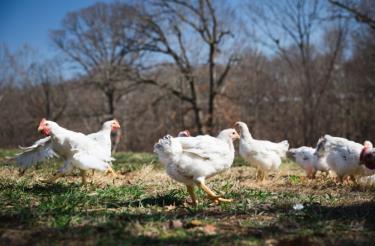 The proposal flies in the face of both biological reality and economics. The intent to produce 1.2 million chickens a year and to fund a processing plant would represent a waste of resources, starting with the allocation of funds for a feasibility study. The questionable viability of a free-range regenerative project could be calculated in an hour with a pencil and calculator given realistic production parameters including live weight, feed conversion, input costs and value of product. $250,000 sounds like pork! The proposal flies in the face of both biological reality and economics. The intent to produce 1.2 million chickens a year and to fund a processing plant would represent a waste of resources, starting with the allocation of funds for a feasibility study. The questionable viability of a free-range regenerative project could be calculated in an hour with a pencil and calculator given realistic production parameters including live weight, feed conversion, input costs and value of product. $250,000 sounds like pork!
Promoters of the scheme are reminded of the losses sustained by West Liberty Foods in funding a free-range broiler operation intended to satisfy an apparent demand for slow-growing, non-confined broilers.
Subsistence, regenerative agriculture, represents a fad appealing to a limited market and simply cannot compete with commercial production based on inherent inefficiency.
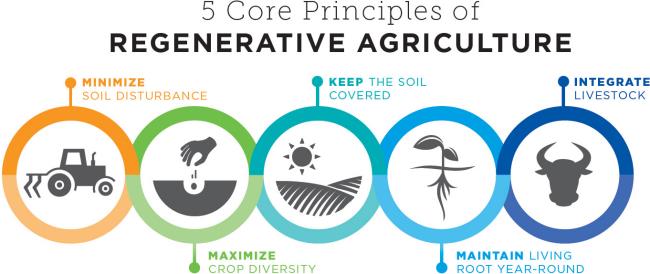

|
Survey Reveals Attitudes Toward Plant-Based Meat Substitutes
|
03/03/2020 |
|
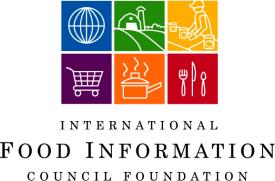 The International Food Information Council Foundation released a survey on January 30th conducted in late December involving approximately 1,000 interviews conducted on U.S. adults. The study included a variety of ethnic groups representative of the U.S. population. The International Food Information Council Foundation released a survey on January 30th conducted in late December involving approximately 1,000 interviews conducted on U.S. adults. The study included a variety of ethnic groups representative of the U.S. population.
Half of the respondents indicated that they had eaten a plant-alternative to animal meat during the immediate past. This group included 62 percent under 45 years of age with an equivalent proportion who had attended college. Approximately 21 percent of Hispanics had not tried a vegetable-based meat substitute, based on lack of awareness. In contrast only four percent of African Americans and three percent of Whites reported that they were unaware of plant-based meat substitutes.
 Contrary to hype on the internet and mainstream media, taste and price were the most important motivators. Health and environmental concerns did not materially influence food purchasing decisions. Respondents were apparently driven in large measure by curiosity to try plant-based products. Other motivators included trying to eat less meat (27 percent), environmental degradation (27 percent) and welfare (26 percent). Contrary to hype on the internet and mainstream media, taste and price were the most important motivators. Health and environmental concerns did not materially influence food purchasing decisions. Respondents were apparently driven in large measure by curiosity to try plant-based products. Other motivators included trying to eat less meat (27 percent), environmental degradation (27 percent) and welfare (26 percent).
When questioned why half of respondents had not consumed a plant-based meat substitute, 31 percent considered that these products would not taste as good as meat and nine percent were concerned over extreme processing. It is considered significant that 15 percent of respondents did not believe that plant-alternatives were superior from a health perspective to meat and 14 percent considered the plant-based alternatives as too expensive. A significant 11 percent of respondents discounted the claimed environmental benefits.
An interesting distribution within the sample of 1,000 revealed that 60 percent considered themselves as omnivores, six percent vegetarians, five percent vegans and five percent pescatarians. There is no indication of where the survey was conducted but the combination of vegetarians and vegans at 11 percent of the sample population appears extremely high compared to other survey data.
The results of the survey as posted in the February 4th edition of Baking Business confirmed a frequently-noted observation that there is a strong curiosity factor associated with plant-based meat alternatives. Commercial advertising by producers of alternatives, QSRs and web-based publicity emphasizes environmental benefits, animal welfare and health. Enigmatically these apparent attributes did not resonate with the consumers surveyed.
It is highly unlikely that the trajectory in growth and consumption over the past two years will be maintained. It is expected that demand will plateau unless manufacturers can apply economies of scale to reduce price in addition to improving taste and texture. These are evidently motivators to stimulate the purchase plant-based meat alternatives and to establish a loyal clientele.

|
National Cattleman's Beef Association Concerned Over Importation of Beef from Brazil
|
02/28/2020 |
|
The USDA has reopened the market in the U.S. to Brazilian beef according to statements by the Secretary of Agriculture for Brazil, Tereza Cristina Dias. In 2017, importation of fresh beef from Brazil was terminated as health and safety defects were noted in product attributed to inadequate inspection and allegations of bribery of inspectors and irregular documentation.
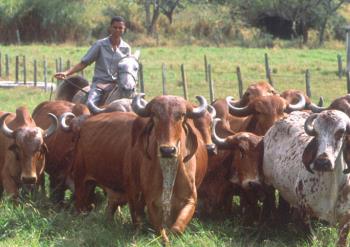 Brazil has apparently satisfied requirements imposed by USDA and domestic suppliers will now face competition from imported Brazilian beef. Brazil has apparently satisfied requirements imposed by USDA and domestic suppliers will now face competition from imported Brazilian beef.
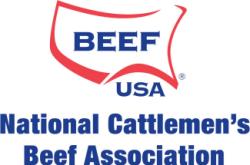 The National Cattleman's Beef Association (NCBA) released a statement on Monday February 24th noting that the organization supports "science-based trade". The NCBA expressed concerns over importation of Brazilian beef based on past history including outbreaks of foot-and-mouth disease and defective inspection. The National Cattleman's Beef Association (NCBA) released a statement on Monday February 24th noting that the organization supports "science-based trade". The NCBA expressed concerns over importation of Brazilian beef based on past history including outbreaks of foot-and-mouth disease and defective inspection.
The statement issued by Kent Bacus, Senior Director, International Trade and Market Access noted "should Brazil continue to have food safety or animal health issues, we expect the U.S. Government including Capitol Hill to take all necessary and immediate action to protect U.S. consumers and U.S. beef producers.
Not even a veiled threat.

|
China Bans Trade and Consumption of Non-Domestic Animals
|
02/28/2020 |
|
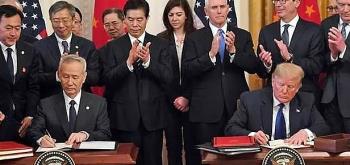 In late January, CHICK-NEWS published an editorial entitled "Bizarre Food Preferences in China Contribute to Emerging Disease." The editorial referenced the preoccupation in China with exotic animals to produce traditional “medicines” and a desire to consume nontraditional food species especially among the affluent. In late January, CHICK-NEWS published an editorial entitled "Bizarre Food Preferences in China Contribute to Emerging Disease." The editorial referenced the preoccupation in China with exotic animals to produce traditional “medicines” and a desire to consume nontraditional food species especially among the affluent.
During the week of February 24th, the Central Government announced through the official news agency Xinhua, that legislation would be passed to ban the trade and consumption of wild animals following a temporary suspension imposed in January.
Zhang Tiewei a spokesperson for the Legislative Affairs Commission of China stated "there has been a growing concern among people over the consumption of wild animals and the hidden dangers it brings to public health security since the novel coronavirus disease (COVID-19) outbreak”.
|
In traditional centrally-planned "officialspeak" illegal consumption and trade of wildlife will be severely punished as will be hunting, trading, maintaining or transporting wild animals for the purposes of food consumption. The use of wild animals for non-edible purposes including scientific research, medical use and display will be subject to strict control, approval and quarantine inspection.
This “medical use” proviso keeps the door open for trade in organs and extracts from wild animals used in traditional Chinese medicine. At least the trade in donkey, dog, deer, crocodile and other exotic meats will be controlled. Experience has shown that if demand persists, the price for these products will rise and an illegal and clandestine market will develop with or without acquiescence by corrupt officials. We shall see how effective the Beijing imperative is obeyed in the far Provinces.
|

Brazil shipping soy to China |

|
GM Cowpea Cultivar Approved in Nigeria
|
02/06/2020 |
|
Africa has been reluctant to embrace GM technology in part due to misleading and deceptive statements and influence by organizations, such as Greenpeace and others, opposed to the introduction of GM cultivars. Africa is especially susceptible to drought, insect predation, and other problems which could be partly resolved by using GM varieties of food crops.
Cotton expressing Bt, a natural insecticide, has been 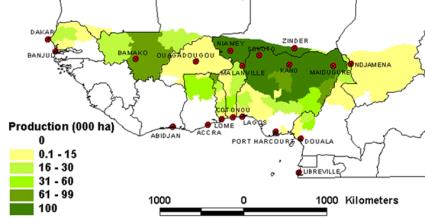 adopted in the U.S., India, and Egypt. The cowpea (‘Black-eyed Susan’ in the U.S.) strain Sampea 20-T is the first food crop to be approved in Africa. The cowpea a an important source of protein and energy for over 200 million people in West Africa. Unfortunately, importation is required because up to 90 percent of the domestic crop can be destroyed by a pest, the the cowpea pod borer. adopted in the U.S., India, and Egypt. The cowpea (‘Black-eyed Susan’ in the U.S.) strain Sampea 20-T is the first food crop to be approved in Africa. The cowpea a an important source of protein and energy for over 200 million people in West Africa. Unfortunately, importation is required because up to 90 percent of the domestic crop can be destroyed by a pest, the the cowpea pod borer.
Sampea 20-T was developed by the African Agricultural Foundation using technology provided by CSIRO of Australia. Other participants in the project included USAID, the Rockefeller Institute, and the Danforth Plant Science Center. Bayer will distribute the cultivar to family farms as a humanitarian gesture.
It is hoped that the success of Sampea 20-T will convince leaders in othe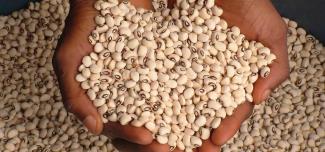 r African nations that GM crops resistant to pests benefit both farmers and consumers. It is noted that a combination of stubborness and ignorance prevented donations of U.S. corn to drought-stricken nations in Sub-Saharan Africa. Aid shipments were refused based on the unsubstantiated fear of GM ingredients. Citizens in Malawi and Zambia starved as a result of the mischievous intervention of activists in Western Europe who disseminate falsehoods regarding GM crops while secure in their own availability of food. r African nations that GM crops resistant to pests benefit both farmers and consumers. It is noted that a combination of stubborness and ignorance prevented donations of U.S. corn to drought-stricken nations in Sub-Saharan Africa. Aid shipments were refused based on the unsubstantiated fear of GM ingredients. Citizens in Malawi and Zambia starved as a result of the mischievous intervention of activists in Western Europe who disseminate falsehoods regarding GM crops while secure in their own availability of food.

|
U.S. Farmers Will Benefit From Phase-One Agreement Only if China Actually Imports Commodities In Compliance With Their Obligations
|
02/03/2020 |
|
 In a Des Moines Register guest editorial Sen. Charles Grassley, (R-IA), opined that the Phase-One deal is "welcome news" for Iowa farmers who have been impacted by the trade war with China initiated in 2018. Whether farmers will be made whole over and above the $31 billion in Market Facilitation Program support disbursed through 2019 remains to be seen. Soybean futures certainly do not reflect the optimism of politicians and White House advisors. Actual shipments, not promises or orders will demonstrate the commitment of China to trade agreements that invariably “get lost in translation” We should not be surprised if any day now China will invoke the outbreak of In a Des Moines Register guest editorial Sen. Charles Grassley, (R-IA), opined that the Phase-One deal is "welcome news" for Iowa farmers who have been impacted by the trade war with China initiated in 2018. Whether farmers will be made whole over and above the $31 billion in Market Facilitation Program support disbursed through 2019 remains to be seen. Soybean futures certainly do not reflect the optimism of politicians and White House advisors. Actual shipments, not promises or orders will demonstrate the commitment of China to trade agreements that invariably “get lost in translation” We should not be surprised if any day now China will invoke the outbreak of 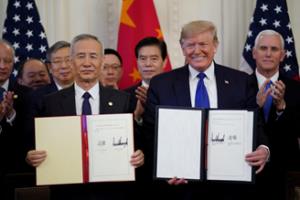 coronavirus as a justification to delay imports of U.S. commodities while they continue to buy from Latin America. Trade wars are not easy to win nor are they short in duration. coronavirus as a justification to delay imports of U.S. commodities while they continue to buy from Latin America. Trade wars are not easy to win nor are they short in duration.
Sen. Grassley correctly maintains that the recently signed USMCA "opens the barn for farmers and workers all along the food supply chain”. Essentially with respect to grains and soybeans there is no specific benefit from the USMCA over NAFTA. Dairy farmers and other sectors of the economy may gain from the re-negotiated agreement but Canada is maintaining production-supply controls with respect to poultry excluding U.S. producers from free-market competition.

|
Memphis Meats Raises $160 Million to Commercialize Cell-Cultured Meat
|
01/22/2020 |
|
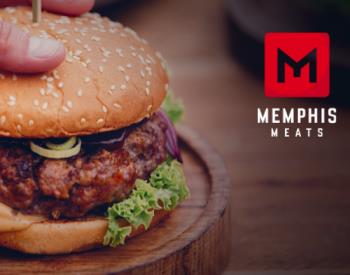 Memphis Meats successfully completed a Series B funding round raising $160 million. Proceeds will be used to scale-up preliminary laboratory production of cell-cultured meat based on previous funding of $20 million. Memphis Meats successfully completed a Series B funding round raising $160 million. Proceeds will be used to scale-up preliminary laboratory production of cell-cultured meat based on previous funding of $20 million.
According to the company release, investors include Richard Branson, Bill Gates, Threshold Ventures, Cargill, Tyson Foods and others led by the SoftBank Group and Temasek. Dr. Uma Valeti, co-founder and CEO of Memphis Meats stated “we are excited to welcome these investors into our big tent.” She added “Memphis Meats is revolutionizing how meat is brought to every table around the world.”
It is hoped that the investors have carefully evaluated the prospectus for financial and technical feasibility. Overhanging issues relate to regulatory approval, standards and labeling with U.S. jurisdiction split between the USDA and the FDA.
The challenge facing Memphis Meats and other developers of cell-cultured products will be competition from vegetable alternatives that can be classified as vegan and presumably can be marketed at the same price as conventional meat, if not at a lower price. There is no indication that magnitude of scale will reduce the cost from laboratory-cultured samples to anywhere near an acceptable market price. The second unknown is how producers will be able to maintain quality and consistency when extending from laboratories to commercial-scale bioreactors.
Clearly this is a work in progress, but Memphis Meats appears to be a leader in the field, has excellent technology and apparently has the support of investors. The livestock industry looks forward to seeing what $160 million invested brings to the table within a three-year period.
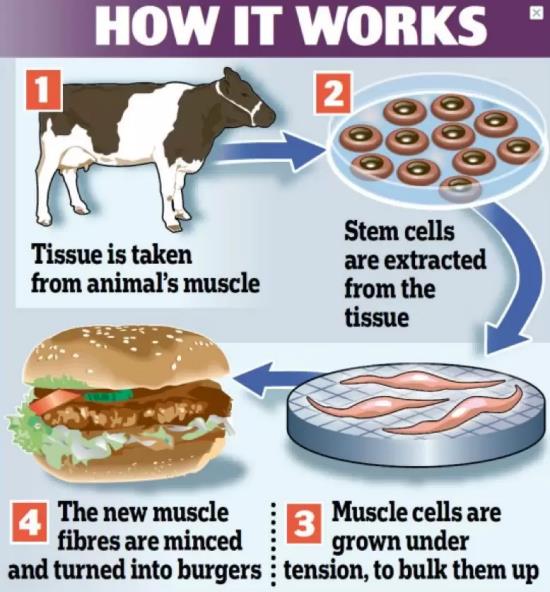

|
CEO of Impossible Foods Criticizes Meat Industry
|
01/21/2020 |
|
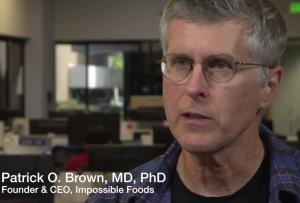 Dr. Patrick O. Brown strongly criticized the conventional meat industry on the grounds of sustainability. He described meat production as “the most destructive technology on earth by far.” This is clear hyperbole since the used of coal to generate electrical power is far more injurious to the environment than beef production. According to the EPA all cattle including dairy animals are responsible for two percent of greenhouse gas emissions. Our transport infrastructure comprising aircraft, trains and road vehicles burn hydrocarbon fuels. Even much vaunted electric autos derive their power in the U.S. in large measure from coal-fired power plants. Dr. Patrick O. Brown strongly criticized the conventional meat industry on the grounds of sustainability. He described meat production as “the most destructive technology on earth by far.” This is clear hyperbole since the used of coal to generate electrical power is far more injurious to the environment than beef production. According to the EPA all cattle including dairy animals are responsible for two percent of greenhouse gas emissions. Our transport infrastructure comprising aircraft, trains and road vehicles burn hydrocarbon fuels. Even much vaunted electric autos derive their power in the U.S. in large measure from coal-fired power plants.
Brown who has earned both MD and PHD degrees and is a distinguished geneticist in his own right, should be more responsible and scientifically accurate in his public statements. Although his products have been accepted as alternatives to beef over the short term, his strident condemnation suggests either a degree of concern for the future of his industry and company or an expression of his environmental zealotry. Despite the inordinate and adulatory publicity extended to Impossible Foods and competitor Beyond Meat, their actual share of the protein market is small and the claimed double-digit growth rate is off a very small base. Impossible Foods is currently privately held and Beyond Meat is enjoying a market honeymoon after a meteoric rise from the IPO price. The Company trades at a nose-bleed P/E and neither Impossible Foods nor Beyond Meat have really experienced competition from multinationals such as Cargill and Nestle in addition to numerous me-too companies including Maple Leaf Foods.
Dr. Brown may be an extremely capable entrepreneur but he sounds eerily familiar to Josh Tetrick who promised to displace hens in producing eggs over ten years ago. Since then (unfortunately for margins!) hen numbers have increased and consumers are enjoying nutritious eggs and egg products at exceptionally low prices.

|
Relationship of Live Weight and Value of Jumbo Boneless Breasts
|
01/20/2020 |
|
 Dyla Dyla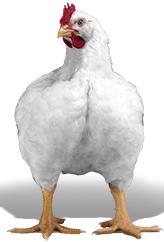 n Hughes of Urner Barry recently published a review of the interrelationship of average live weight and jumbo boneless breast values from 2010 to 2020. Over the period 2010 to late 2016, live weight increased from 5.6 to 6.1 pounds. During these five years jumbo boneless breast values ranged from an initial $1.01 per pound to $1.25 per pound with brief peaks in mid-2013 and 2014 but tracked live weight. n Hughes of Urner Barry recently published a review of the interrelationship of average live weight and jumbo boneless breast values from 2010 to 2020. Over the period 2010 to late 2016, live weight increased from 5.6 to 6.1 pounds. During these five years jumbo boneless breast values ranged from an initial $1.01 per pound to $1.25 per pound with brief peaks in mid-2013 and 2014 but tracked live weight.
In 2017, a deviat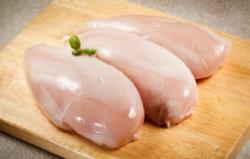 ion became apparent. As live weight increased from 6.1 pounds to 6.3 pounds, boneless breast values declined from $1.60 to $0.75. The difference in value is attributed to increased supply, but with a disproportionate reduction in demand based on the size of jumbo boneless breasts for food service, QSRs and domestic consumption. ion became apparent. As live weight increased from 6.1 pounds to 6.3 pounds, boneless breast values declined from $1.60 to $0.75. The difference in value is attributed to increased supply, but with a disproportionate reduction in demand based on the size of jumbo boneless breasts for food service, QSRs and domestic consumption.
|
Wild Boars Responsible for Dissemination of African Swine Fever
|
01/20/2020 |
|
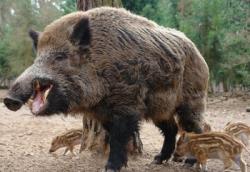 Eastern European Nations including Romania, Bulgaria, Ukraine and Poland are at risk of more extensive dissemination of African swine fever (ASF) spread by large populations of wild boars. The infection was recently diagnosed in non-commercial hogs in Serbia and this has created concern in Hungary that has a significant commercial hog industry. Germany recently increased security when ASF virus was isolated from wild boars within 20 miles of the eastern border with Poland. Eastern European Nations including Romania, Bulgaria, Ukraine and Poland are at risk of more extensive dissemination of African swine fever (ASF) spread by large populations of wild boars. The infection was recently diagnosed in non-commercial hogs in Serbia and this has created concern in Hungary that has a significant commercial hog industry. Germany recently increased security when ASF virus was isolated from wild boars within 20 miles of the eastern border with Poland.
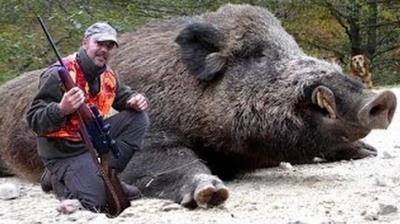 CHICK-NEWS has frequently commented of the vulnerability of the U.S. in the event of introduction of ASF as a result of large populations of wild hogs in Gulf states. In recognition of the danger represented by these destructive animals, state game departments and the USDA should intensify efforts to reduce populations concurrently with efforts to prevent introduction of virus carried on pork products from nations where the infection is endemic. CHICK-NEWS has frequently commented of the vulnerability of the U.S. in the event of introduction of ASF as a result of large populations of wild hogs in Gulf states. In recognition of the danger represented by these destructive animals, state game departments and the USDA should intensify efforts to reduce populations concurrently with efforts to prevent introduction of virus carried on pork products from nations where the infection is endemic.
|
Pork Producers Experience Negative Publicity From CBS 60 Minutes Airing
|
01/09/2020 |
|
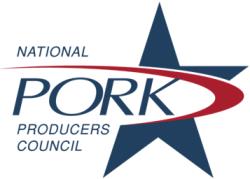 The pork industry was the recipient of negative publicity on the influential CBS 60 Minutes program that aired on Sunday, January 5th. The segment dealt with antibiotic-resistant pathogens associated with pork. Dr. Lance Price, a microbiologist afilliated to George Washington University, Department of Environmental and Occupational Health and who serves as the Director of the Antibiotic Resistance Action Center was a persuasive advocate for restricting administration of antibiotics to livestock. In his interview he was given the opportunity to expound at length on drug resistance and the role of antibiotics, with specific emphasis on pork production. The pork industry was the recipient of negative publicity on the influential CBS 60 Minutes program that aired on Sunday, January 5th. The segment dealt with antibiotic-resistant pathogens associated with pork. Dr. Lance Price, a microbiologist afilliated to George Washington University, Department of Environmental and Occupational Health and who serves as the Director of the Antibiotic Resistance Action Center was a persuasive advocate for restricting administration of antibiotics to livestock. In his interview he was given the opportunity to expound at length on drug resistance and the role of antibiotics, with specific emphasis on pork production.
Dr. Liz Wagstrom, Chief Veterinarian for The National Pork Producers Council (NPPC), defended the position of her industry. It is apparent from a statement subsequently released by the NPPC that her contribution was heavily edited with a wide disparity in the length of her interview with Lesley Stahl and the duration and content of her contribution to the program aired. So why are they surprised?
 Whether due to editing by CBS or the current philosophy prevailing in the hog industry, Dr. Wagstrom had a difficult time responding to questions justifying the use of antibiotics. What came across as a decidedly defensive approach centered on denying access to farms to health professionals. She “justified” the exclusion citing the consideration of biosecurity. This is a frequently raised defense of doubtful merit. If biosecurity is an important practice in the industry, visitors should be able, subject to decontamination, to enter facilities housing growing hogs. Scientists not having had contact with any livestock or swine pathogens for at least five days are no danger to a herd if they pass through a biosecurity module to disrobe, shower and don farm-provided personal protective clothing. To deny access to responsible media and public health authorities on the grounds of “biosecurity” creates the impression of obstruction and lack of transparency, inviting suspicion and confirming the worst condemnation of “factory farming” depicted on social media. Whether due to editing by CBS or the current philosophy prevailing in the hog industry, Dr. Wagstrom had a difficult time responding to questions justifying the use of antibiotics. What came across as a decidedly defensive approach centered on denying access to farms to health professionals. She “justified” the exclusion citing the consideration of biosecurity. This is a frequently raised defense of doubtful merit. If biosecurity is an important practice in the industry, visitors should be able, subject to decontamination, to enter facilities housing growing hogs. Scientists not having had contact with any livestock or swine pathogens for at least five days are no danger to a herd if they pass through a biosecurity module to disrobe, shower and don farm-provided personal protective clothing. To deny access to responsible media and public health authorities on the grounds of “biosecurity” creates the impression of obstruction and lack of transparency, inviting suspicion and confirming the worst condemnation of “factory farming” depicted on social media.
Producers of the CBS program erred in not stating that since 2017, routine administration of antibiotics for the purposes of growth promotion ceased in accordance with FDA Industry Guidance. The 60 Minutes program created the perception that this practice continues.
The program represents a number of lessons for the broiler industry. Both with respect to welfare and food safety, it is more beneficial to be proactive than reactive. Although the NCC and USPOULTRY have produced positive videos depicting welfare on farms and have promoted the image of the industry on social media, more can be done to establish rapport with mainstream news and entertainment outlets. Spokespersons for industry associations require training in presentation and should develop the ability to respond positively to questioning by professional interviewers.
The National Pork Producers Council has experienced a ten-year conflict in the media over gestation crates, that are still being defended as a rearguard action. This is despite replacement of confinemnent by the major hog integrators in response to customer and consumer demands. The sentiments expressed by Dr. Wagstrom towards antibiotics reflect an opinion which prevailed in the broiler industry over five years ago. The dependency on antibiotics has now been dispelled by science and practice.
We will continue to face criticism from “big media”. As far as they are concerned, programs that purport to expose a problem, real or spurious and that create anxiety among consumers, generate more eyeballs than topics which are bland and non-controversial. Remember “pink slime”?

|
Wayne Pacelle Actively Soliciting Funds for Animal Wellness Action
|
01/05/2020 |
|
 Recently EGG-NEWS reported on the reemergence of Wayne Pacelle and his newfound affiliation with Animal Wellness Action (AWS). The tone of initial web postings by this organization in soliciting funds suggests that the organization is focused on companion animals and opposed game fowl and dog fighting. Recently EGG-NEWS reported on the reemergence of Wayne Pacelle and his newfound affiliation with Animal Wellness Action (AWS). The tone of initial web postings by this organization in soliciting funds suggests that the organization is focused on companion animals and opposed game fowl and dog fighting.
In his New Year’s Day request for AWS funding, Pacelle emphasizes “When it comes to life, as to experience, animals are not so different from us.” This is classic anthropomorphism designed to pluck at the heart-strings of potential donors. A later sentence in his appeal is however more sinister stating “that means sparing animals from human torments whether they are in the name of sport, science or food.” The ‘food’ reference is of concern since Pacelle as president of the Humane Society of the United States (HSUS) moved the organization progressively in an avowedly pro-vegan direction.
The obvious inference from a review of the Animal Welfare Action website and mission statement and the most recent appeals under the signature of Pacelle suggest that he may have influenced the West Coast founders of the organization to his philosophy and objectives. He has probably convinced them of the value of his political contacts in Washington and his proven fundraising ability. His purpose as it appears to this commentator will be to use the AWS as a vehicle to divert the mission of the organization to oppose intensive livestock production.
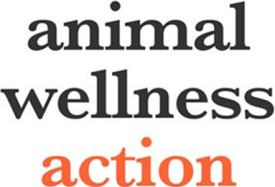 The apparent modus operandi of Pacelle completely parallels his tenure at HSUS. He used sentiment derived from companion animals to raise funds be used for lobbying activities directed against meat and poultry production. He is reapplying the formula with the added fillip of animal-fighting to harvest donations. The apparent modus operandi of Pacelle completely parallels his tenure at HSUS. He used sentiment derived from companion animals to raise funds be used for lobbying activities directed against meat and poultry production. He is reapplying the formula with the added fillip of animal-fighting to harvest donations.
Pacelle has a persuasive personality and through his fundraising activities will probably engender the respect and gratitude of the Board of Animal Wellness Action over the short term. It will probably take some time before the shift in objectives has taken place but by this time Pacelle would have entrenched himself into a position of strength using Animal Wellness Action as a vehicle to promote his image, lifestyle and vegan agenda.

|
|
|
|

|
| |
Copyright © 2025 Simon M. Shane
|
|
|